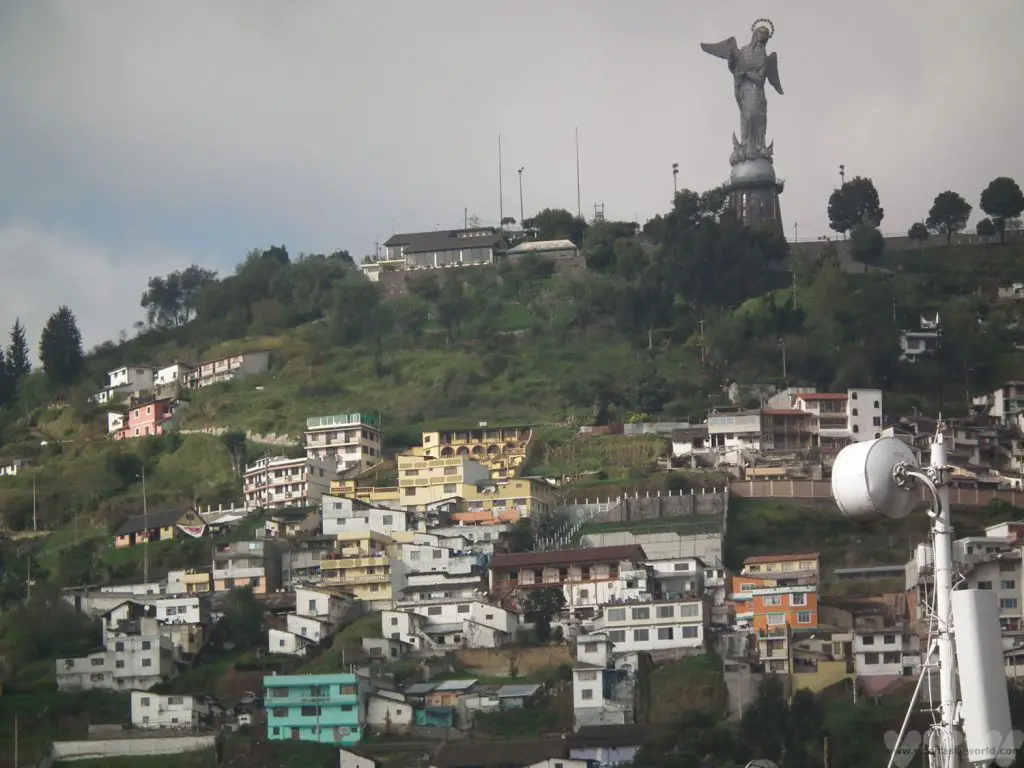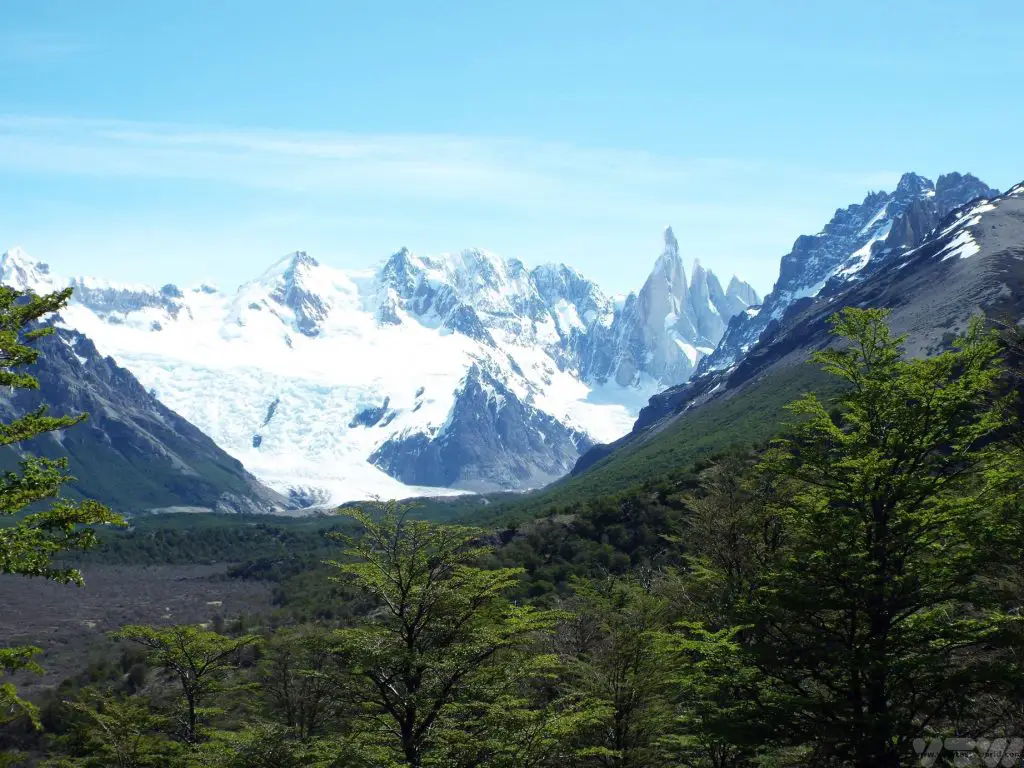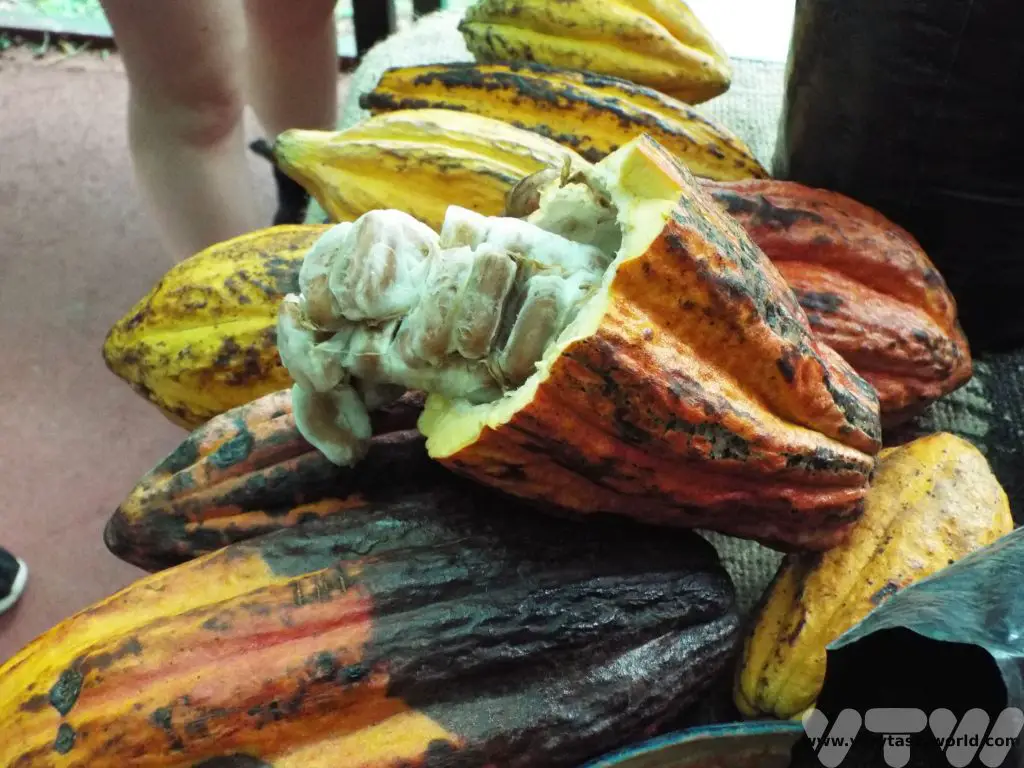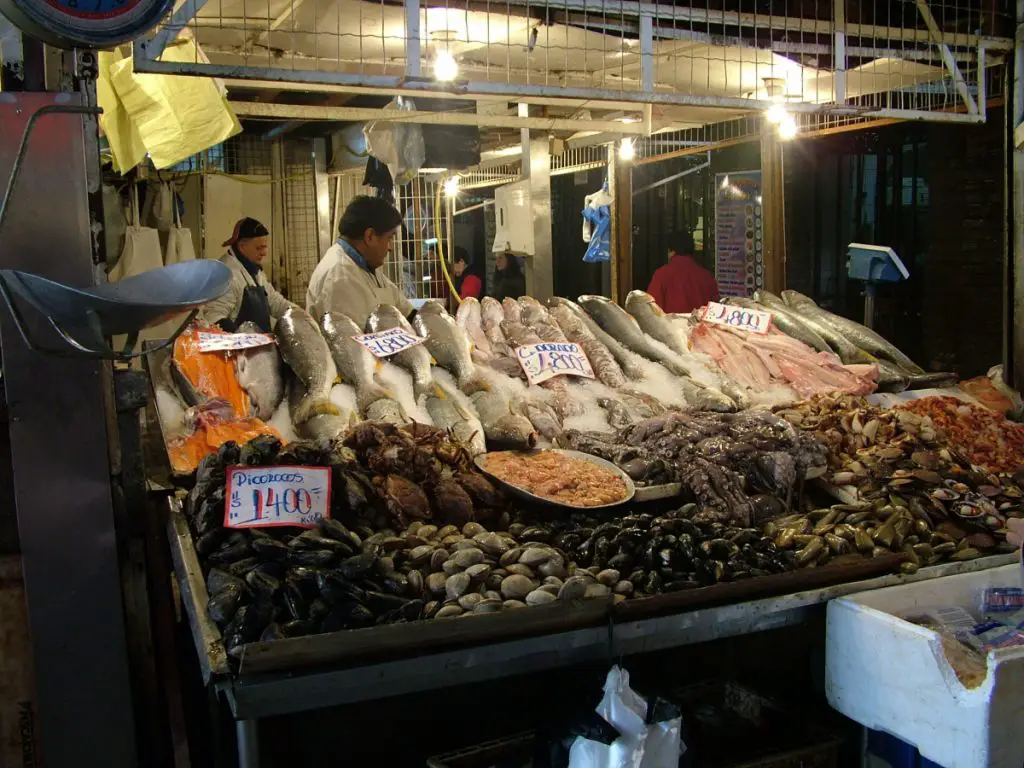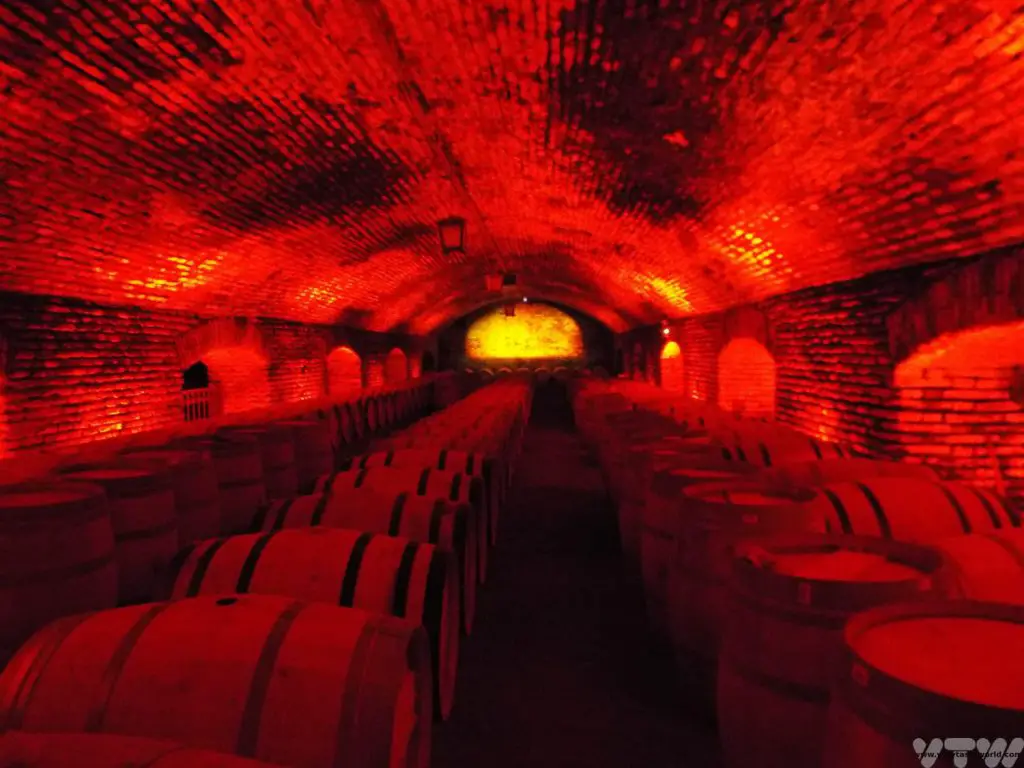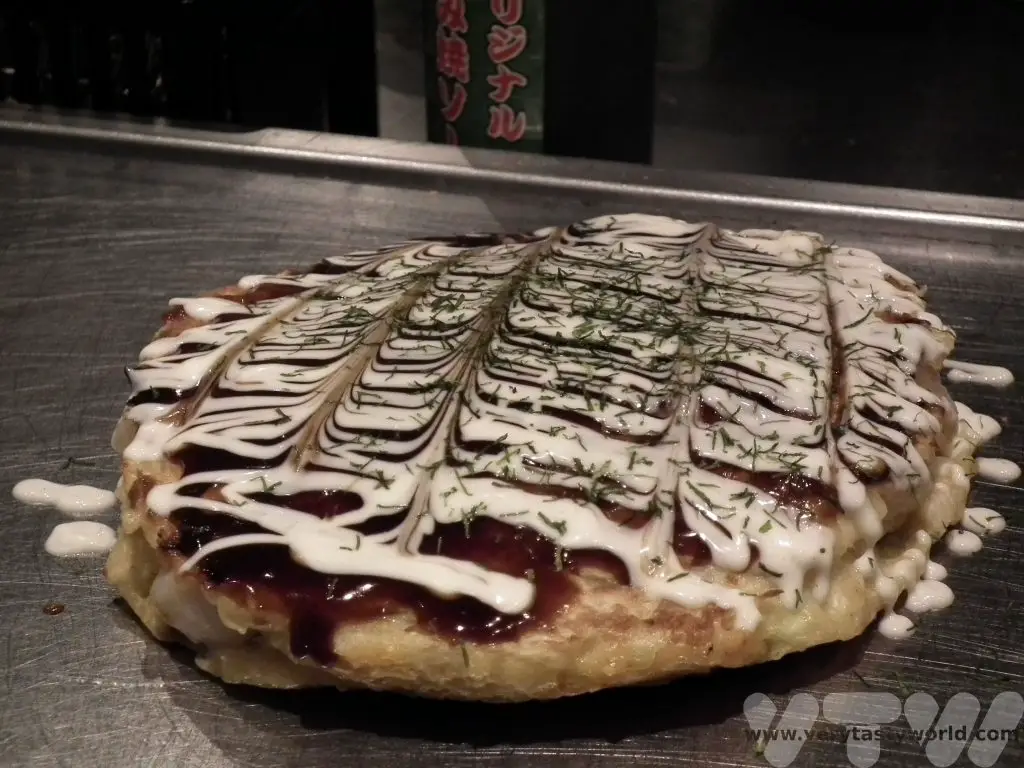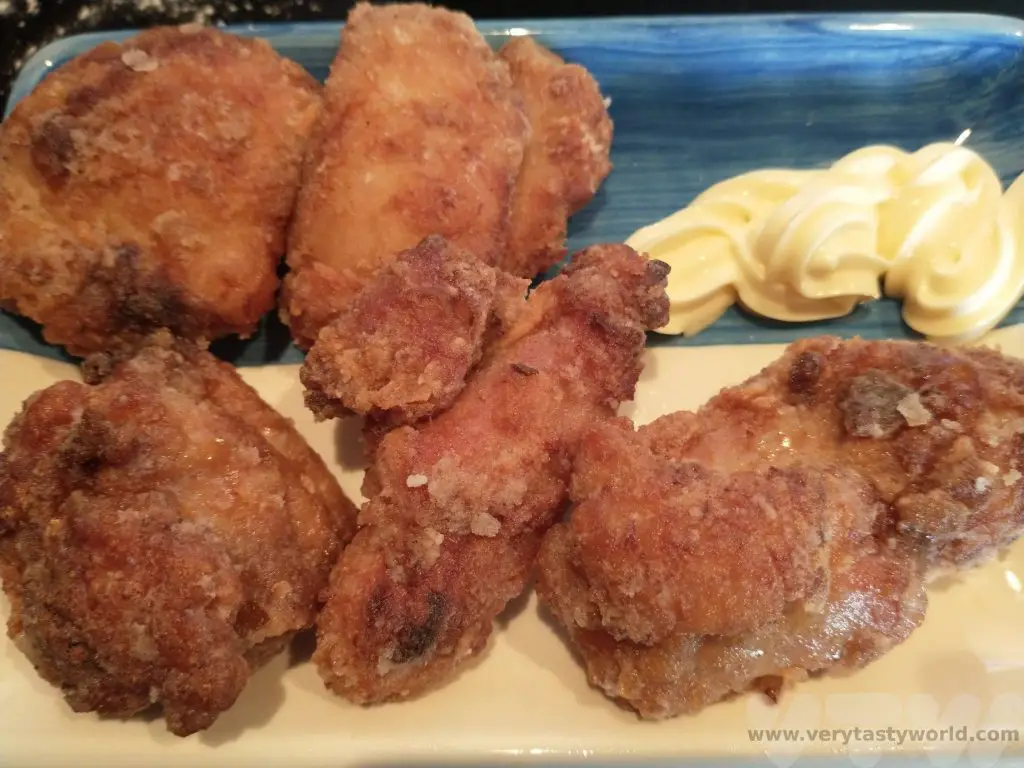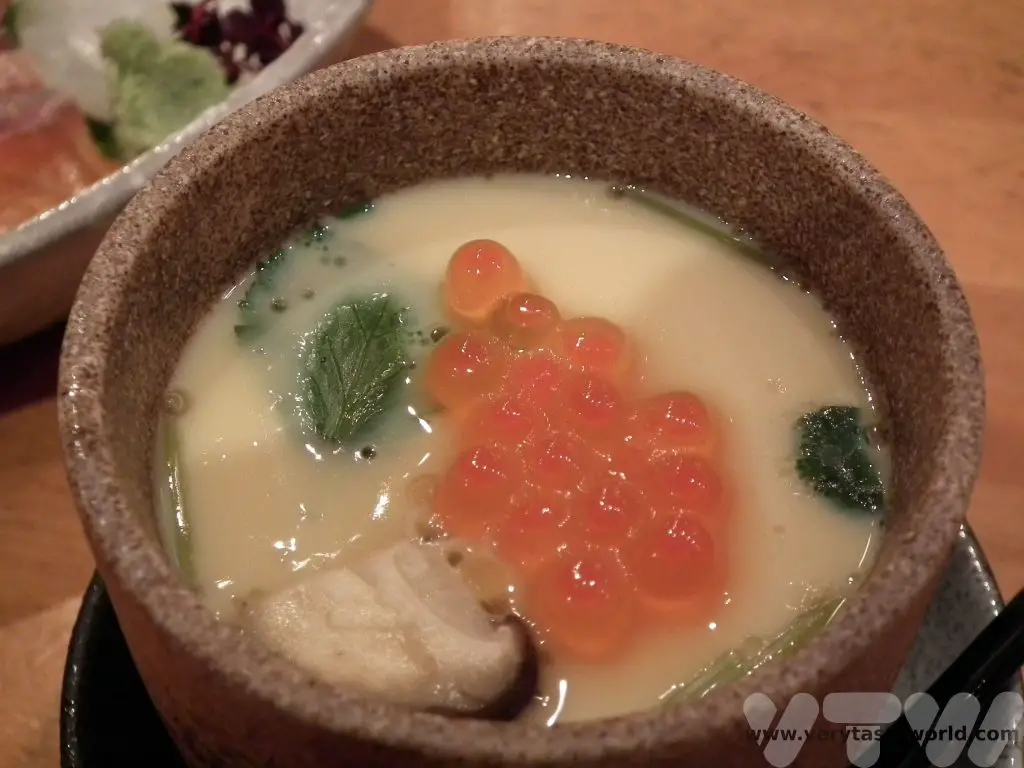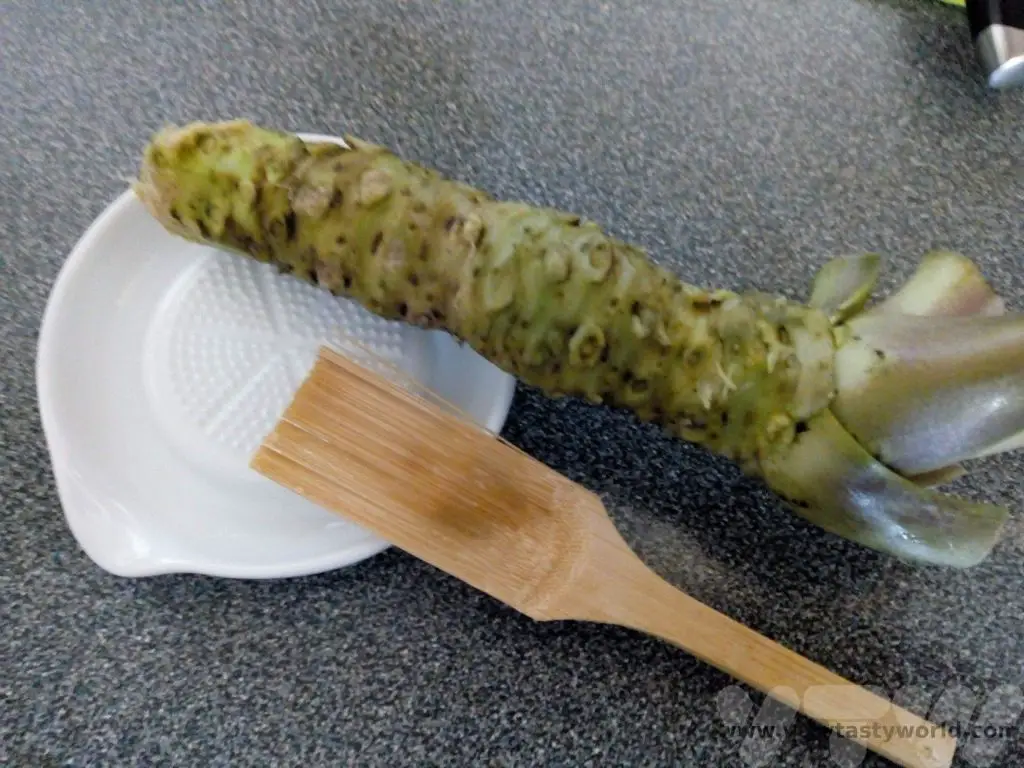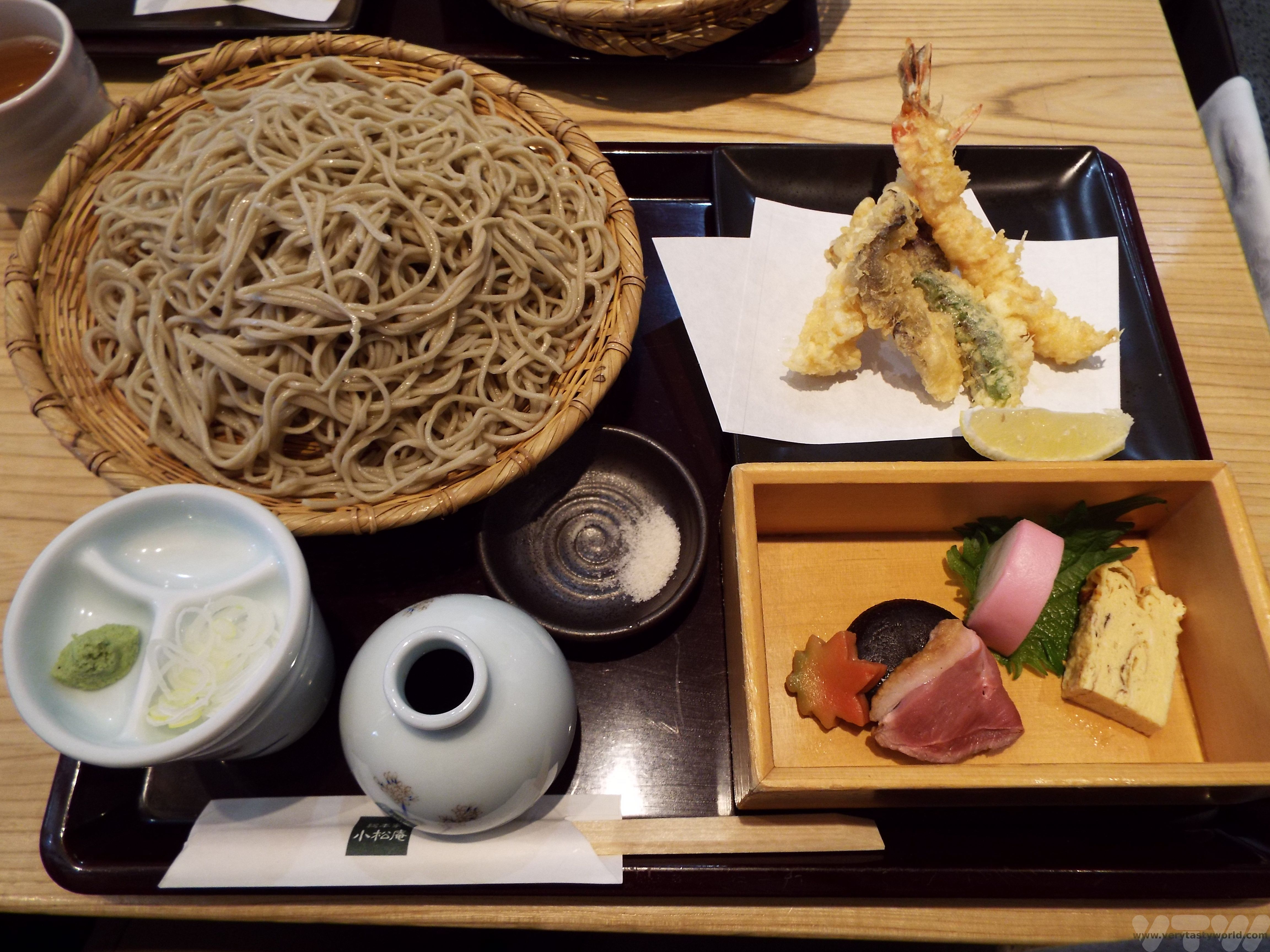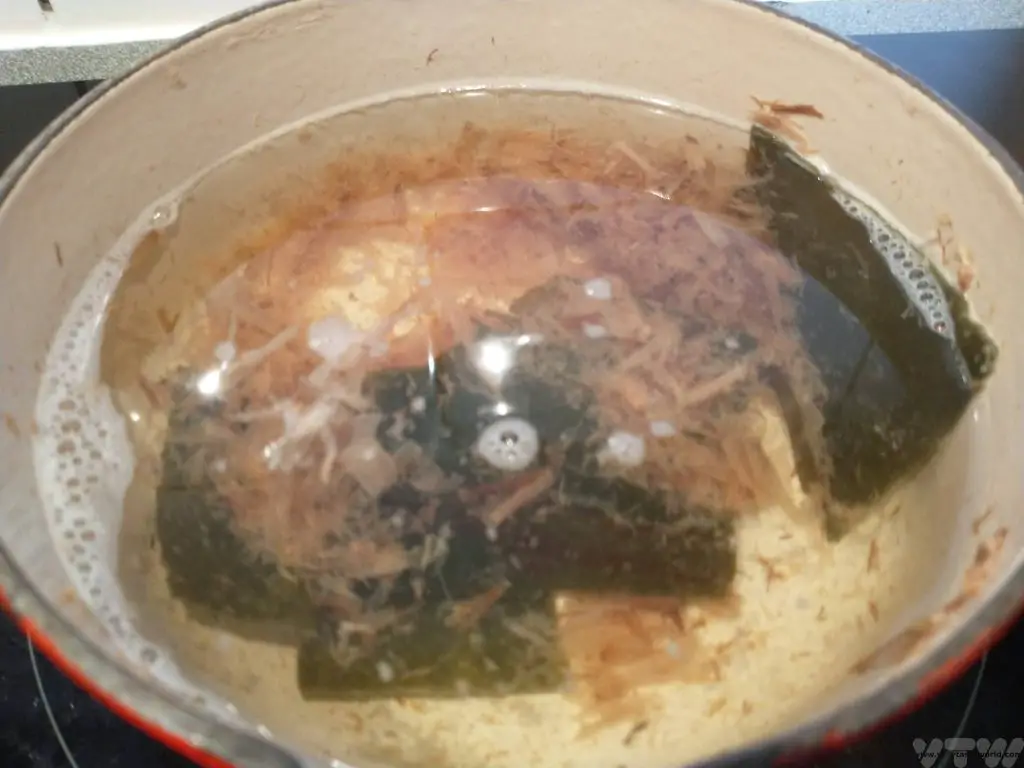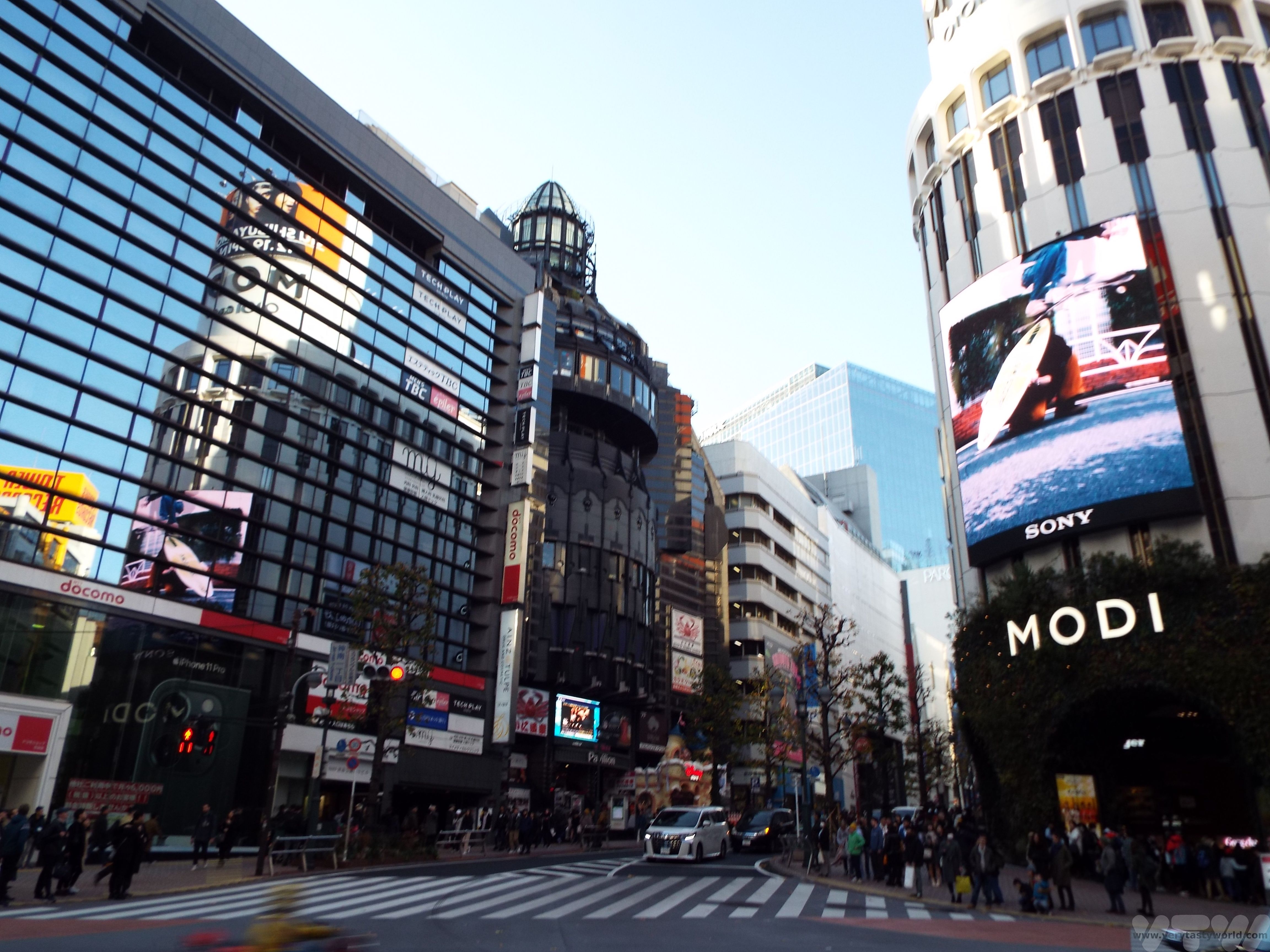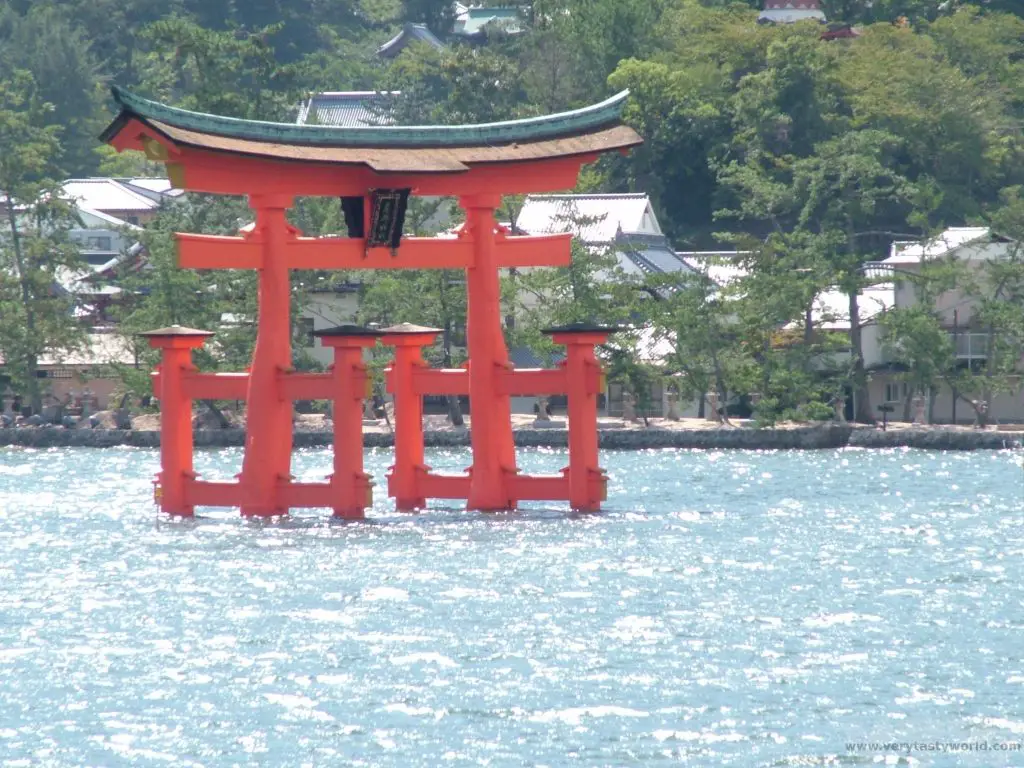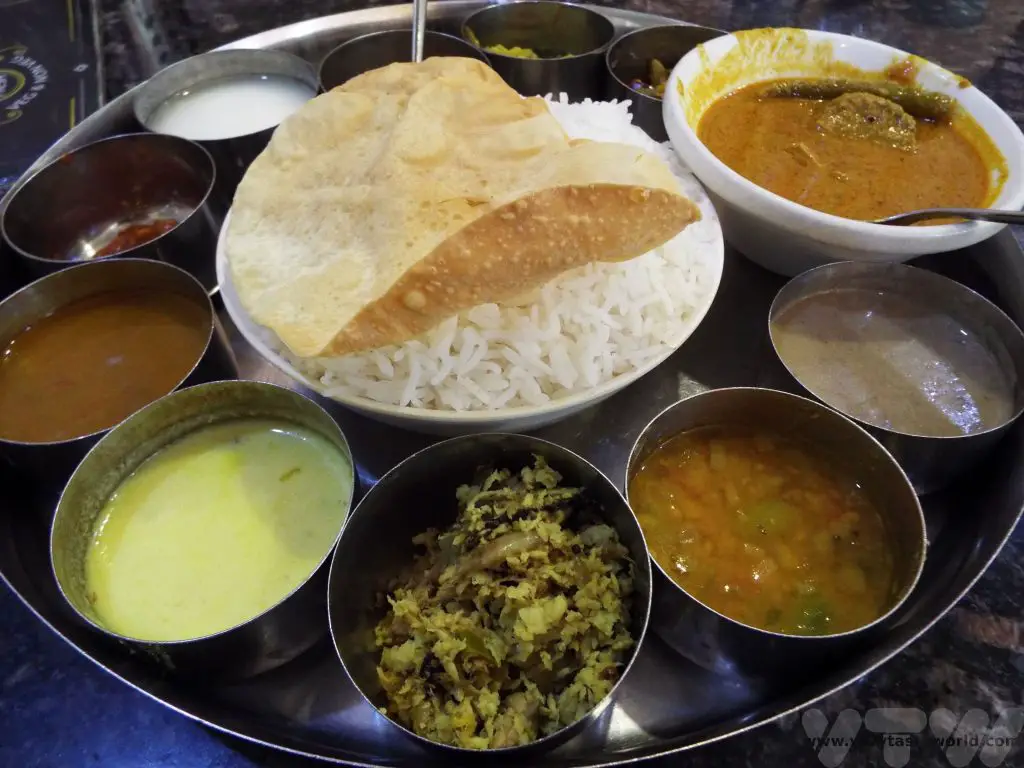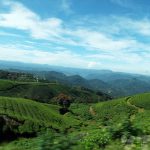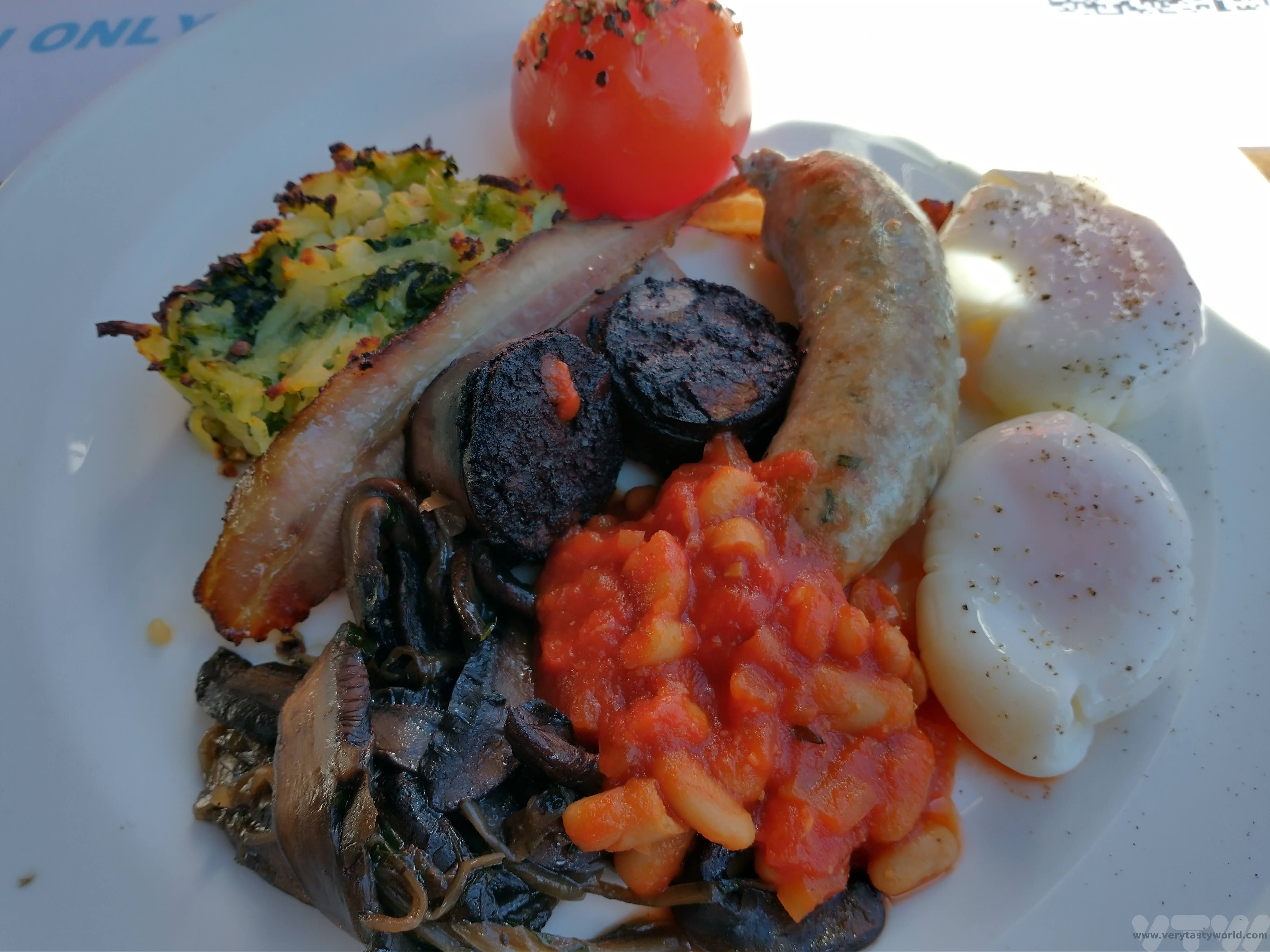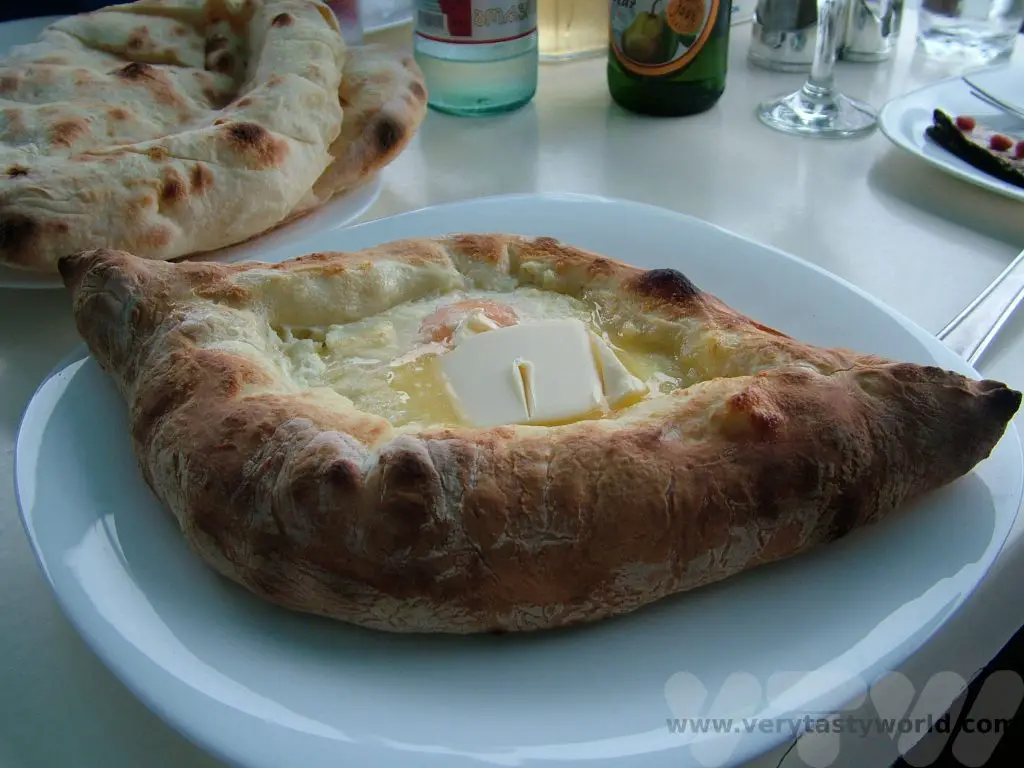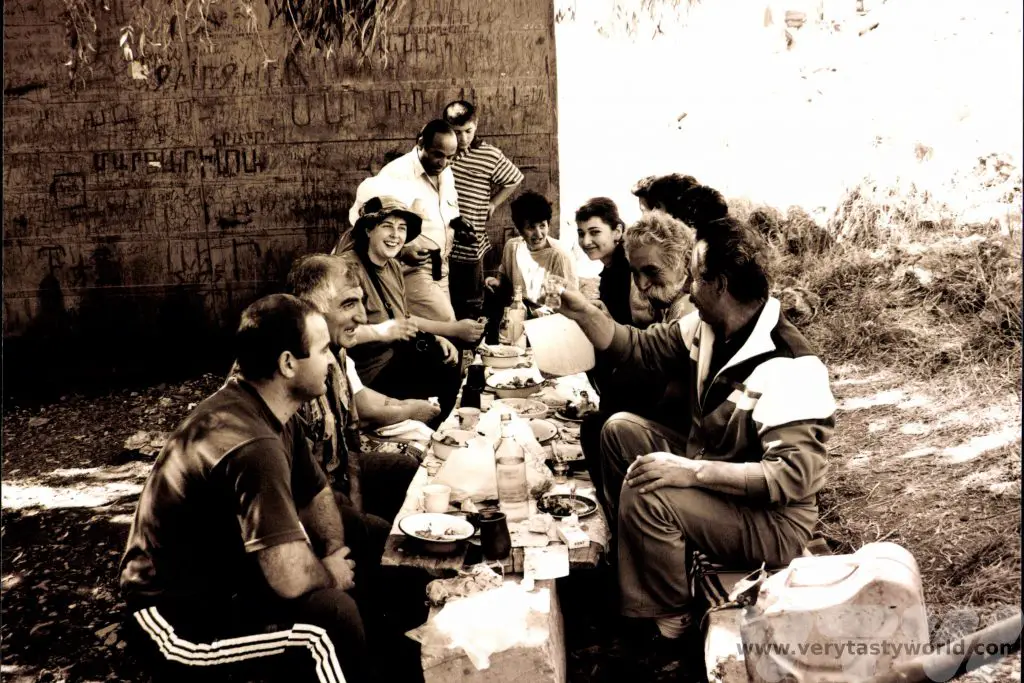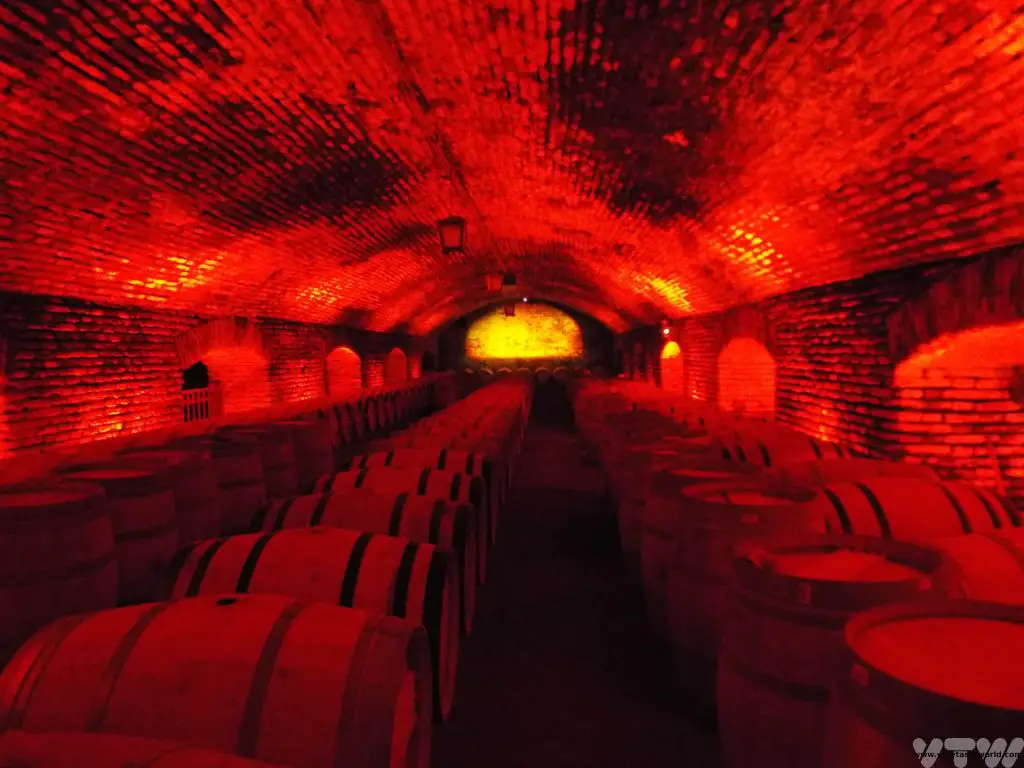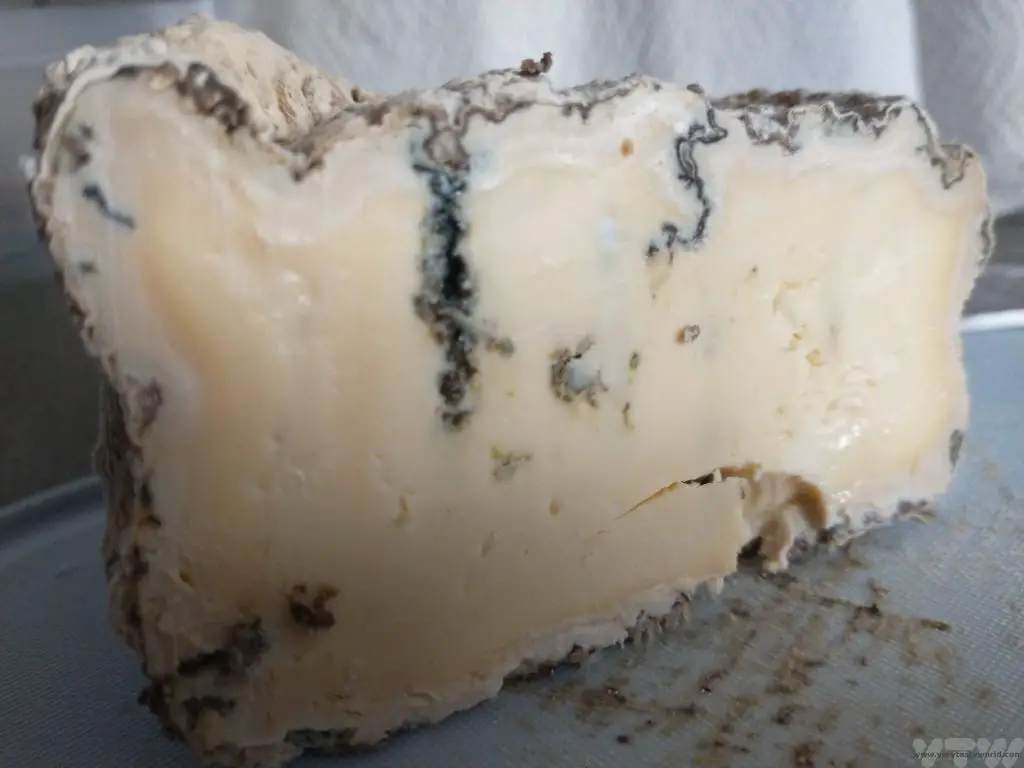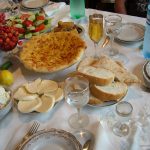Home » Foodie Favourites
Category Archives: Foodie Favourites
Zero Waste Recipes Before Your Holiday
We absolutely hate food waste so whenever are off on a trip we try to make sure we have used up all the perishable food before we leave. But there are usually loads of things to do with all the packing and preparation for the trip. So we want some simple recipes that not only use up food but are easy to make and, above all, quick. Here are some ideas for zero waste recipes that will use up food before you hit the road.
None of these recipes take more than ten minutes’ preparation time. They may need a bit of cooking but you should be okay to abandon them in the oven or on the hob while you finish packing for your trip.
Fruit and Vegetables
If you are travelling for more than a few day, most vegetables will perish before you return, so it’s good to use them all up.
A great way to use up random leftover vegetables is to make soup. We often make an ‘end of the week’ soup even if we aren’t travelling imminently, to use all the spare vegetables. There is no fixed recipe.
Multi Vegetable Soup Recipe
Chop up all your spare vegetables into cubes that are roughly the same size. Place in a pan, top up with water to just about cover the veg, add a couple of stock cubes and bring to the boil. We tend to add any herbs and spices that we have in the cupboard. Favourites are smoked paprika, turmeric and cumin but add any combination you like. Cayenne pepper adds a touch of spice, Worcestershire sauce a bit of umami. Salt and pepper are essential. As soon as the vegetables are soft, whiz everything together with a hand blender to get a consistency you like – chunky or smooth, both are fine. Add a bit more water/stock if the soup’s too thick. If you have a block of cheese that won’t last until you get back, grate that and chuck it in. You can make the soup any time of the day and just reheat when you want to eat it -don’t let it boil, just warm it through. And you can be sure that you will have consumed at least ten of your ‘five a day’ portions of veg and can feel thoroughly virtuous before you hit the road.
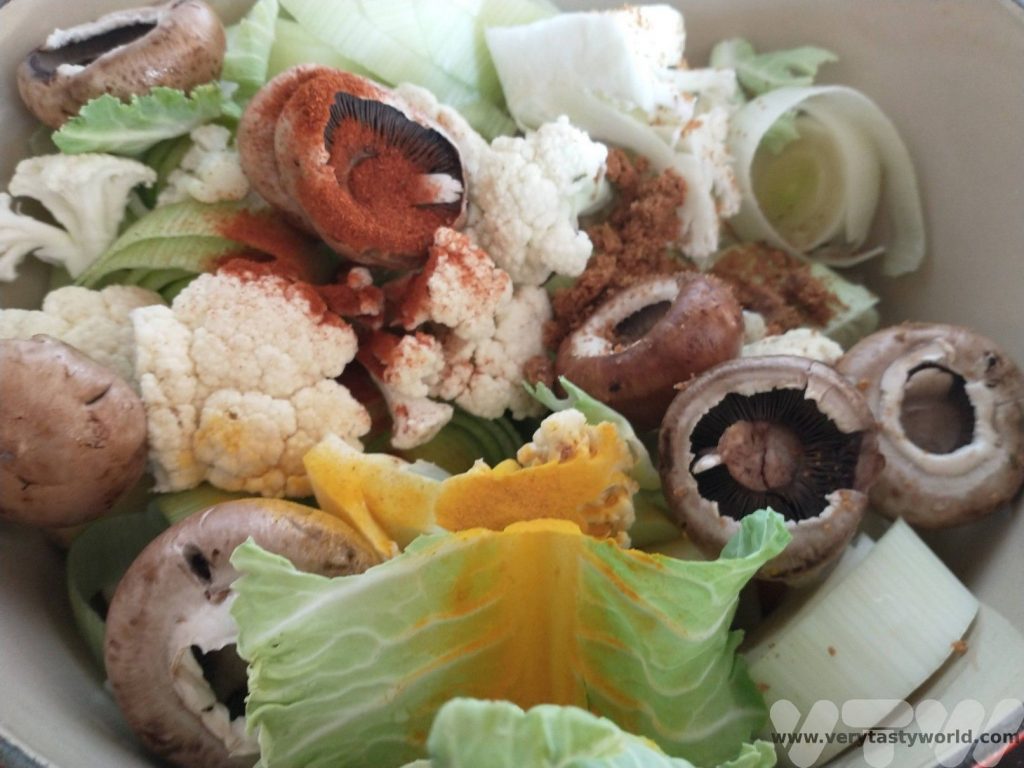
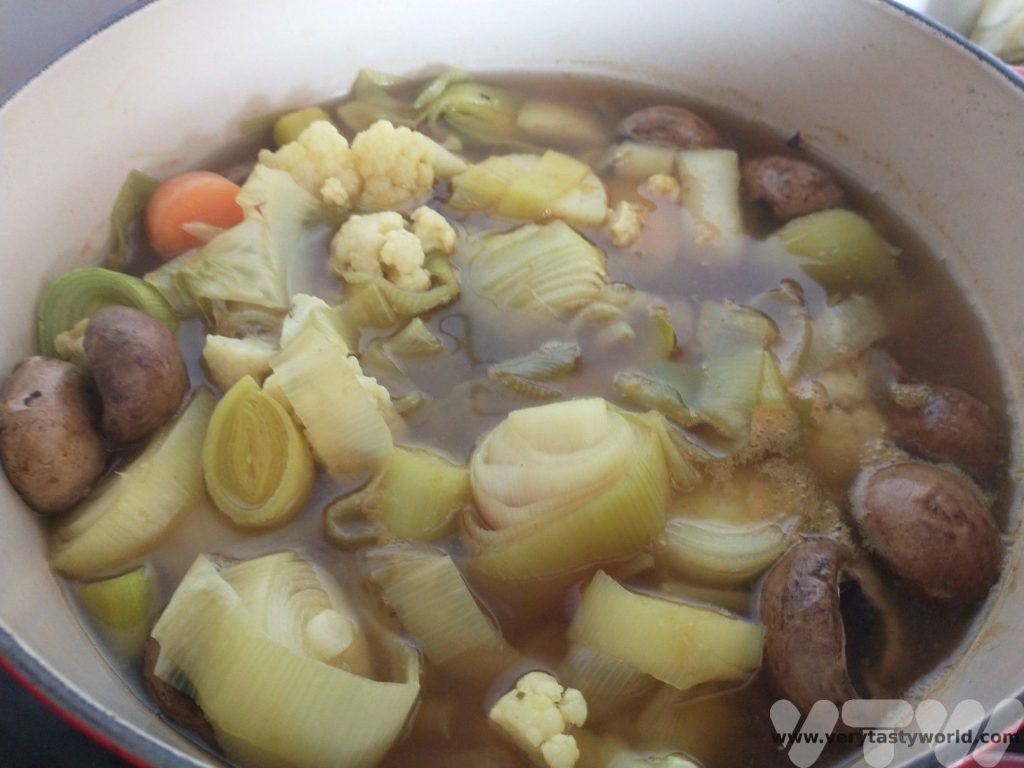
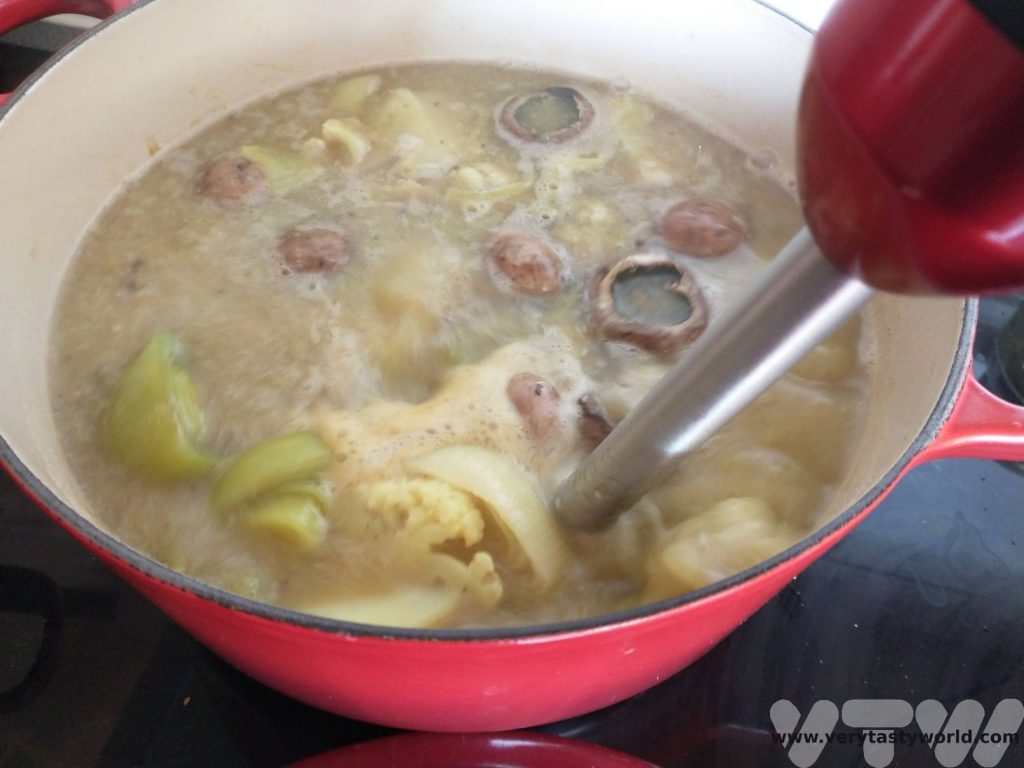
Any soup you don’t manage to eat (and we often end up making a lot of soup) you can just pop into the freezer. Perfect for a light meal when you return home.
Random Roast Vegetable Salad
A roasted vegetable salad is another great way of using up leftovers, especially if you have root veg hanging around. Chop up your vegetables. Cut harder root vegetables like parsnip and carrot or squash into smaller chunks than softer veg such as onions, mushrooms, tomatoes and bell pepper, so that they will cook in roughly the same length of time. Chuck them in a baking dish, slosh some vegetable oil over them, give them a shake and pop into the oven for 35-40 minutes until they are cooked and tender. Let them cool.
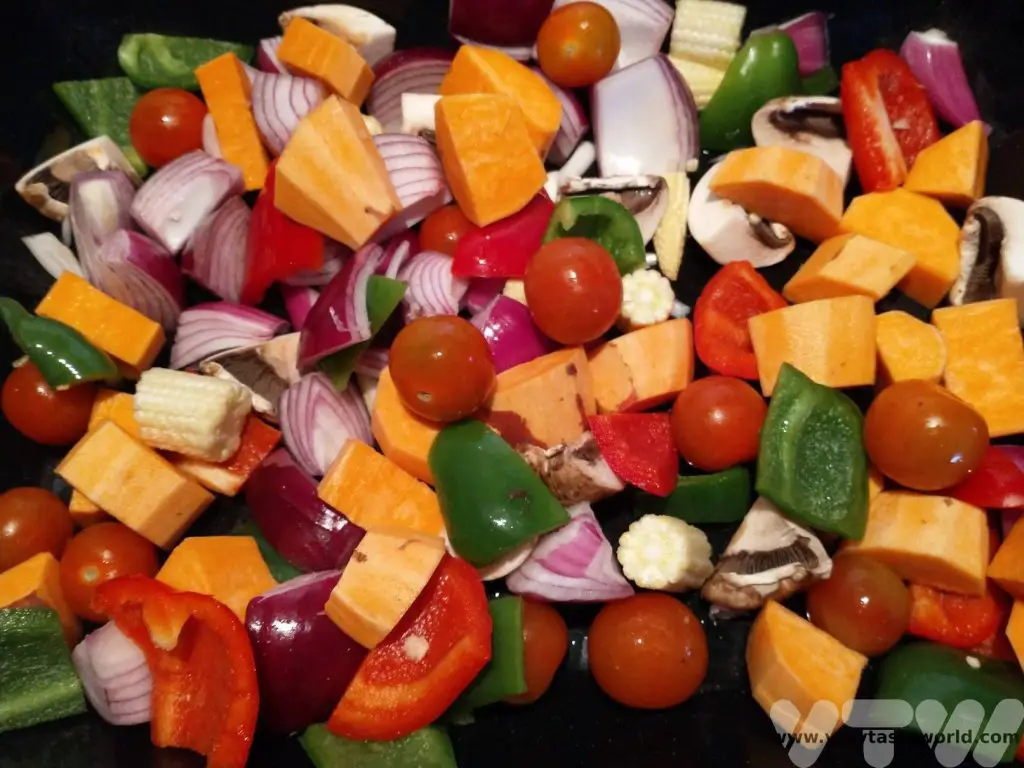
Then you can dress them with a standard vinaigrette – 2 parts olive oil to 1 part vinegar, a teaspoon of mustard and salt/pepper. We like another dressing – finely chopped preserved lemons and pomegranate molasses, with a sprinkle of sumac and black pepper. (The preserved lemons are very salty so we don’t add salt. If you don’t have preserved lemons, squeeze in the juice of a lemon and salt to taste.)
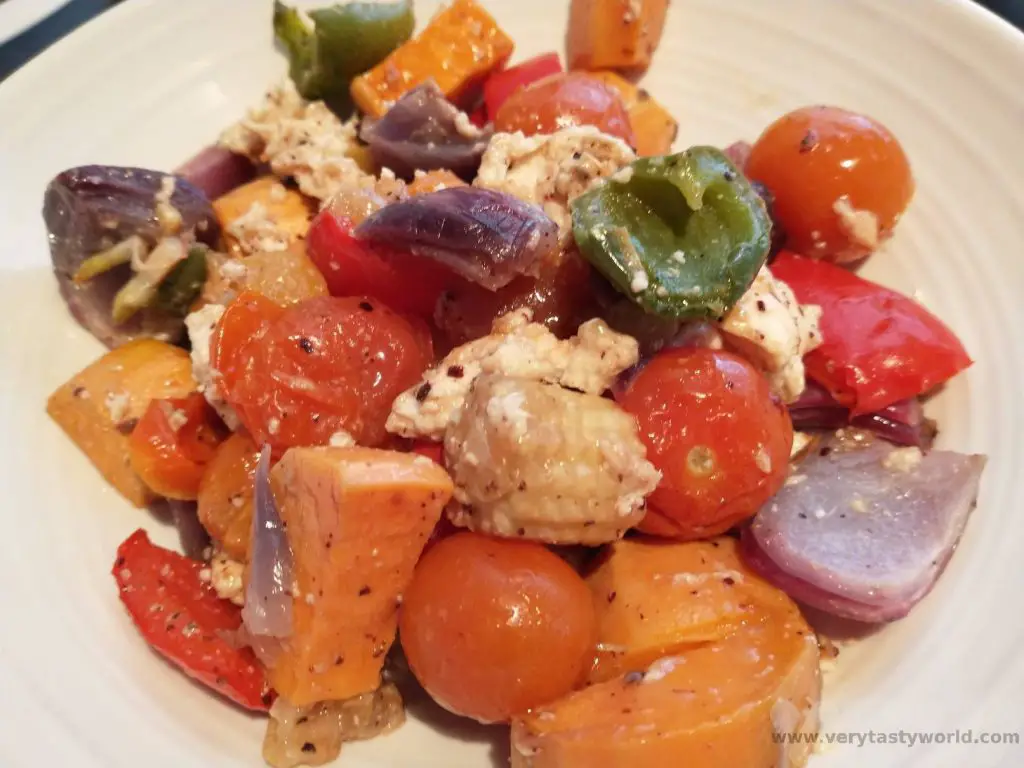
You could also add any leftover cheese. Feta and mozzarella work well. If you have any spare chunks of bread, you could toast them, tear them up into small pieces and add to the salad. They soak up the dressing beautifully.
Preserving Fruit and Vegetables
Freeze citrus fruits. Lemons and limes freeze pretty well. We quite often quarter the citrus fruits before we put them into the freezer. When we get home they are perfect for adding directly to a G&T– the frozen fruit will keep the drink cold (without diluting it) too.
Fruit – Many soft fruits, such as berries, freeze very well. Just pop them into the freezer. Or you can make fruity smoothie. Chuck them all together in a blender, add a dollop of yoghurt if you have some, and a teaspoon of honey if you like some added sweetness, and enjoy.
Salad – it’s often possible to make a pesto with salad leaves. We have a wild garlic pesto recipe where you could substitute salad leaves and any herbs for the wild garlic leaves. Add a clove of garlic or two to add some garlicky warmth. You could use the pesto to eat with pasta or to dress a roast vegetable salad.
Herbs – many herbs can be frozen. You can chop them up and freeze them in ice cube trays with a little water in each section. Once frozen, you can pop out the ice cubes and store them in a bag together. You can use them any time when you get home. And don’t forget that with some soft herbs, like coriander, the stalks have loads of flavour, so don’t forget to freeze those too.
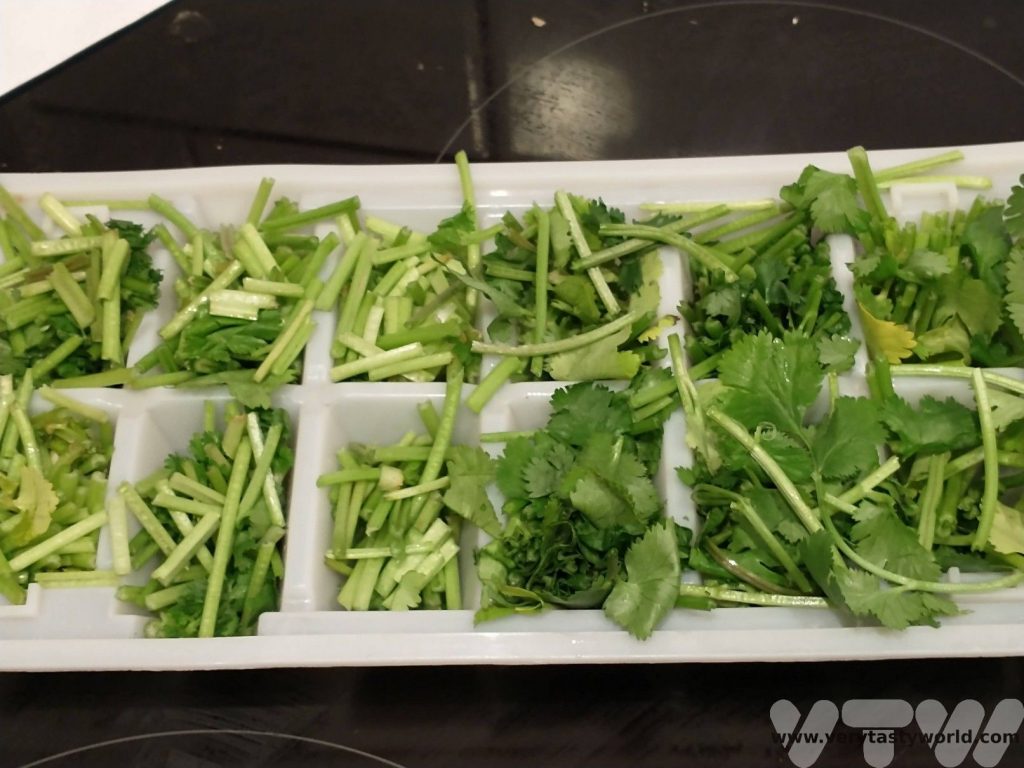
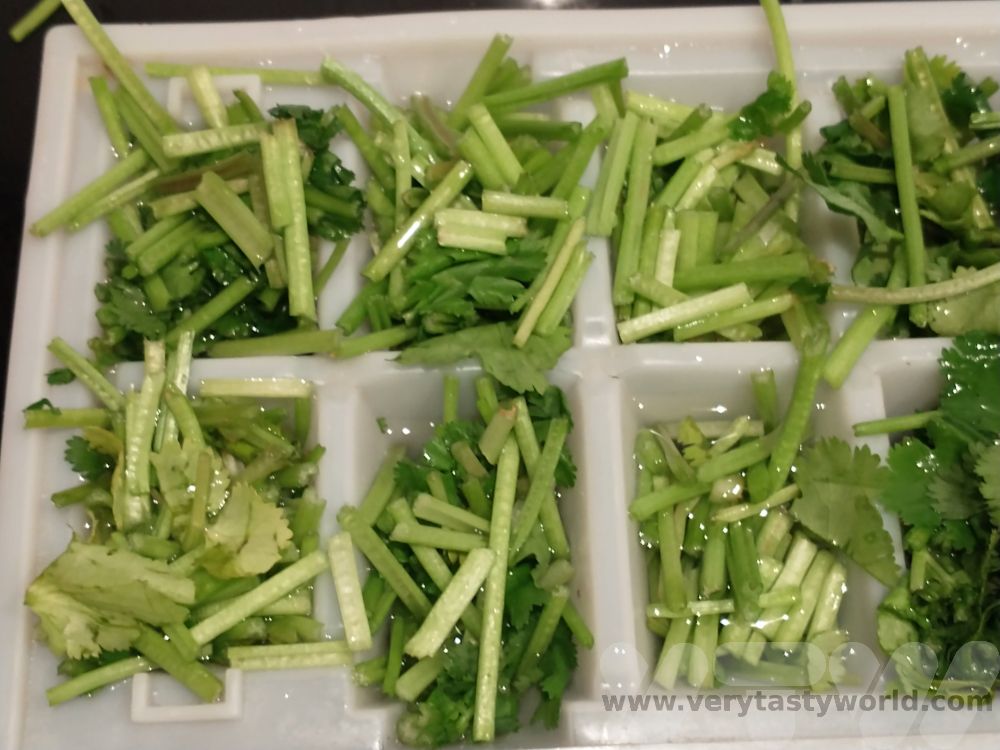
It’s also possible to make flavoured oils using herbs. Mix 100g of a herb (soft herbs such as parsley, coriander, wild garlic, sorrel, oregano/marjoram) with 100ml oil (any variety as long as it’s not expensive extra virgin olive oil as the herbs will mask its subtle flavour) and blend together. We don’t like storing oils for any length of time, even in the fridge, because there is a small risk of botulism. So we freeze them, again in ice-cube trays.
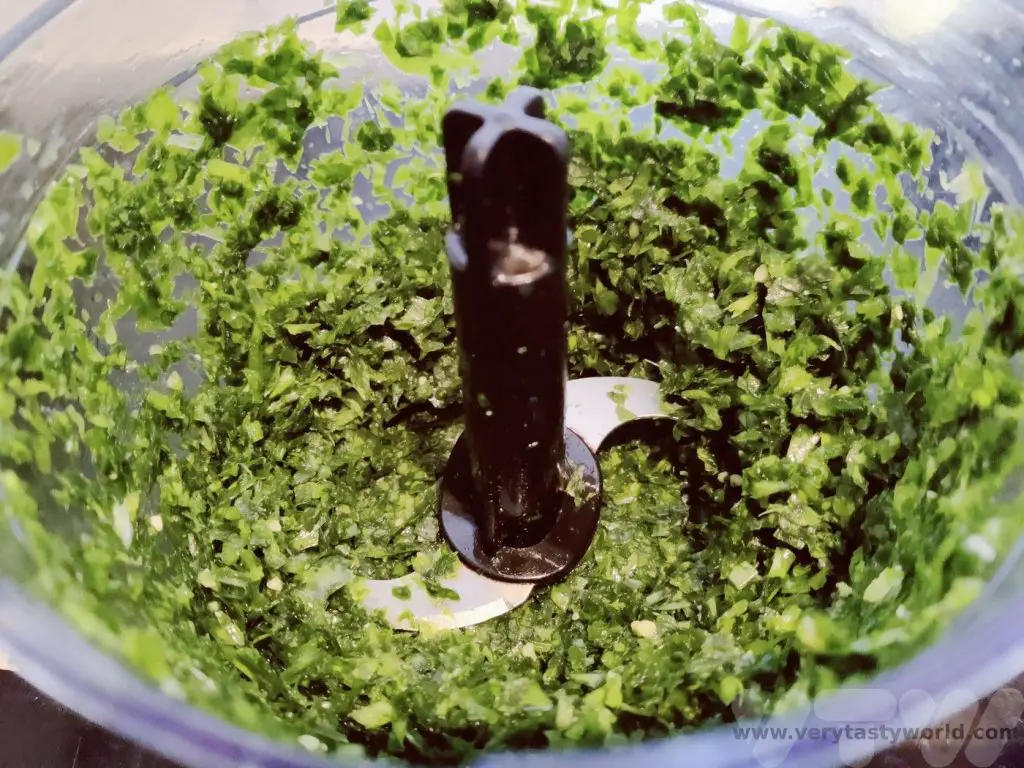
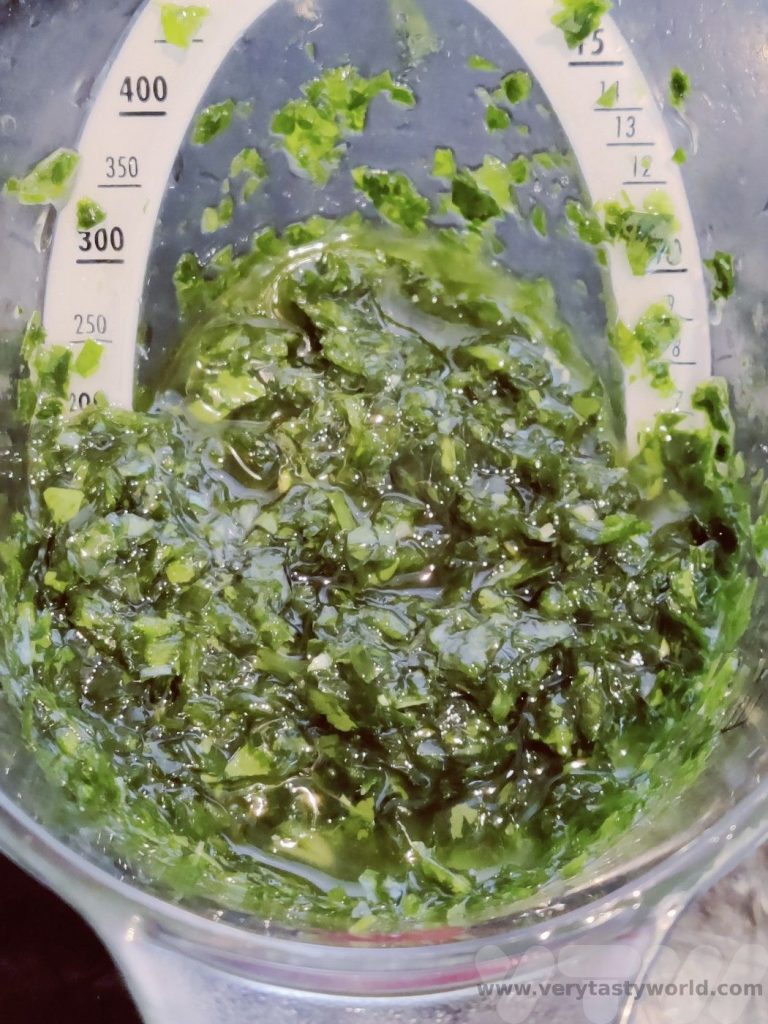
Next time you make a soup you can just take out a cube and melt it in as the soup cooks, splitting the soup with a lovely hit of herby flavour.
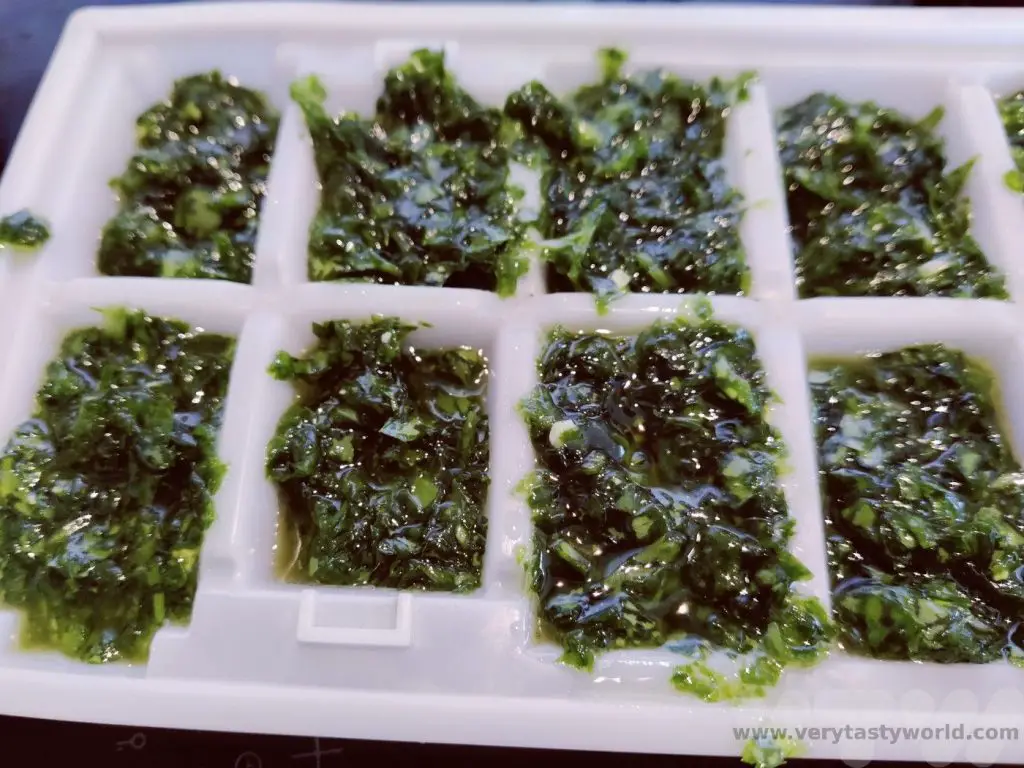
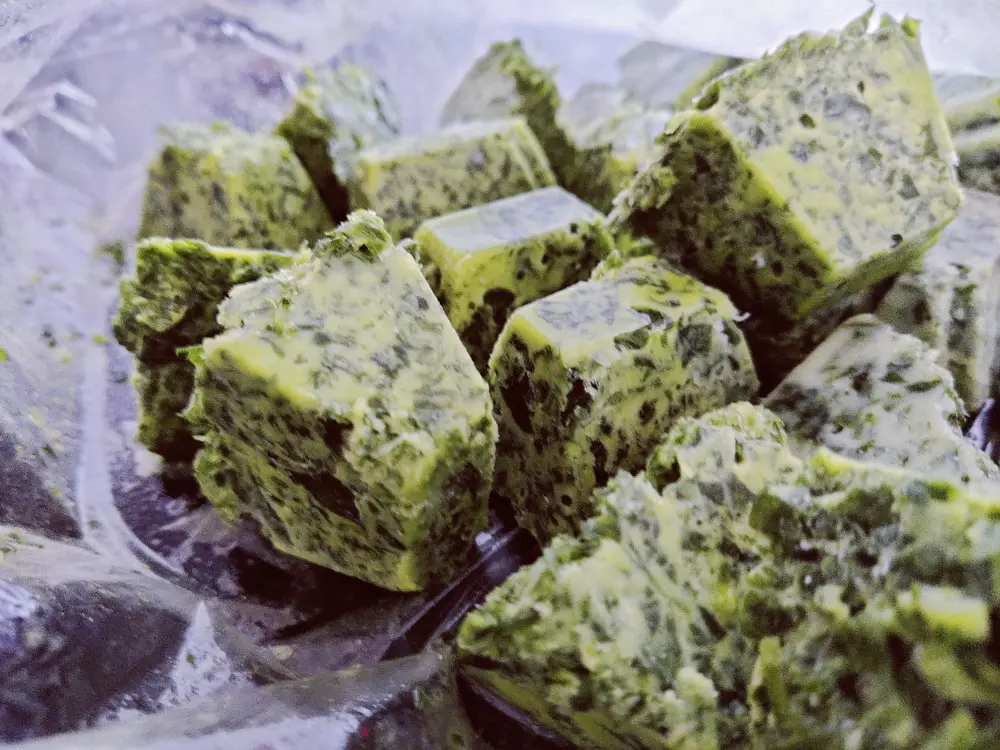
Chillies freeze pretty well, particularly the smaller ones. You can chop or micrograte frozen chillies directly into any dish you are making at a later date after you have returned home.
Getting in A Pickle
Some vegetables don’t freeze at all well – they turn into a mush on thawing. But you can pickle lots of vegetables.
Pickled Cucumber Recipe
Cucumbers are easy to pickle:

Slice them up, pop them in a clean jar. Warm up some vinegar (rice vinegar, white wine vinegar or cider vinegar work well) along with a teaspoon each of sugar and salt. Add a spare garlic clove, some peppercorns or mustard seeds if you like. Heat until the sugar and salt have dissolved and then pour over the cucumbers. Make sure they are submerged in the vinegar before you go away.
This will preserve them until you return home. They’ll be great on top of a burger as a pickle or as a sour side dish accompaniment to any meal.
Pickled Ginger Recipe
Ginger doesn’t freeze very well at all, we’ve found it goes squishy. However, it pickles beautifully. Just peel the ginger (scraping the skin off with a teaspoon is often easier than using a vegetable peeler, which can get a bit clogged up) and slice, then chop into small juliennes about half the length of a matchstick. Then put them into a container – a clean, empty jar – and top up with vinegar. We tend to use white vinegar or rice vinegar rather than a stronger vinegar such as malt or wine. For a 300ml jar, largely full of ginger and topped up with vinegar we add around 2 tsp sugar and 1 tsp salt. Shake to let the salt and sugar dissolve and let the flavours infuse. It will taste brilliant when you get home.
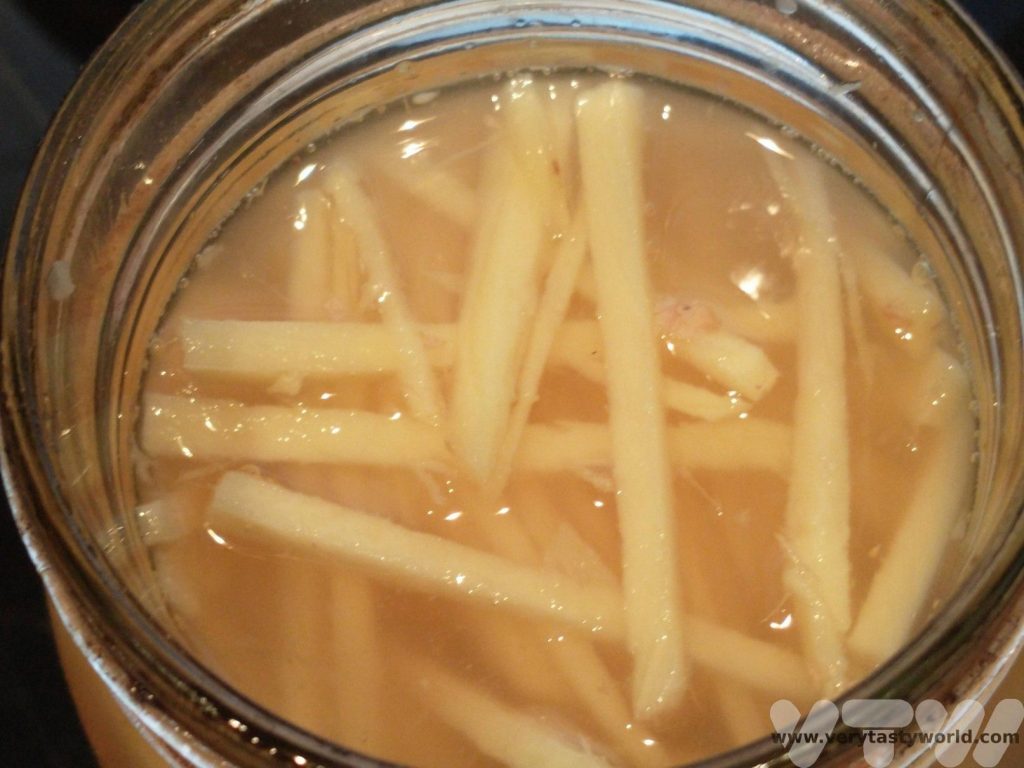
Perfect atop rice dishes or in stir-fries to give an extra zing. We have a recipe for Vietnamese pickled garlic, which isn’t too much trouble to make but needs a bit more work finely slicing the garlic, and is utterly delicious. If you want to pickled whole cloves of garlic to save yourself some time, just don’t bother to slice them.
Dairy
Some dairy products will last for the duration of a short trip. Butter and cheese should be fine in the fridge for a couple of weeks. For longer trips, butter will freeze well, in fact salted butter will last up to a year in the freezer (unsalted will be okay for six months). Hard cheeses are generally fine to put into the freezer and shouldn’t lose flavour when you defrost them naturally. Freezing soft cheese isn’t a great idea as it tends to go a bit watery on thawing. We have a very easy recipe for using up cream cheese.
Cream Cheese And Tinned Fish Dip Recipe
You can make an easy dip using soft cheese by combining a packet of soft cheese with a can of tuna fish or mackerel, a dollop of mayonnaise and some flavouring, depending on what you have in the cupboard. We particularly like a couple of teaspoons of creamed horseradish, but celery salt, cayenne, paprika and/or a squeeze of lemon juice work well. We used smoked fish here, but it works really well with tinned fish.
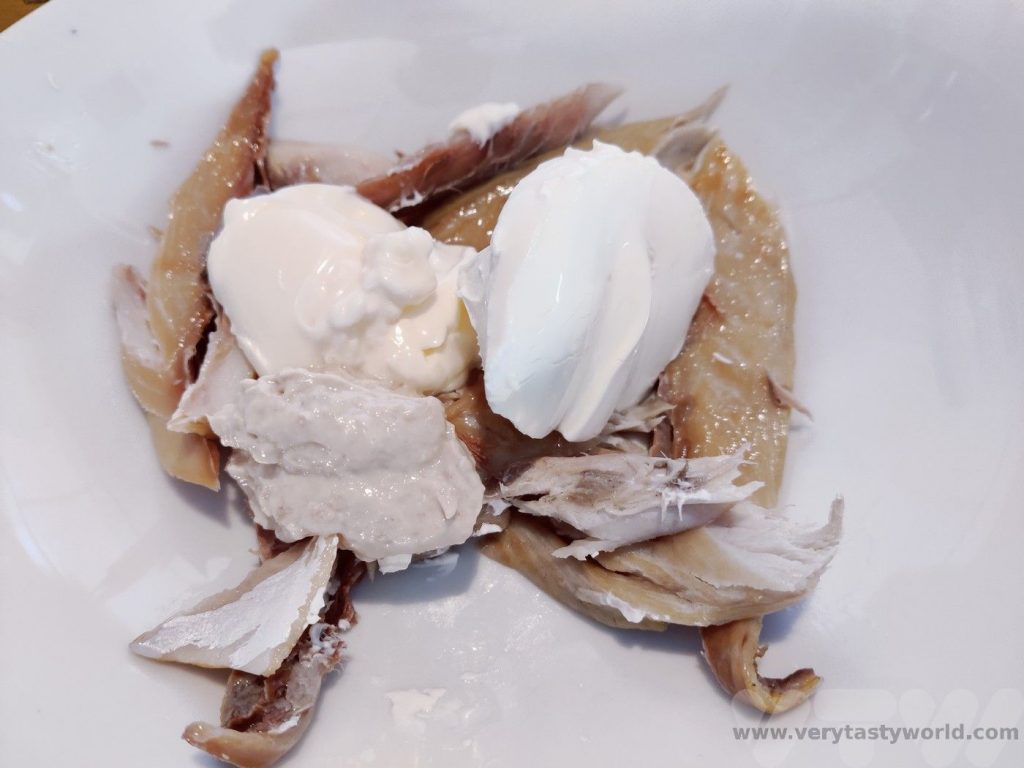
Sprinkle in salt and pepper and mix it all together. You can serve it as a dip with raw vegetables such as leftover carrots, celery, cauliflower or cucumber, cut into juliennes.
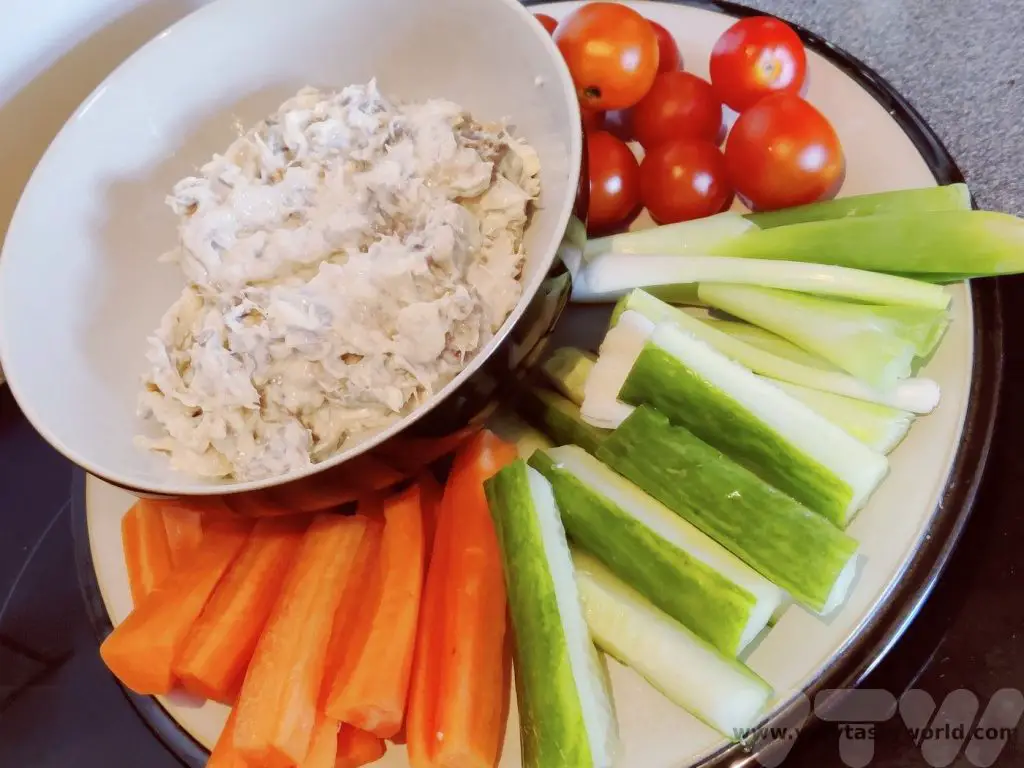
It’s great on toast too, especially if you need to use up some bread.
Yoghurt – can be stirred into your soup to add a bit of tang. If you have a load of fruit that you need to eat, chop it up, bung it in a blender with the yoghurt and create a lovely smoothie. Yoghurt is also used in overnight oats – a really great breakfast for travellers (see below).
Your Daily Bread
Make sure the bread bin is empty – you don’t want to come back to the remnants of a mouldy loaf which you’ve forgotten to eat! If you have some sliced bread left over you can toast the slices, cut them into cubes and add them to your vegetable soup or salad as croutons. If you have some garlic kicking about, peel a clove and rub it onto the (whole) toasted slice of bread before cubing. Or you can just toss them in olive oil and bung the cubed bread into the oven or air fryer for a few minutes until they are golden brown.
Breakfast of Champions for the Day of Travel
Overnight oats is a really easy breakfast that uses up fruit and dairy and can be fully prepared the night before. Again, it’s a really flexible recipe that you can make with any leftover fruit. We always have dried oats in our store cupboard, as they last for ages, and we usually have some dried fruit as well.
Overnight Oats Recipe
Dollop 3 dessertspoons of yoghurt into a bowl (or split whatever you have evenly between the number of people wanting breakfast). Sprinkle 2 dessertspoons of oats over the top. Add chopped fruit. Fresh fruit and dried fruit work well, just use what you have. Mix it all together and pop it in the fridge overnight. It is ready to eat the following morning.
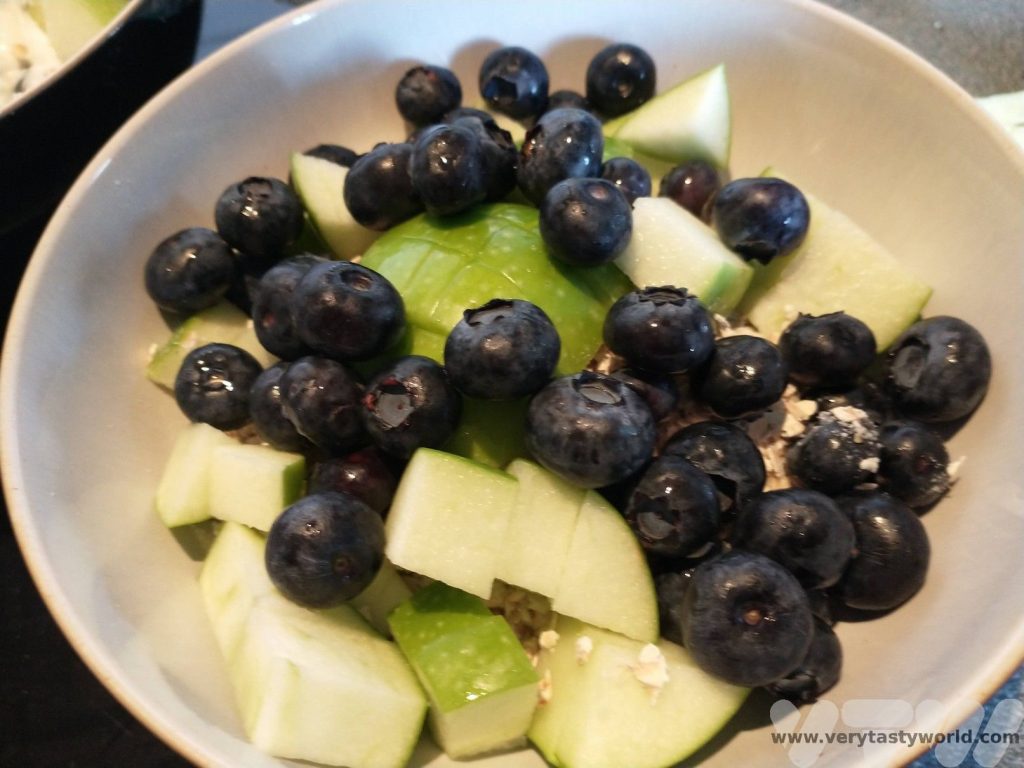
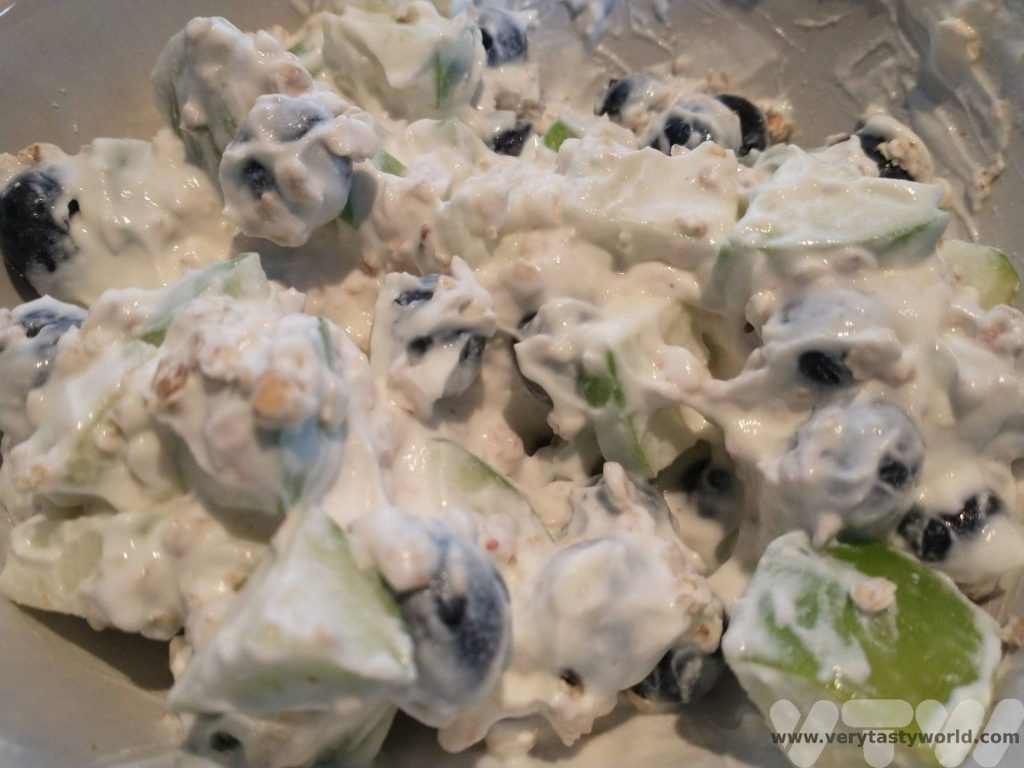
It looks a right mess (you could prettify it in the bowl if you want, but we plan just to scoff it) but it tastes great and will definitely ensure that you don’t go hungry as you embark on your journey.
Happy travels!

- RECIPE Oyakodon Donburi
- Zero Waste Recipes Before Your Holiday
- RECIPE: Vegetable Biryani Tamil Nadu Style
- RECIPE: Vegan Wild Garlic Pesto
- Recipe: Venetian Pasta Sauce
- RECIPE: Biryani Raita Recipe
- RECIPE: How to Make Costa Rica’s Gallo Pinto
- Recipe: Japanese Simmered Pork Belly – Buta no Kakuni
- RECIPE: How to Make Umeboshi
The Food of The Azores
The Azores are a tiny archipelago in the middle of the Atlantic Ocean and an autonomous region of Portugal. Their location means that they are an absolute magnet for marine life viewing because they have resident whales and dolphins, as well as many migratory species, such as the blue whale, which pass close by to the islands each year. We spent a week on Sao Miguel, the largest island, enjoying whale/dolphin watching excursions as well as some activities on the island, such as mountain biking and kayaking. But we didn’t realise what a great foodie destination the islands are. In between the activities we enjoyed some fantastic food of the Azores.
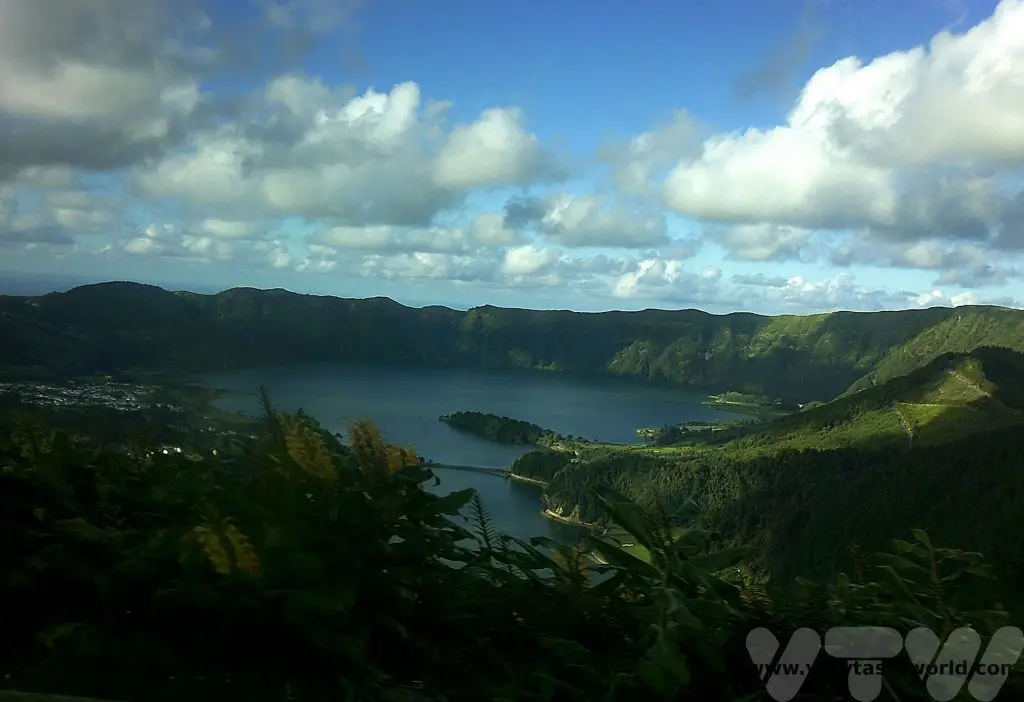
We stayed in the main town of Ponta Delgada. It’s a pretty place and has all amenities within walking distance.
Cheese – Food of the Gods!
One of the things we noticed when travelling through the beautiful green countryside was the number of cows and also fields of ripening corn. The corn is actually more likely to be grown to feed cows than people.
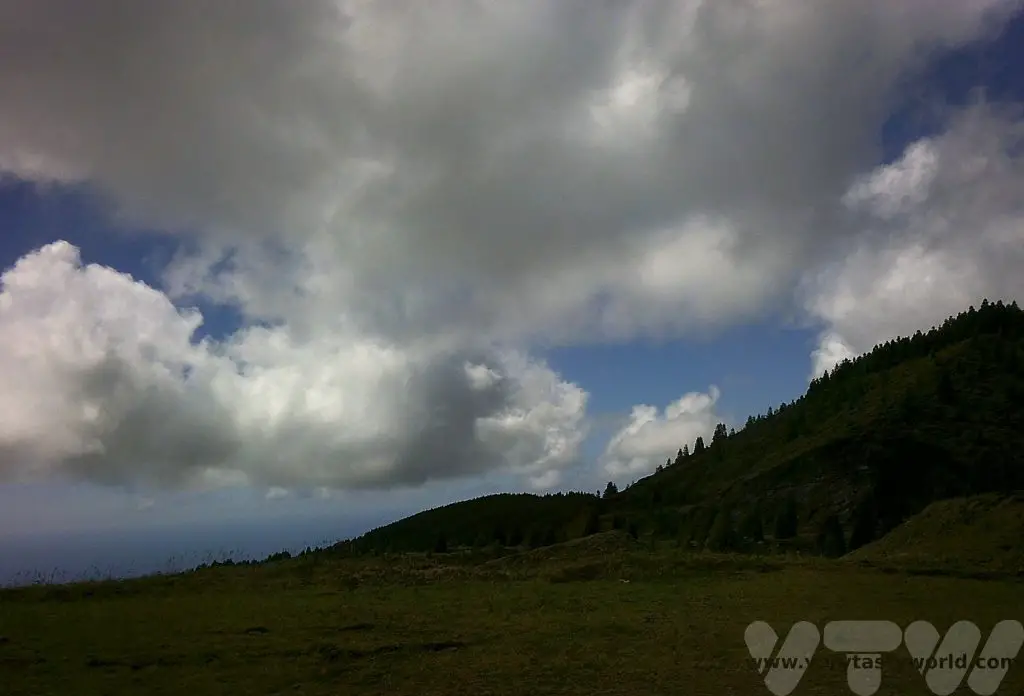

With mild winters and lots of rain the vegetation is lush and that’s perfect for the cows who produce rich milk that is turned into cheese. We were surprised to learn that around 50% of Portugal’s cheese is produced in the Azores.
Another striking feature of the landscape is the plethora of hydrangeas that line the roads. The cows tend to ignore them so they become natural fences that look glorious in the height of summer. We visited just after they were at their best but they still looked very pretty.
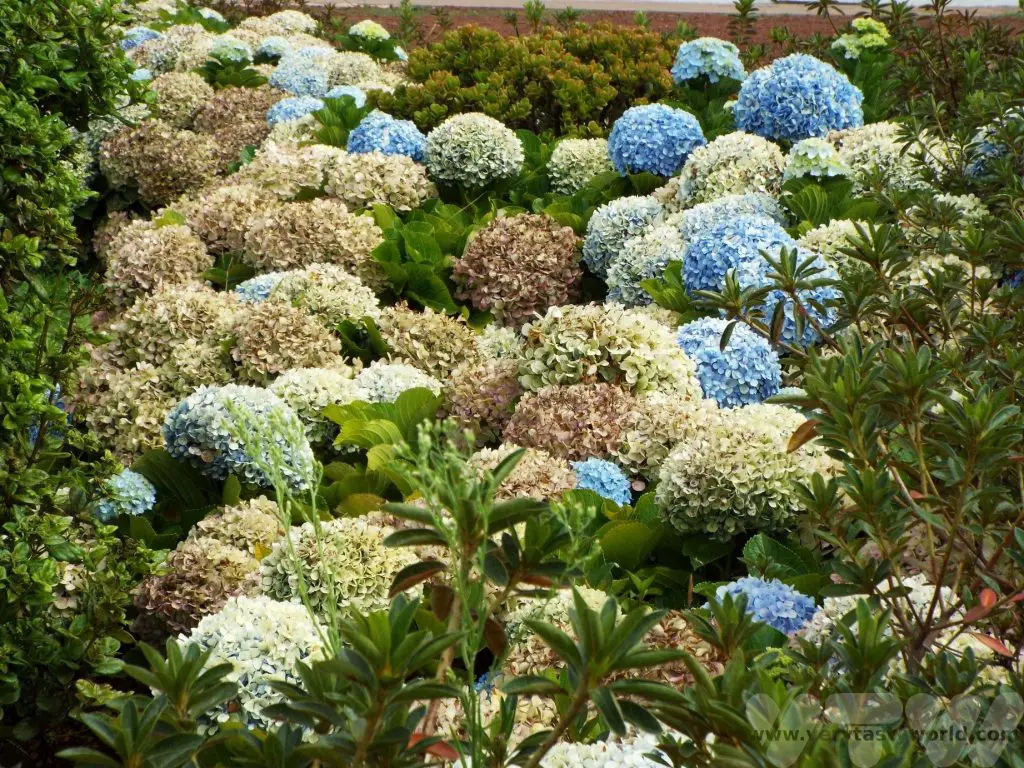
There are various cheese shops in Ponta Delgada – King of Cheese and Prince of Cheese – they aren’t modest about the quality of the product!
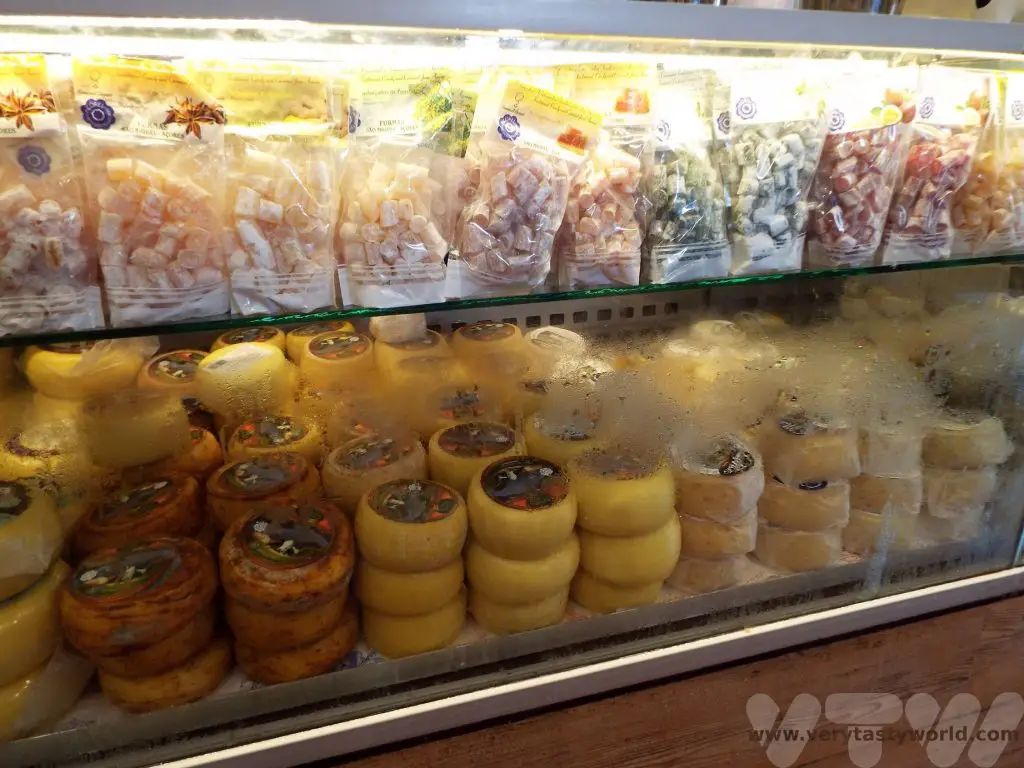
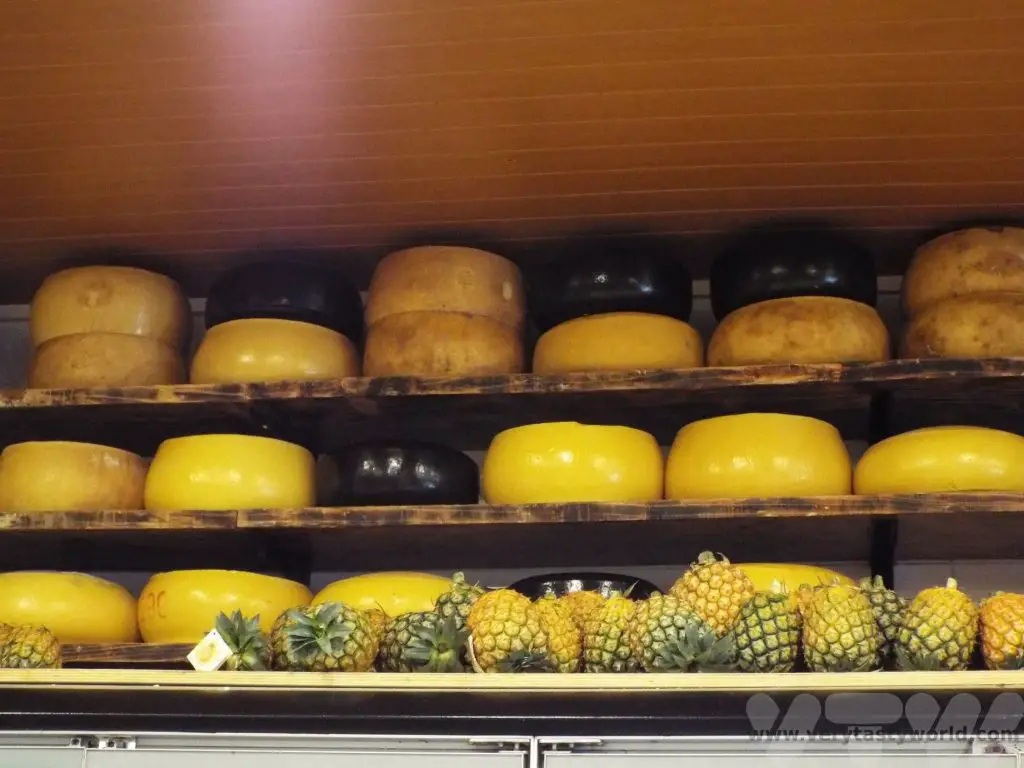
It’s fun visiting the shops – you can let them know about your cheesy preferences and they will recommend particular flavours and offer you a sample. We were keen to bring some cheese home and they were able to vacuum pack some very large slices for us so that we could store them in our hotel fridge and get them on the flight home. They survived very well and made sure that we weren’t going to run out of cheese for several weeks.
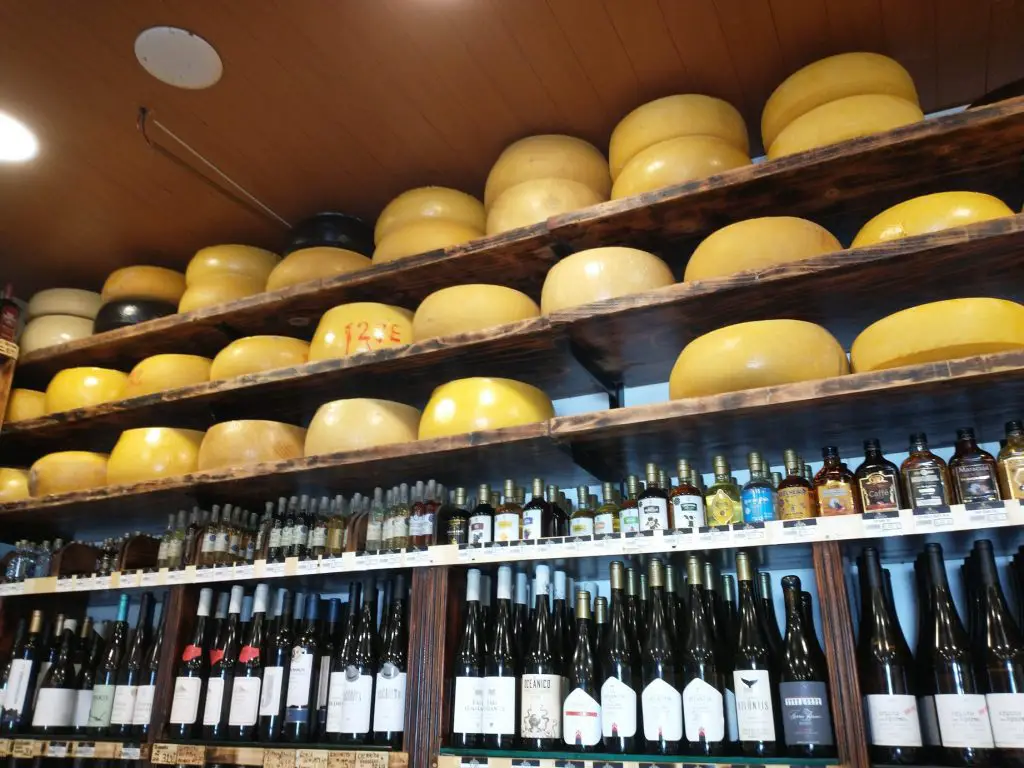
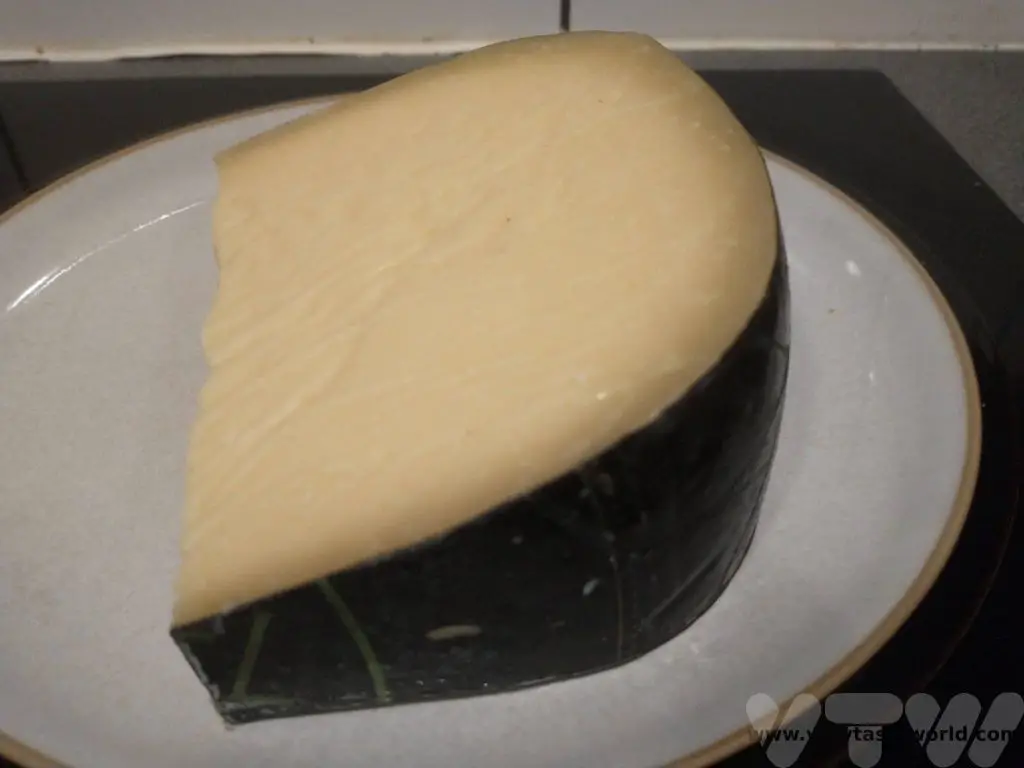
Sao Michel has a black rind and is the premier cheese of the island we were staying on. It’s a hard, very mature cheese with a lovely sharp flavour.
Sao Jorge cheese is produced on the Azorean island of the same name. It is a semi-hard cheese made from unpasteurised milk. It is milder than the other cheeses, with a nutty flavour
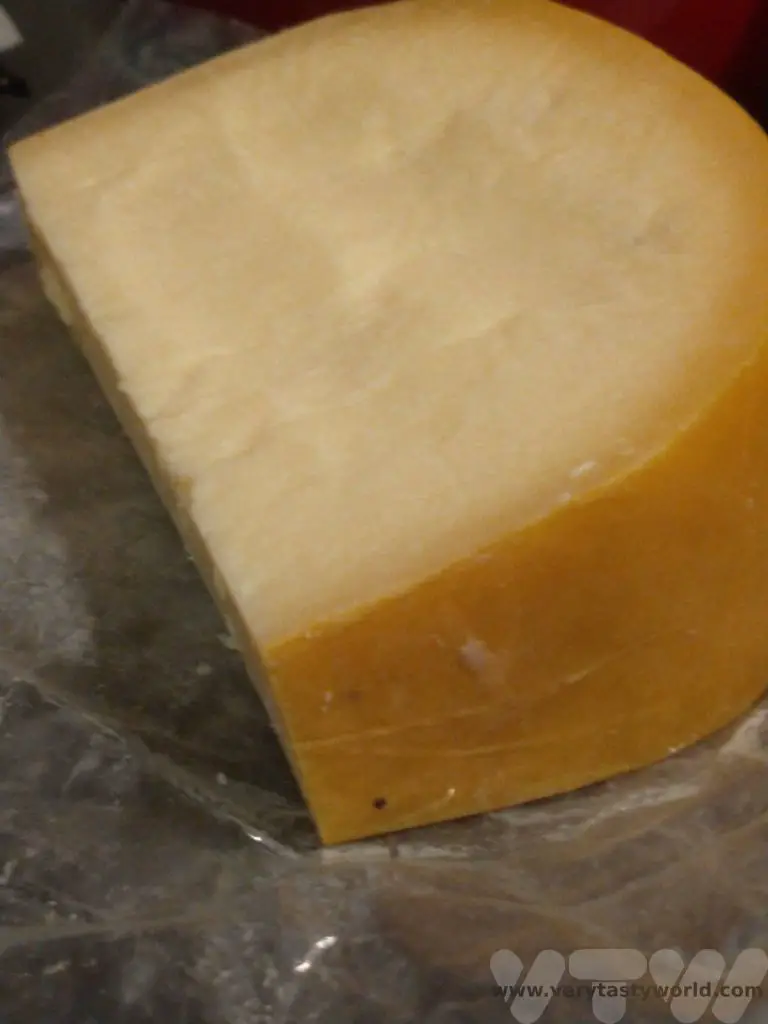
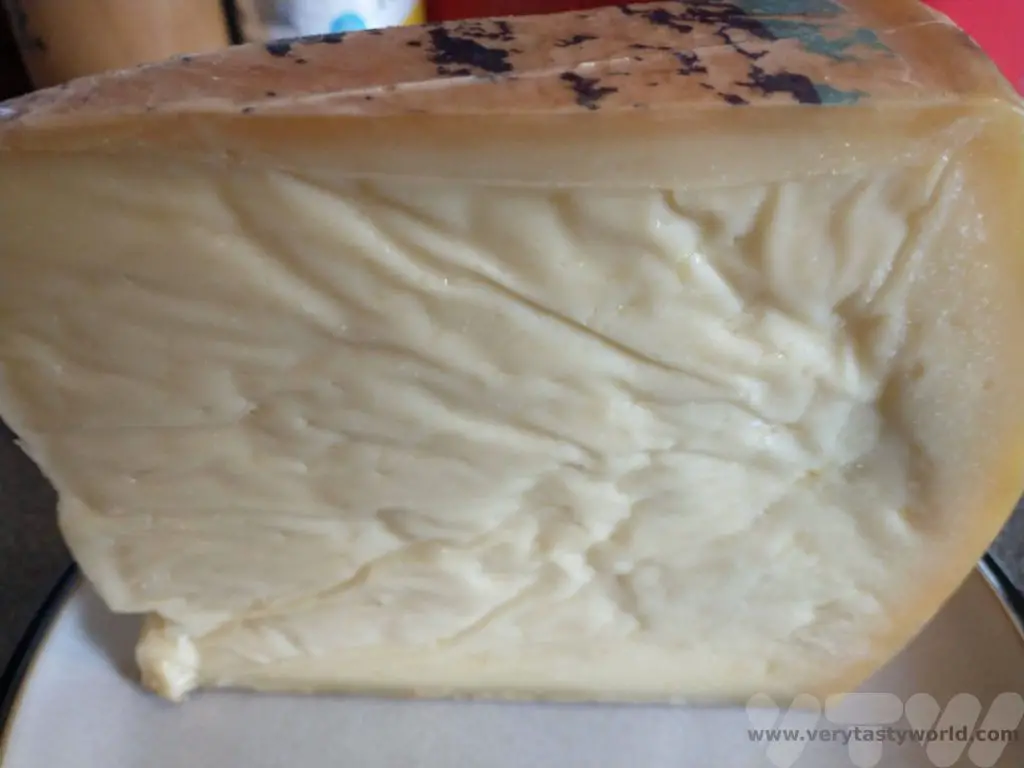
Vaquinha is from the island of Terceira. This one has a surprising initial creaminess for a hard cheese but this eventually flakes slightly. It is very mature, is almost spicy and has a real kick to the flavour!
Cheese is often provided as an appetiser at restaurants but this isn’t matured cheese, it is queijo fresco. It doesn’t have the fullest of flavour, in fact it’s pretty bland, so it is served with pimenta da terra (red pepper paste) which gives it a real pzazz, and it’s eaten with fresh bread. We were able to bring back a bottle of pimento de terra home with us.
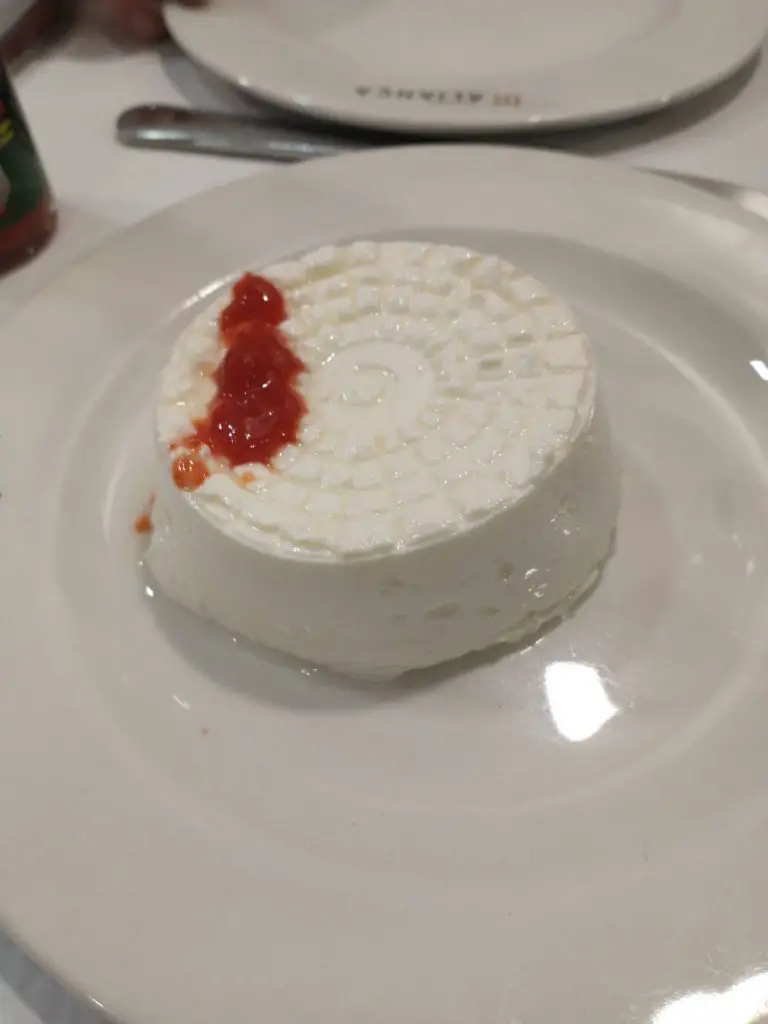
What Goes Well with Cheese? Pineapple of Course!
There is a pineapple plantation, located just outside Ponta Delgada, easily within walking distance of the city centre. You can visit the greenhouses and see the pineapples growing.
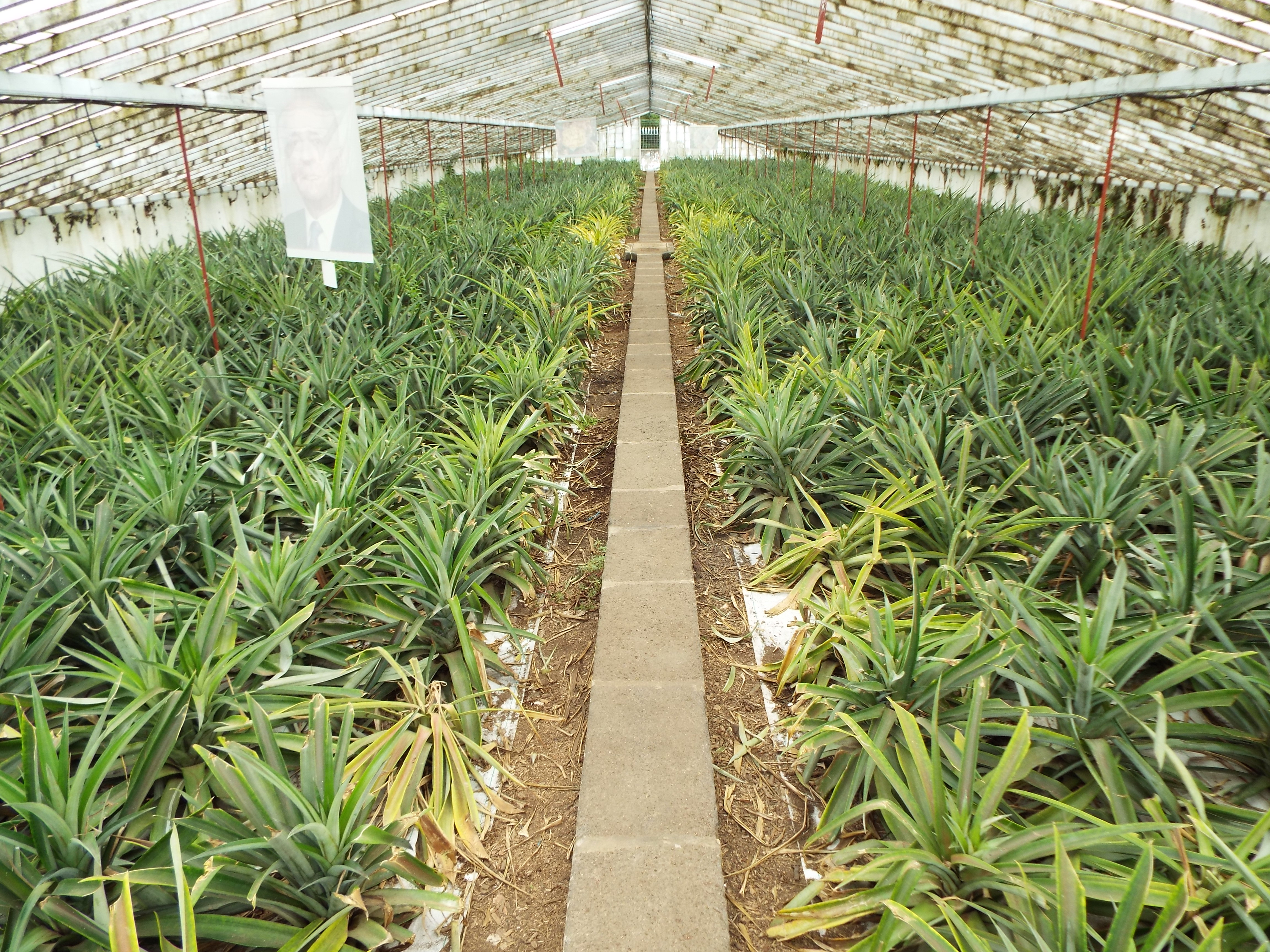
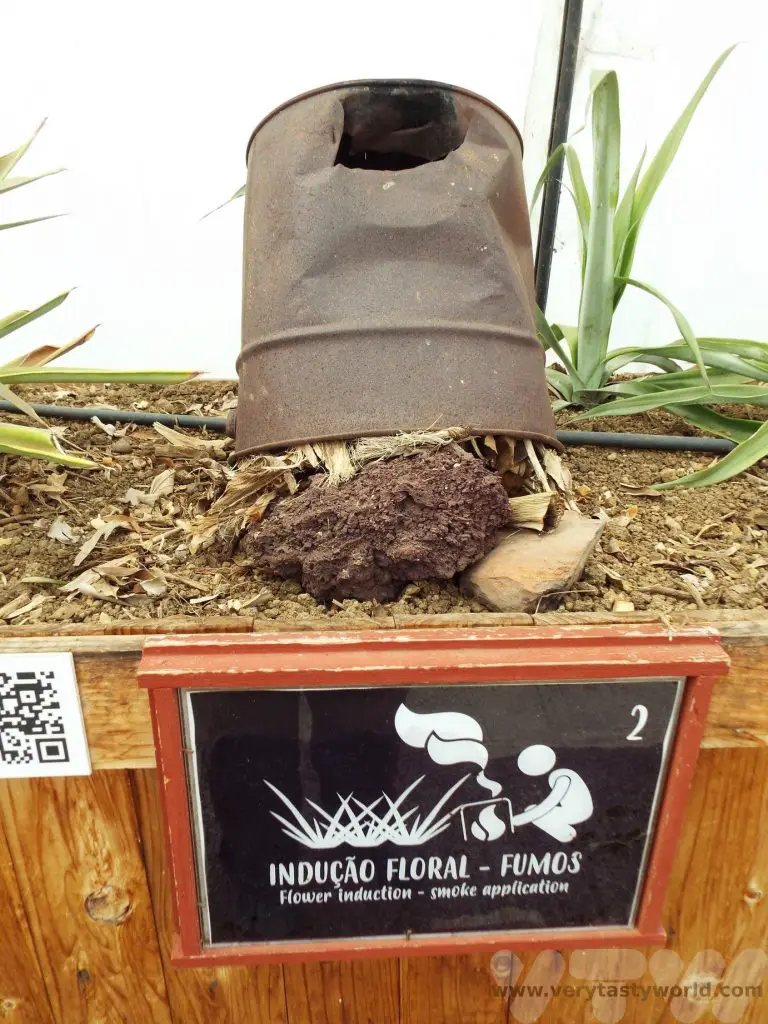
There are also some displays and videos which show the process for growing these fruit. It’s interesting that they use a smoking process to trigger the flowering of the plant.
And there’s a café on site which offers a complimentary shot of pineapple liqueur and a teeny piece of toast with pineapple jam.
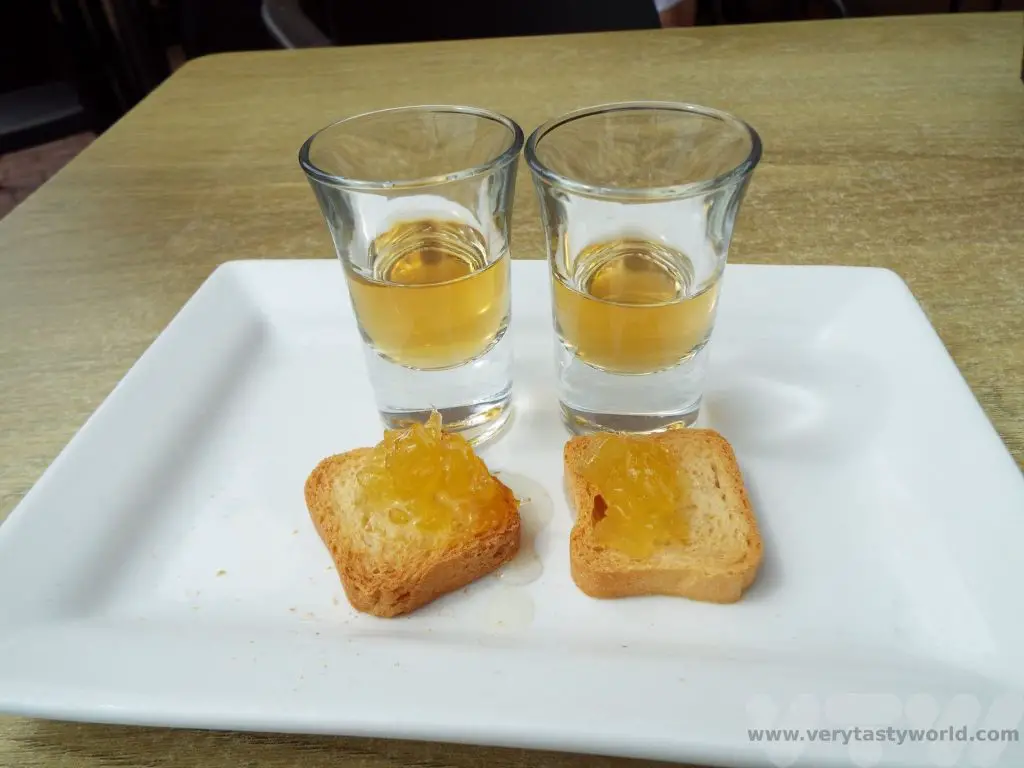
And, as we hadn’t had elevenses or lunch, we thought it would be rude not to enjoy a pineapple gelato, washed down with a caipirinha, a delicious cocktail made with crushed pineapple, lime and rum.
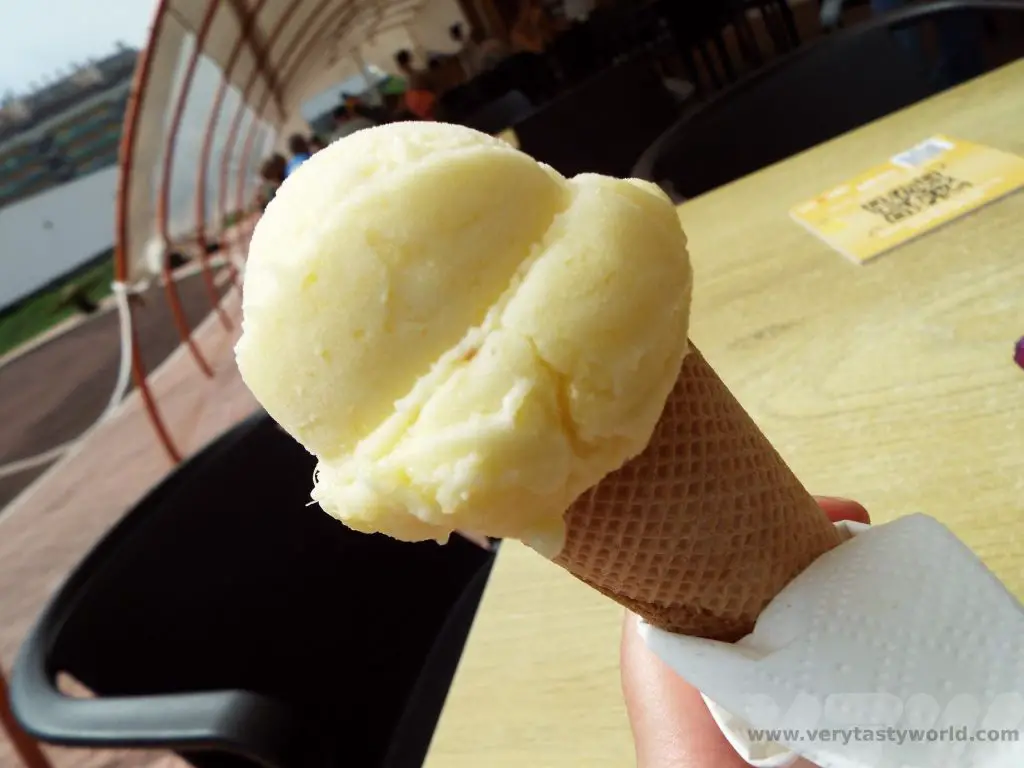
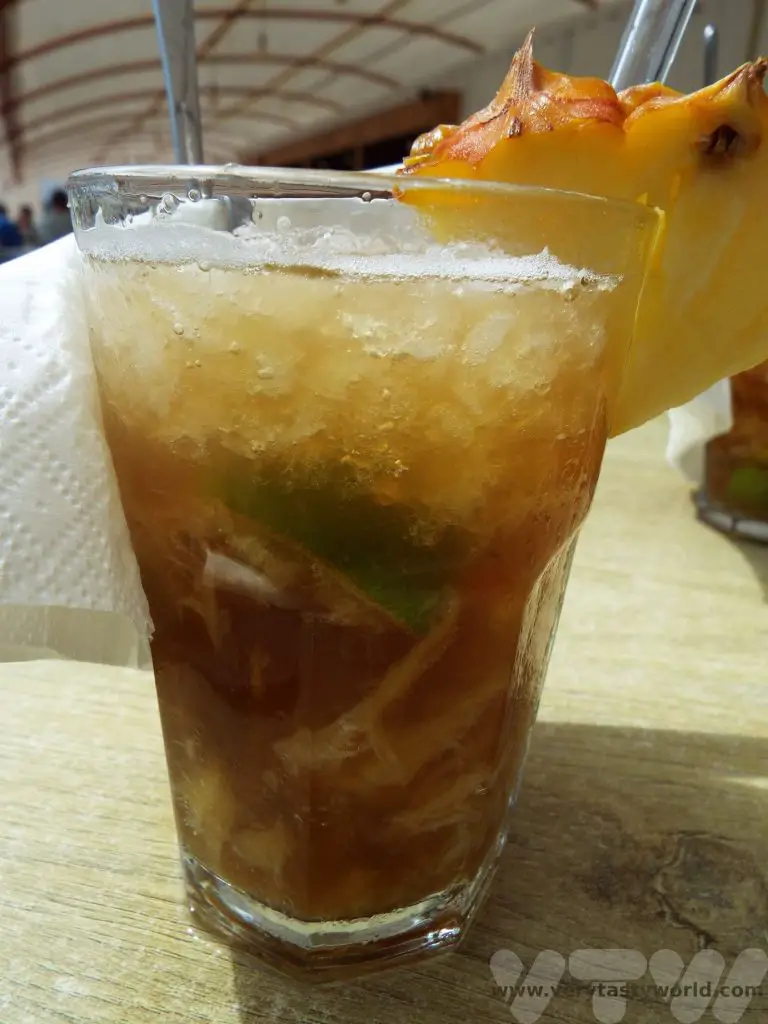
Everything Stops For Tea
The Azores also have a tea plantation, located on the north coast of Sao Miguel. The Gorreana Tea Factory was established in 1883 and is one of only two tea plantations in Europe. It’s possible to visit the factory and do a self guided tour.
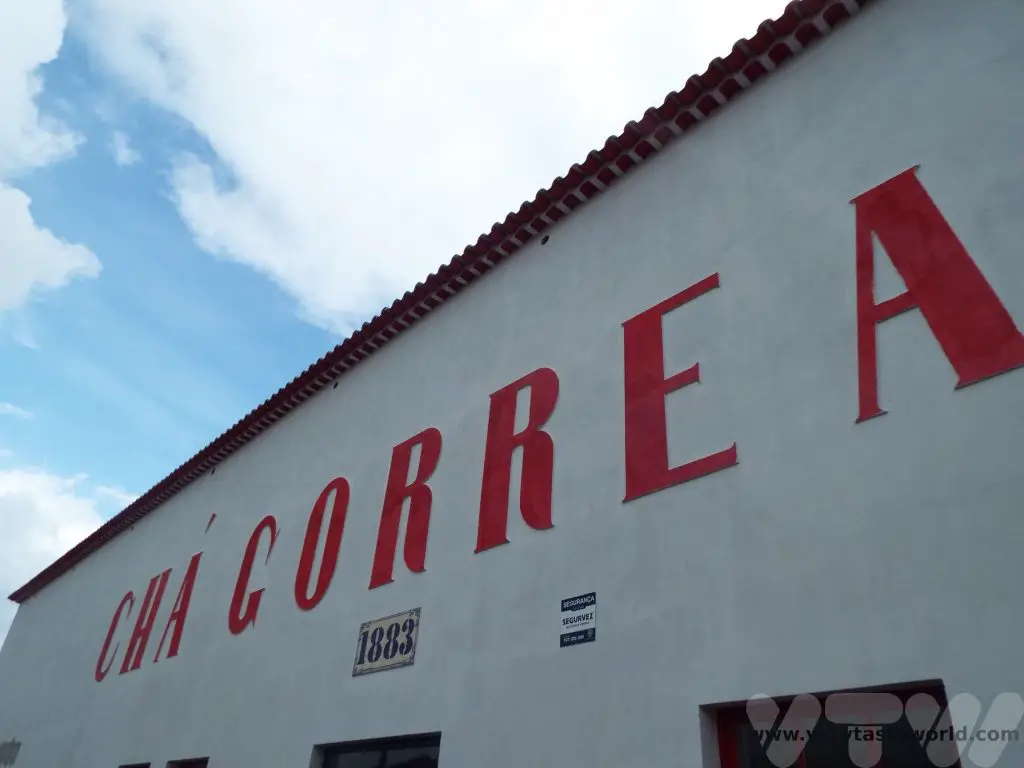
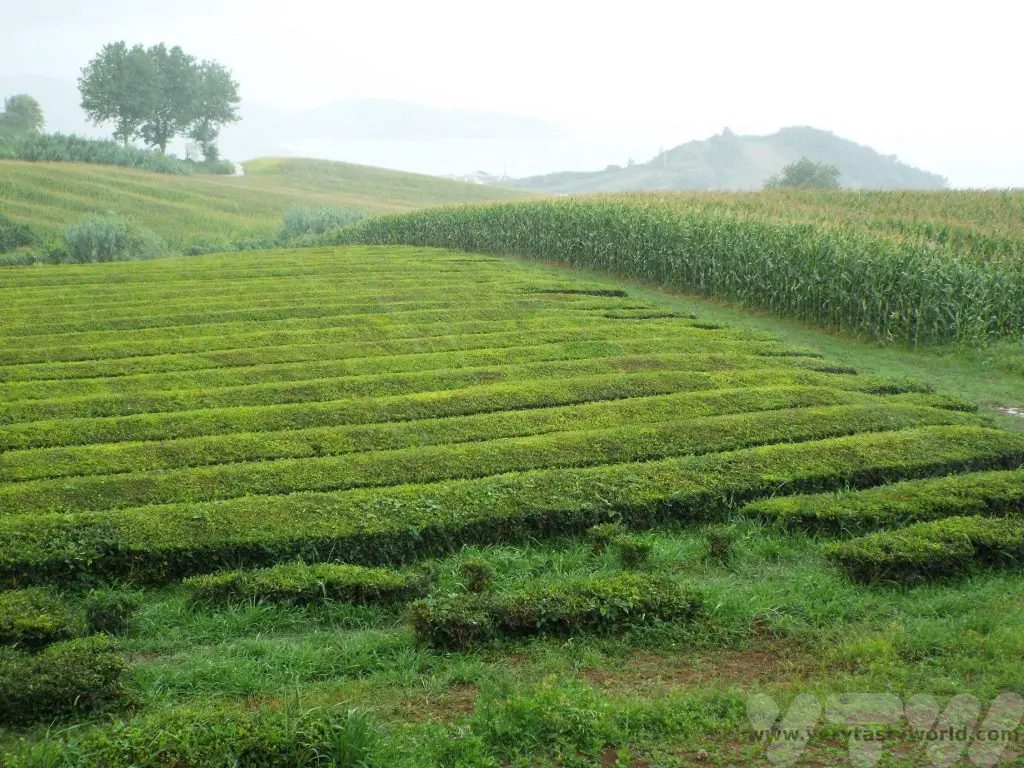
There are infographics showing how the tea is processed and you can enjoy a cup of their tea as well as visit the inevitable shop and café. They produce both green and black tea. Both taste good.
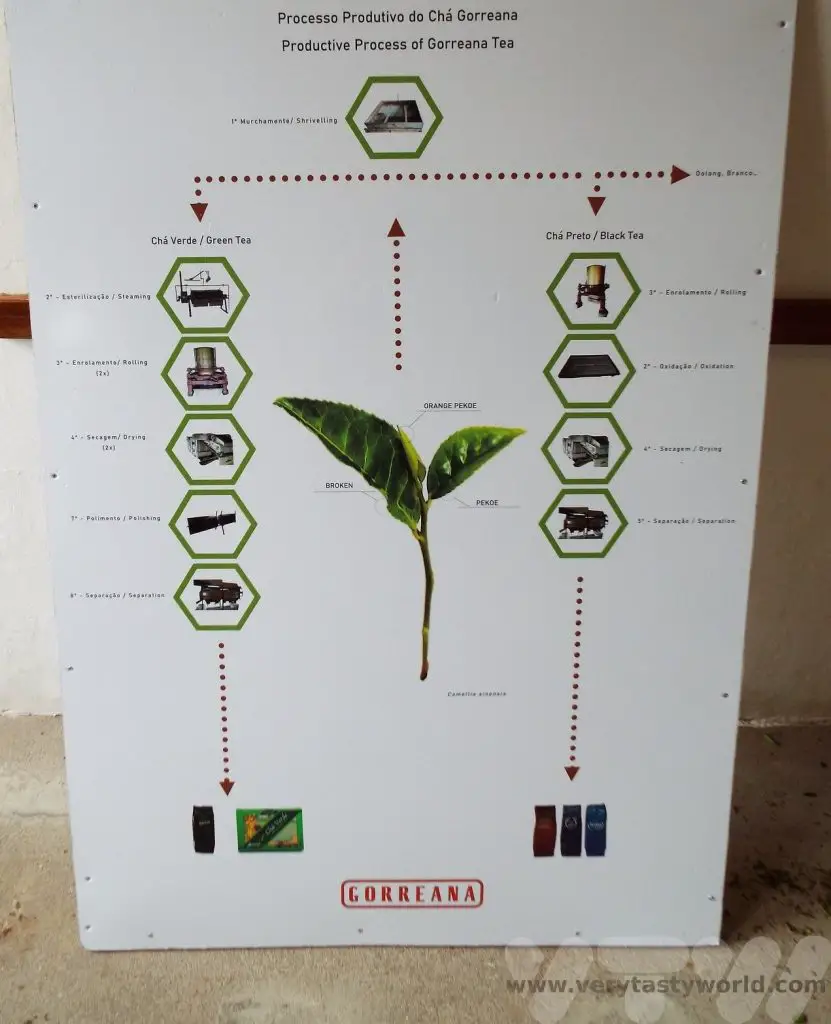
It’s lovely to be able to see the original machinery in action.
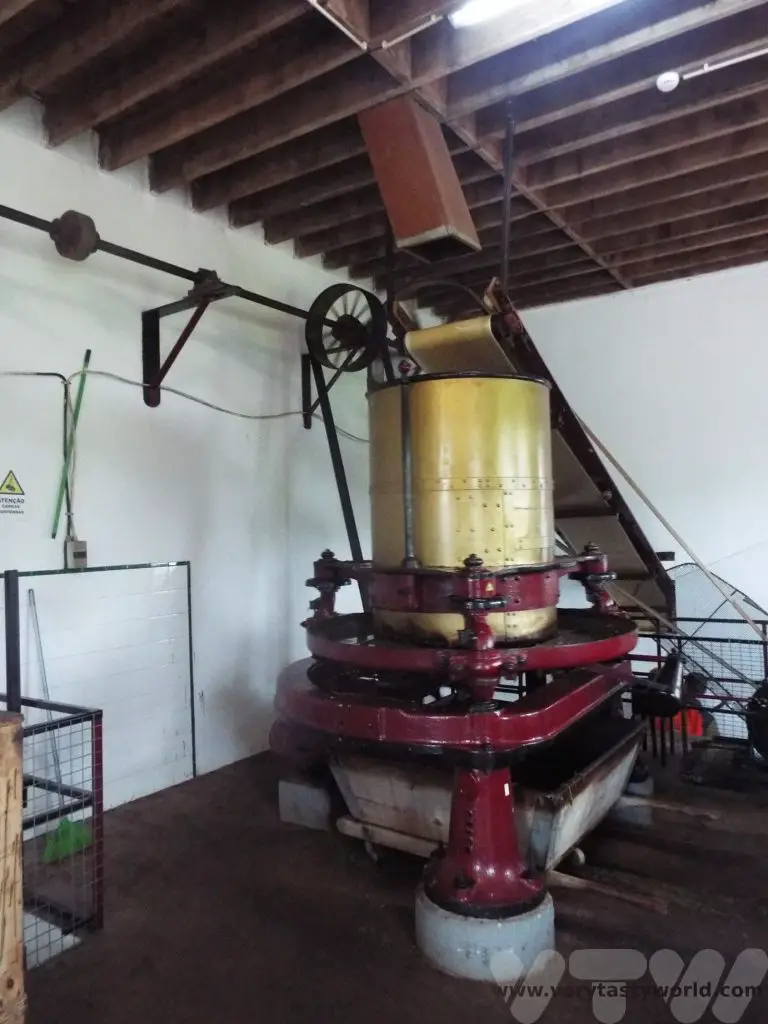
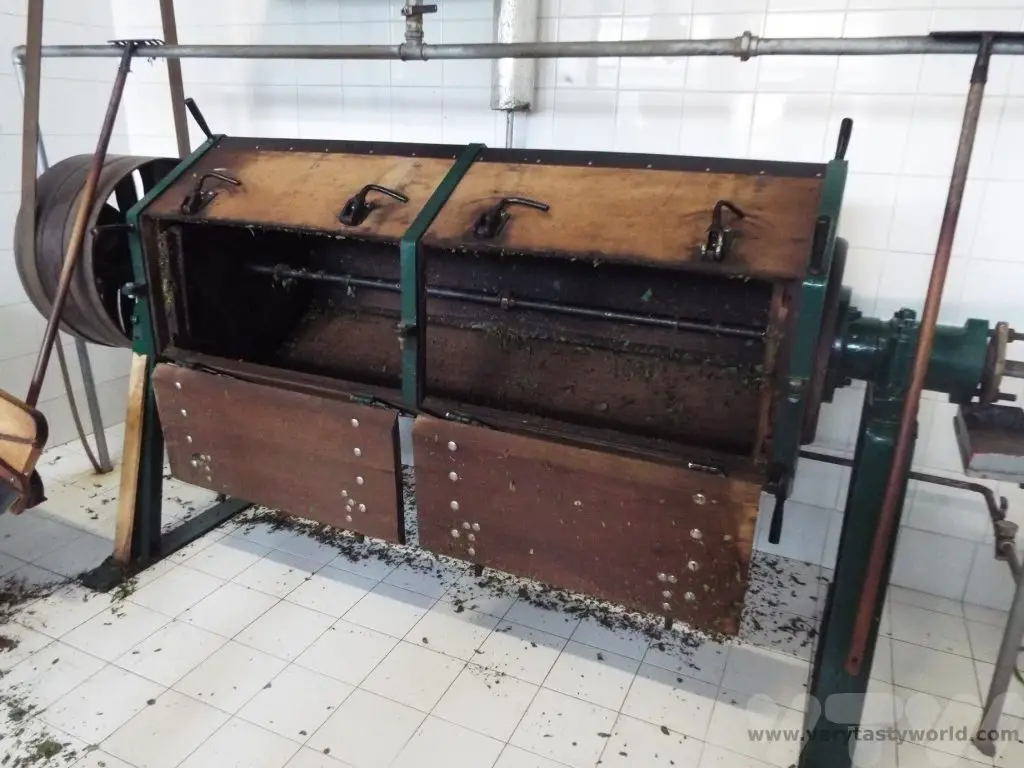
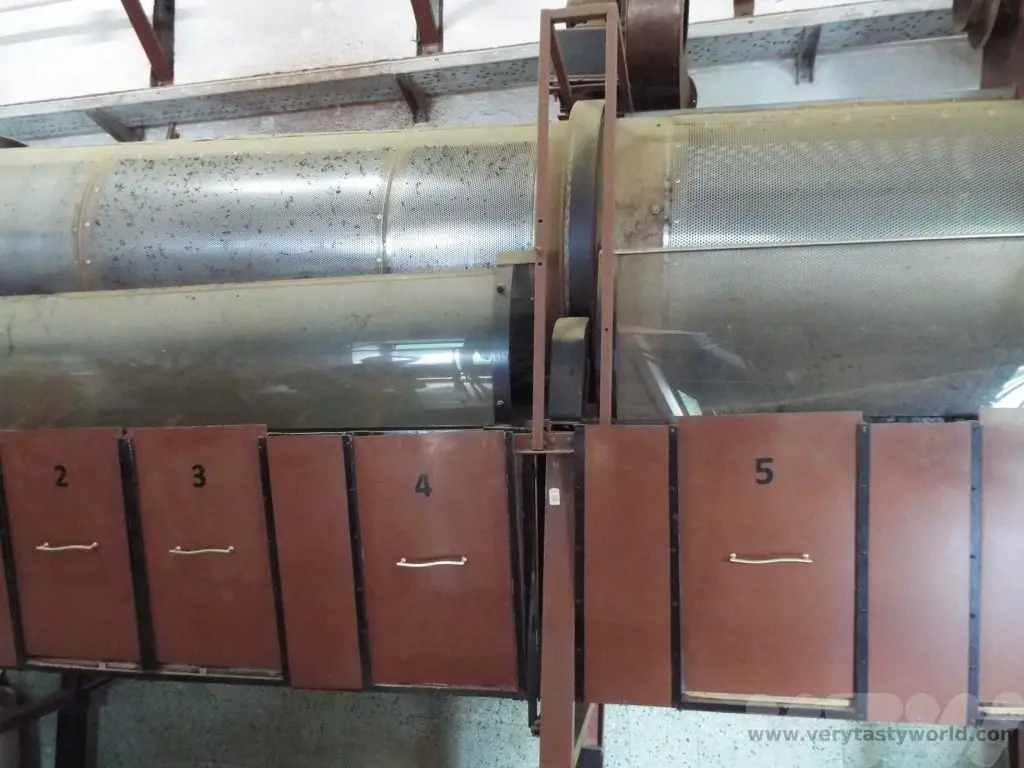
Volcanic Cozido das Furnas
The Azores are volcanic islands and some areas are still very geologically active. We enjoyed a day trip to Furnas towards the eastern end of the island.
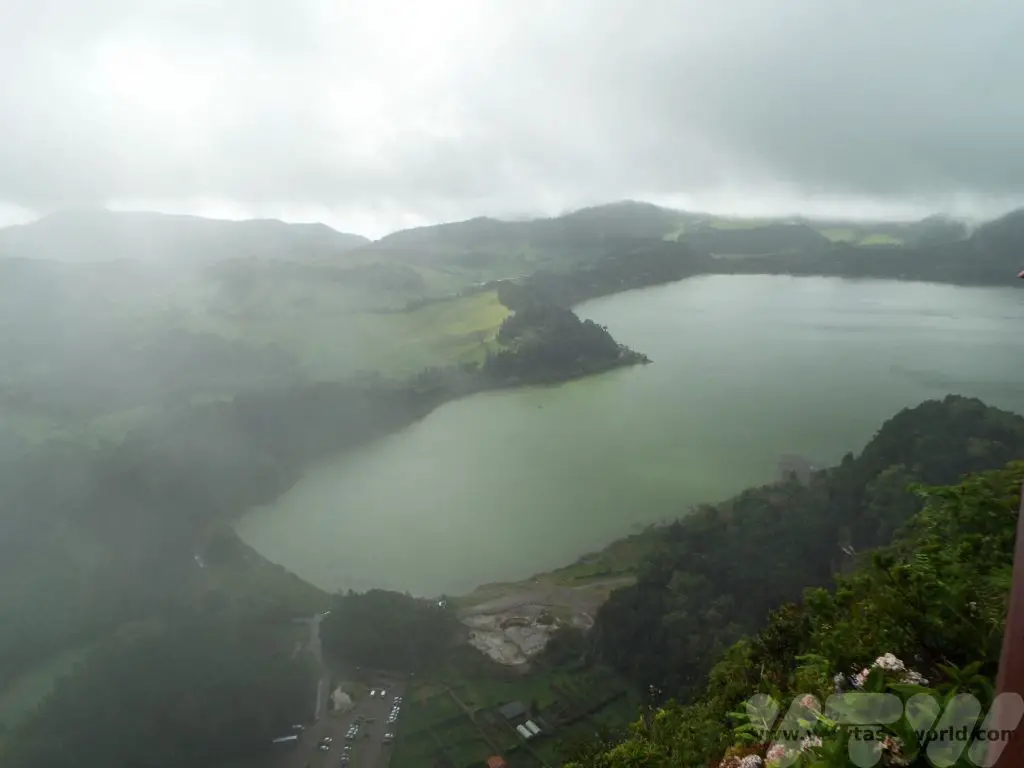
The local town has fumeroles which regularly steam, squirt and belch hot water. The area has a distinct whiff of rotten eggs due to the sulphur. Some of the water has a yellow colour (see the photo below on the right). This is not geological but local people put in bags of corn on the cob to cook.
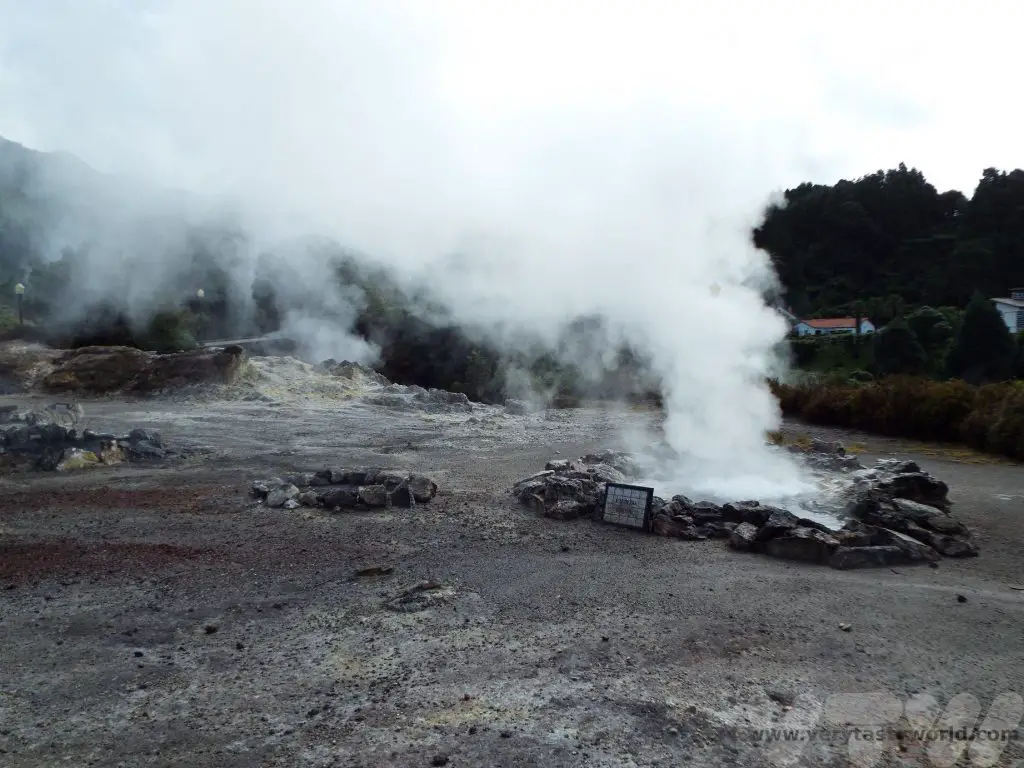
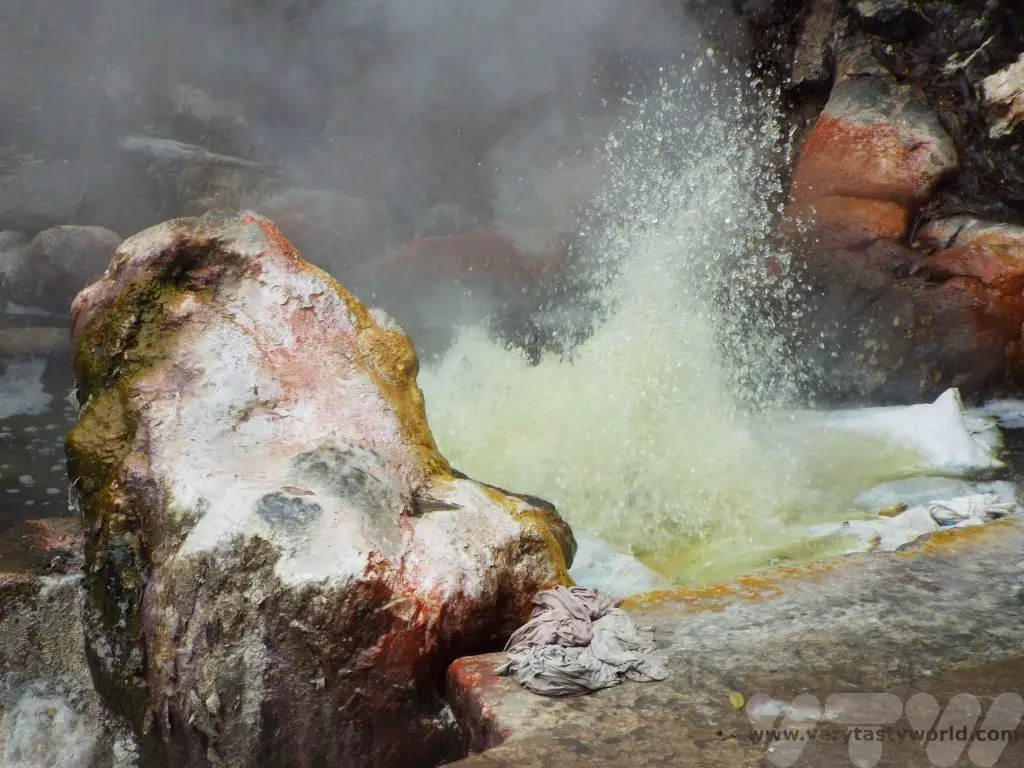
Taro plants, known as elephant ears, grow in the warm water. These have bulbous corms (like a tuber) which are edible and similar to sweet potatoes.

There are also some drinking fountains where you can taste the local water – it tastes very minerally and is an acquired taste for some. It’s also odd drinking warm water. These fountains are located just metres apart but the flavour of the water is surprisingly different!
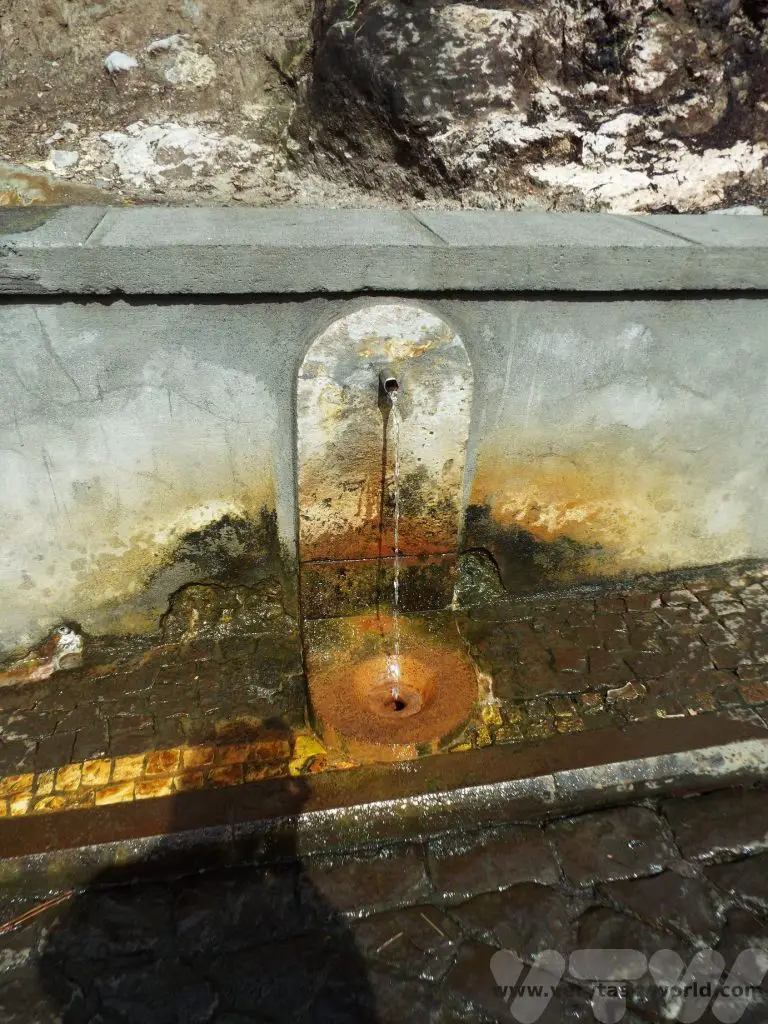
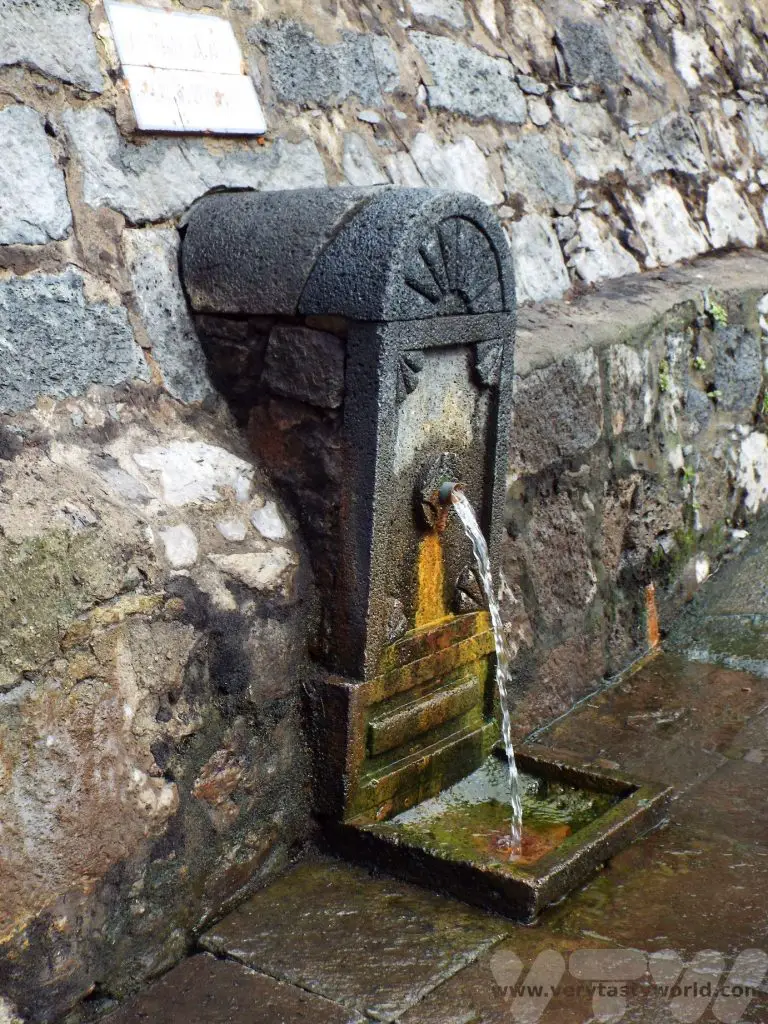
Most trips take you to a viewing point to see Furnas lake, and then you descend to the lake itself. You’re not allowed to swim in the lake but it’s possible to go boating on it. And walking around the area reveals some more of the steaming landscape.
There are a number of fenced off areas containing mounds of soil with name tags. On closer inspection these tags bear the names of various restaurants. Lunch!
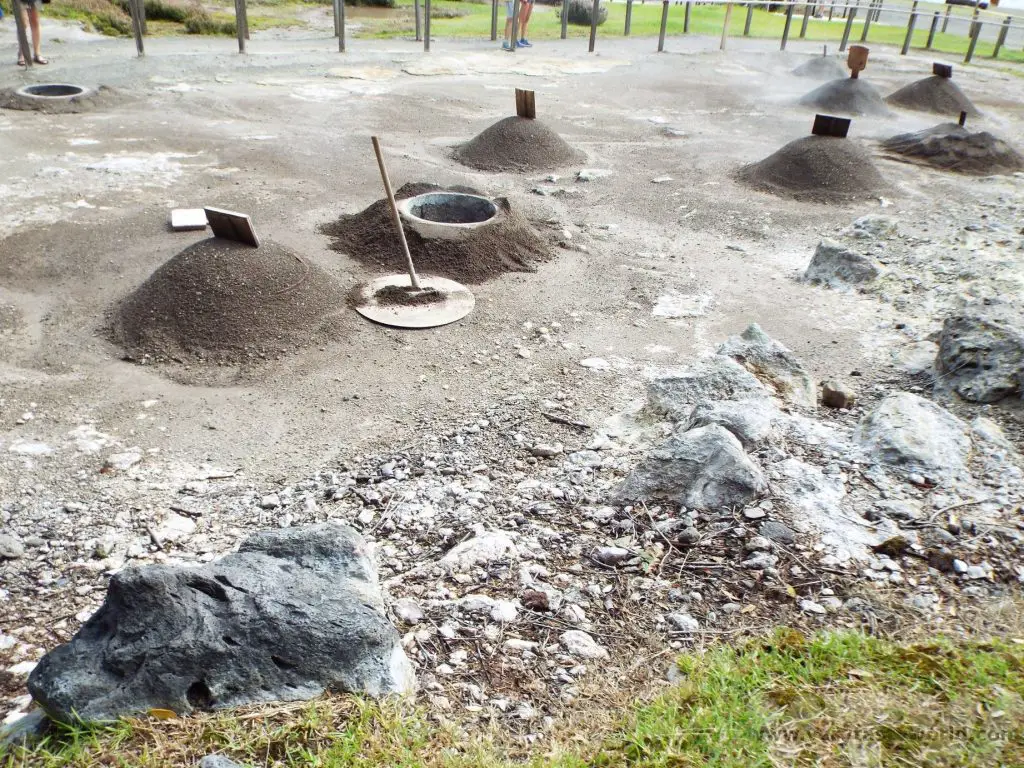
Every morning the restaurants prepare meat and vegetables and place them in a large pot. At 5am these pots are buried in the volcanic soil. Around six hours later a parade of vans arrive (and that’s the cue to grab a place by the fence if you want to take photos) and each restaurant owner will dig out their pots (or invite a hapless tourist to help) from the perfect slow cooker which has been cooking the food using free energy from the ground. It’s a brilliant system. And the site isn’t restricted to restaurants. Local people can hire a hole and bring their own food for a picnic/meal later in the day.

Back in town, the food is then served in the respective restaurants. A platter of meats and a platter of vegetables. (Vegetarians/vegans – the meat and veg will have been cooked together so if you want a veggie cozido, ask in advance and an unadulterated pot of pure veg can be supplied.)
The meats comprised pork, sausage, chicken, beef and blood sausage (Morcela) – all so soft and tender it could be cut with a spoon. It melted in the mouth.
The vegetables were potatoes, carrots, cabbage (which was served in large chunks so that it didn’t disintegrate during the cooking process) and the elephant ear yams.
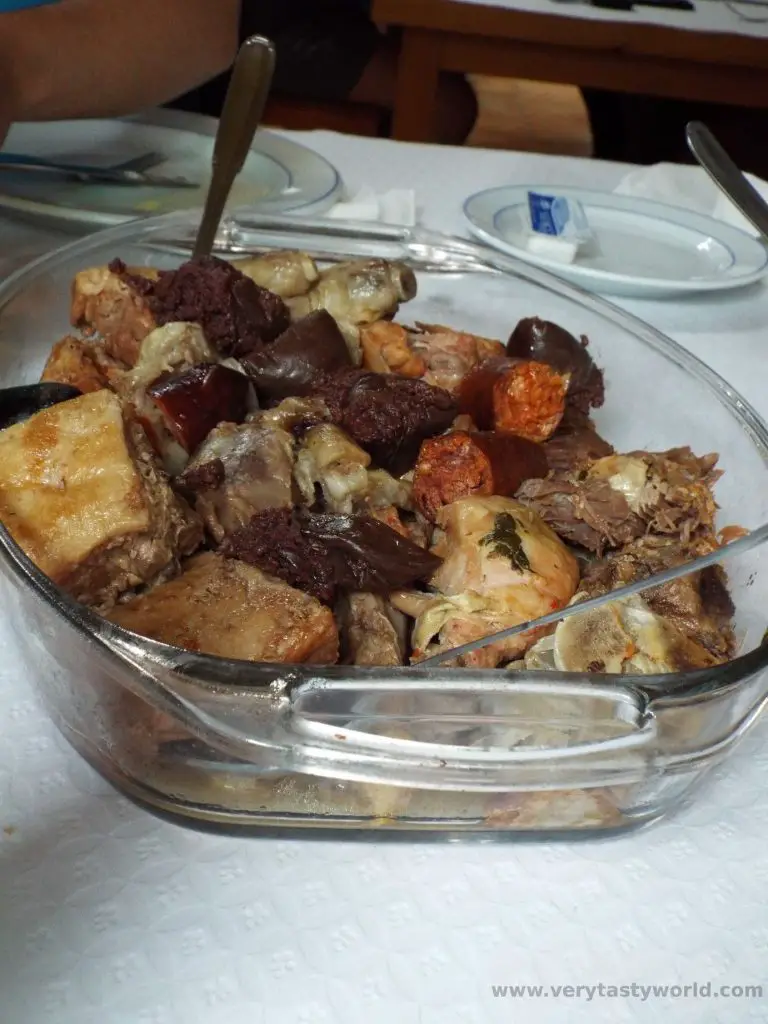
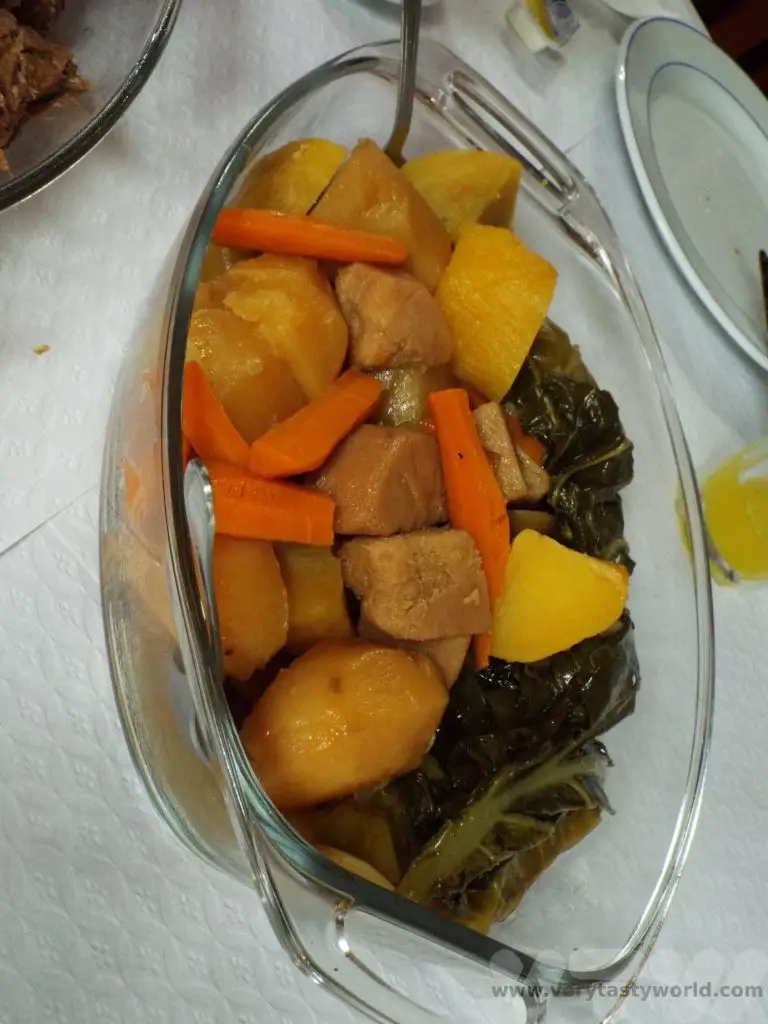
Cozido doesn’t have any additional flavours added – the food is served just as it comes out of the pot. But while it doesn’t offer complexity, the juices of the meat provide lots of flavour and you really get to enjoy the taste of the meat and vegetables. And it really is a feast!
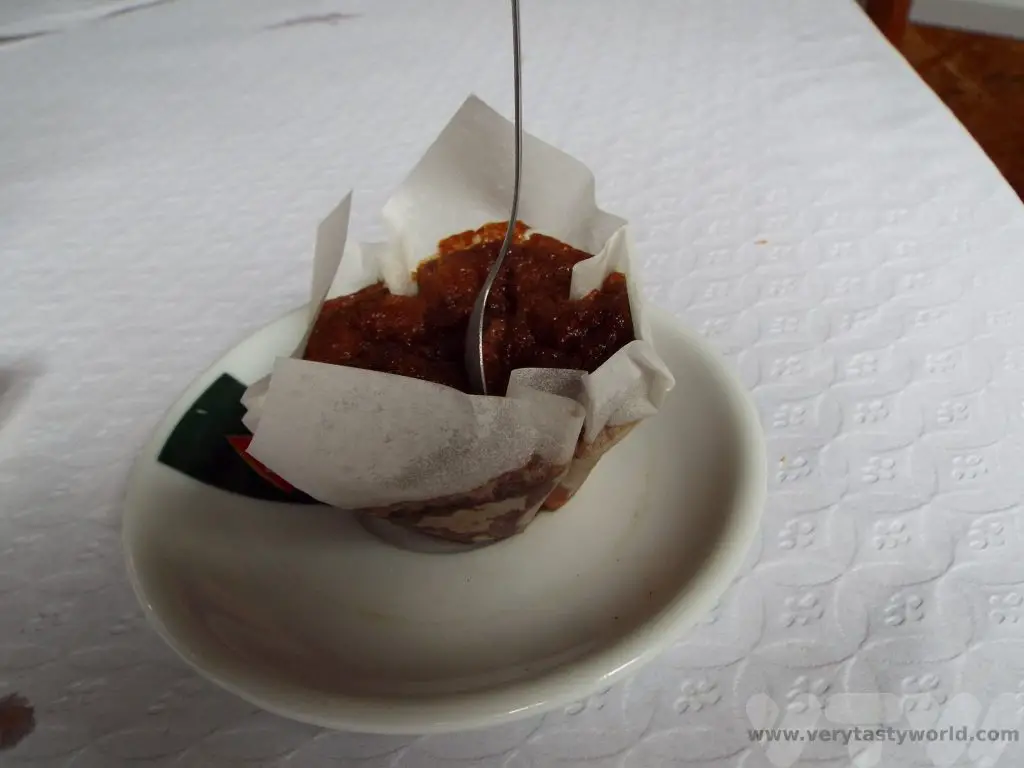
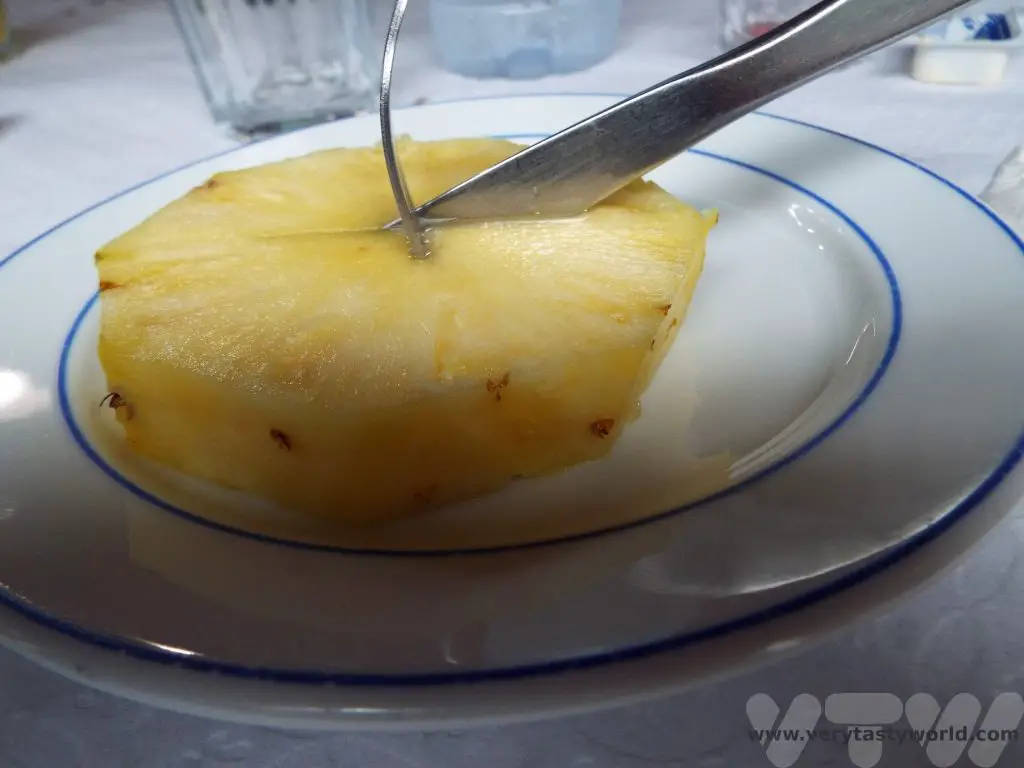
All washed down with local wine and a nice honey cake (if still hungry) or a slice of delicious local pineapple (if that’s all you can manage) for dessert, it filled us up for the rest of the day.
A Little Bit of Foraging
While the hydrangeas add glorious hues to the countryside and are very much welcomed, Sao Miguel has a more invasive plant – the yellow wild ginger – which is far less popular. It spreads quickly and does take over the landscape very quickly.
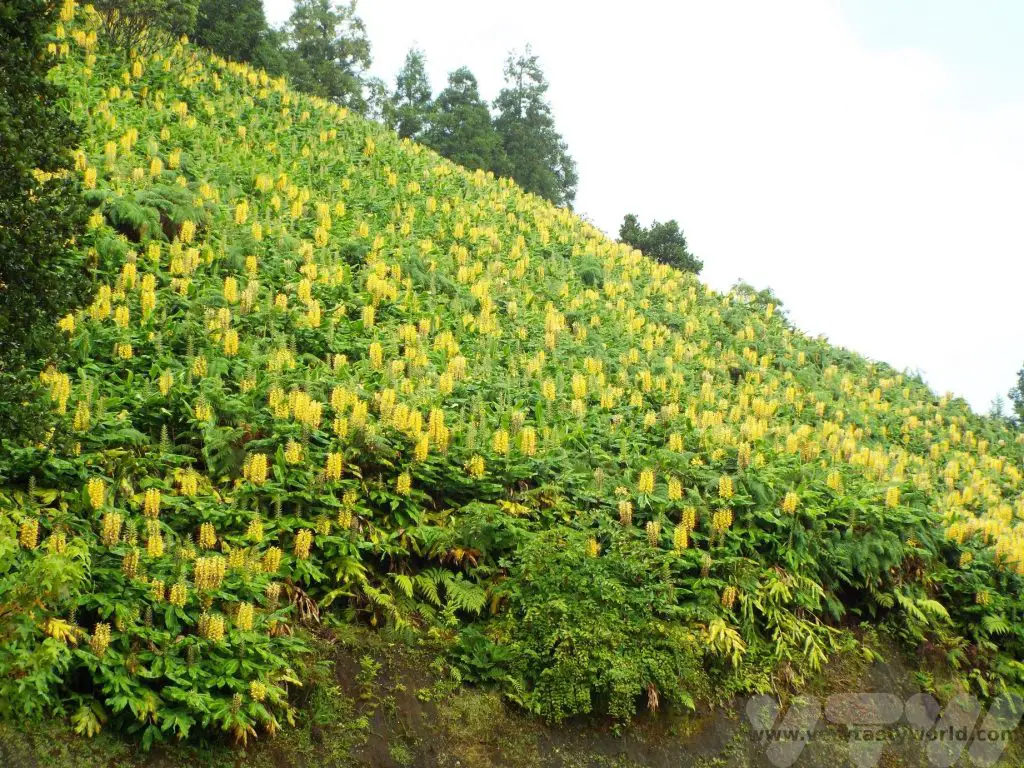
The local university is looking into uses for the plant and it’s looking hopeful that the fibrous leaves may be a useful material to replace use of some plastics in future. It is a good pollinator and inside the long yellow flowers is a drop of nectar. You can pick the flower, bite off the end – by a couple of centimetres – and spit that out. Then suck on the flower and you can taste the sweetness.
Dining on San Miguel – Ponta Delgada
First of all, if you want to dine at a particular restaurant, book! We visited at the end of the busy season and struggled to get a table at the best restaurants for an evening meal. At one of the restaurants we pretty much bagged the last table. We arrived five minutes before opening and people were already queuing for a walk-in but were politely turned away. Another option is to visit the restaurants at lunchtime when it should be easier to get a table.
Our favourites were Gastronomo and Michel. Both are deservedly popular and offered foods of the Azores that were local specialities. We received a very warm welcome in each place.
Gastronomo, R. da Boa Nova
Their queijo fresco and pimenta da terra were freshly made (some restaurants provide you with the cheese on a plate and a bottle of sauce) and served on a ginger plant leaf (one of the uses for the invasive plant) accompanied by home-made bread, including a sweet bread (a bit like a brioche) which was a wonderful contrast to the cheese and chilli.
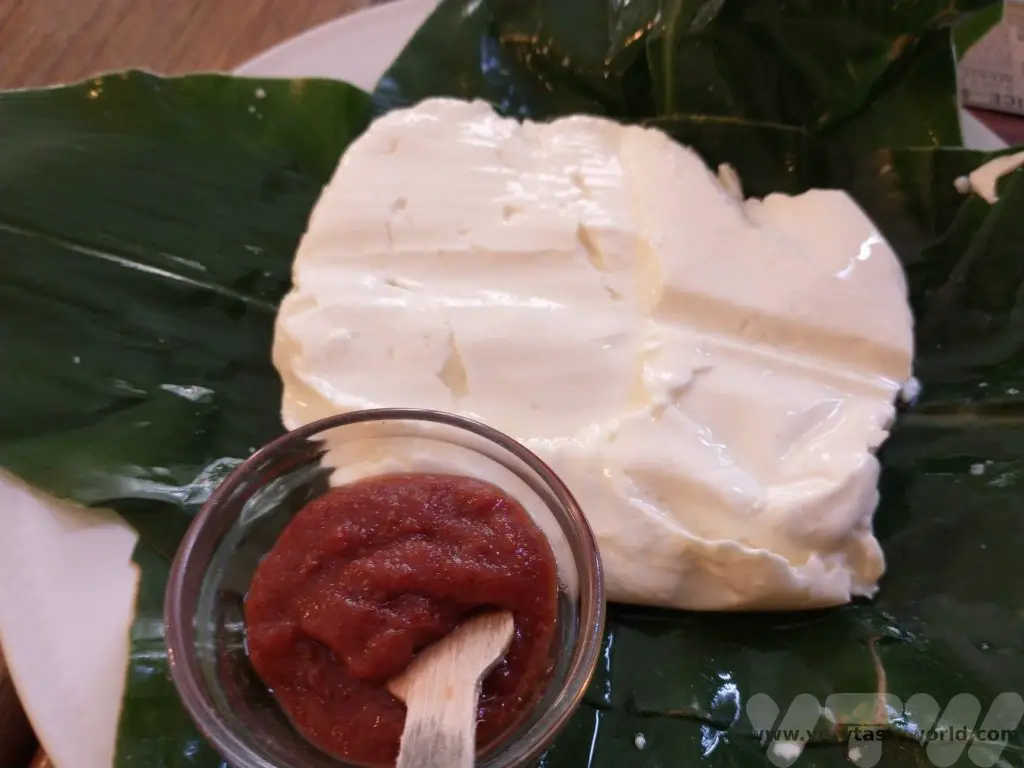
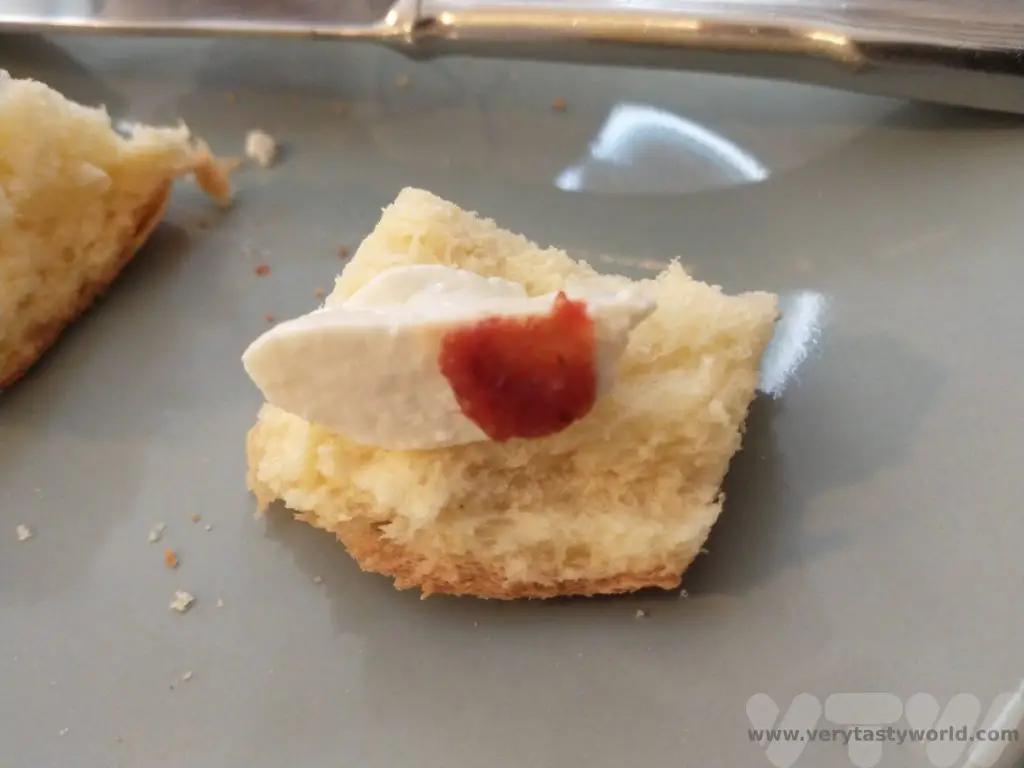
We shared a starter of black pudding and local pineapple which was an absolutely delicious combination of sweet and savoury flavours. The black pudding – a blood sausage – was one of the best we have eaten.
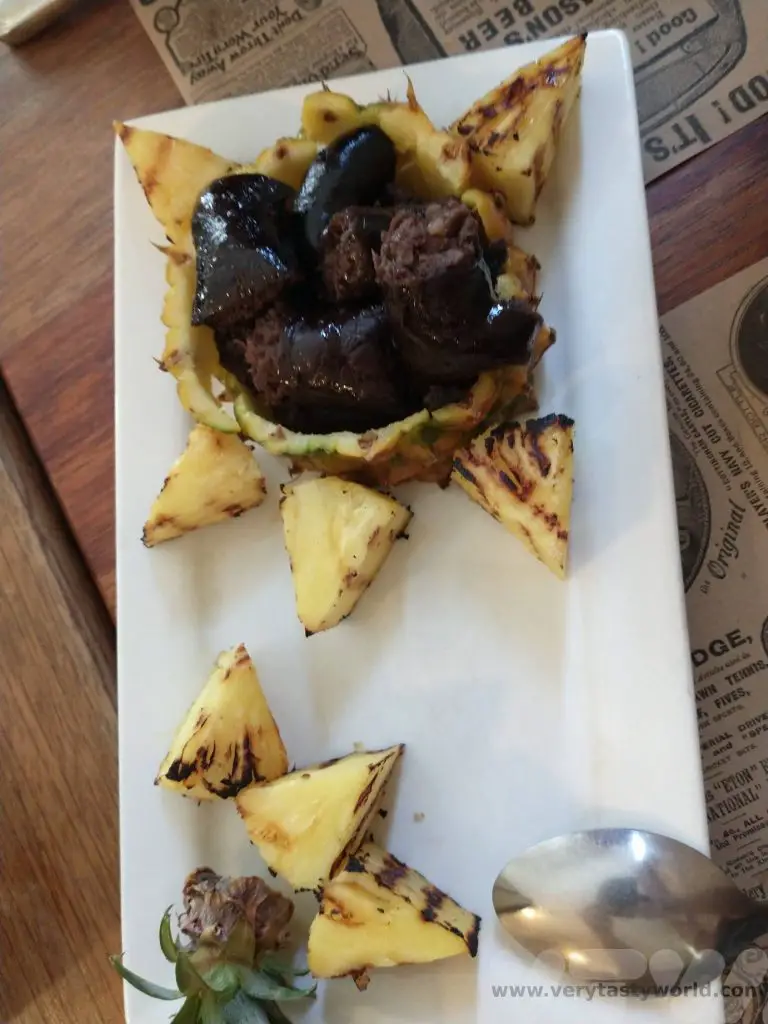
The Azoreans have a particular way of cooking steak. Bife steak with garlic and pimento and a fried egg.
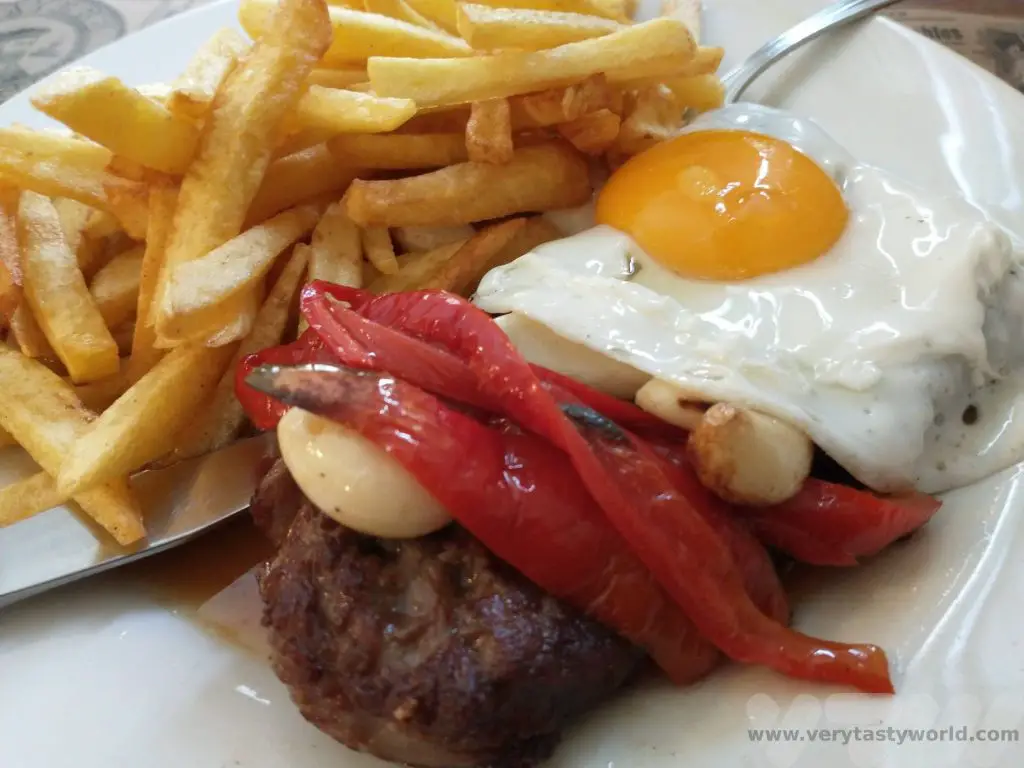
Bacalhau is not specifically Azorean but is a hugely well known Portuguese dish. It comprises salt cod, cooked with eggs and olives and served on fries.
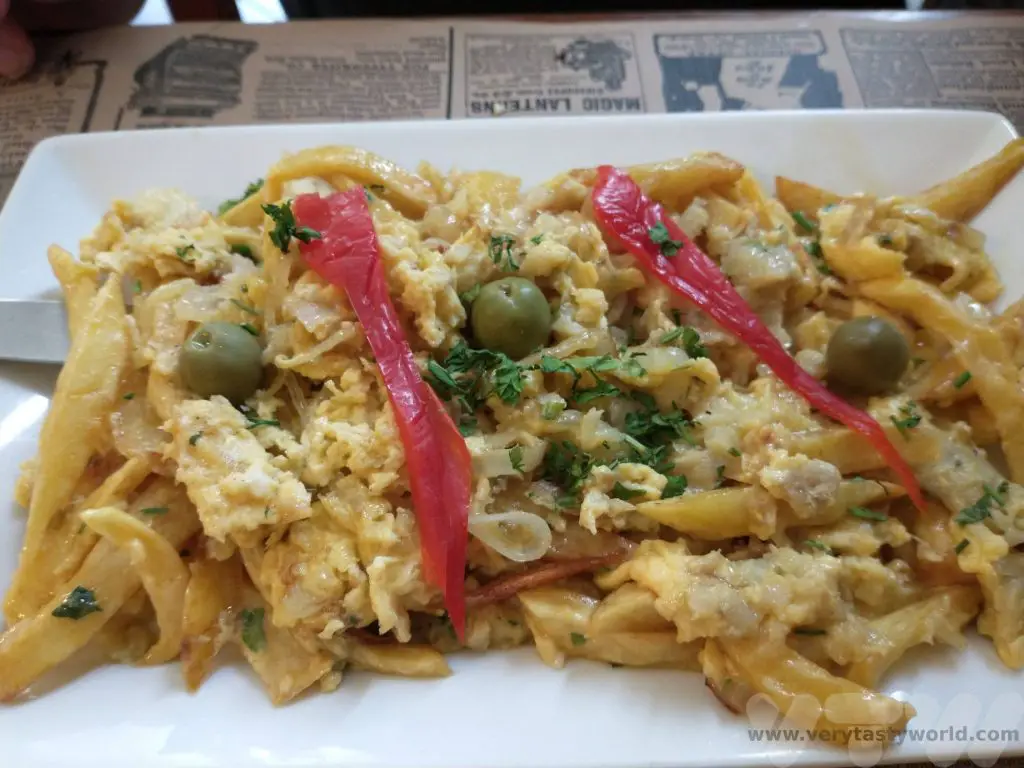
Michel, Rua Engº José Cordeiro Antiga da Calheta
We tried Azorean limpets and local shrimp to start with. Limpets are shellfish that are incredibly common all over Europe and, although we knew they were edible, had never seen them on a menu before. They have a tougher texture than a lot of shellfish but they were tasty.
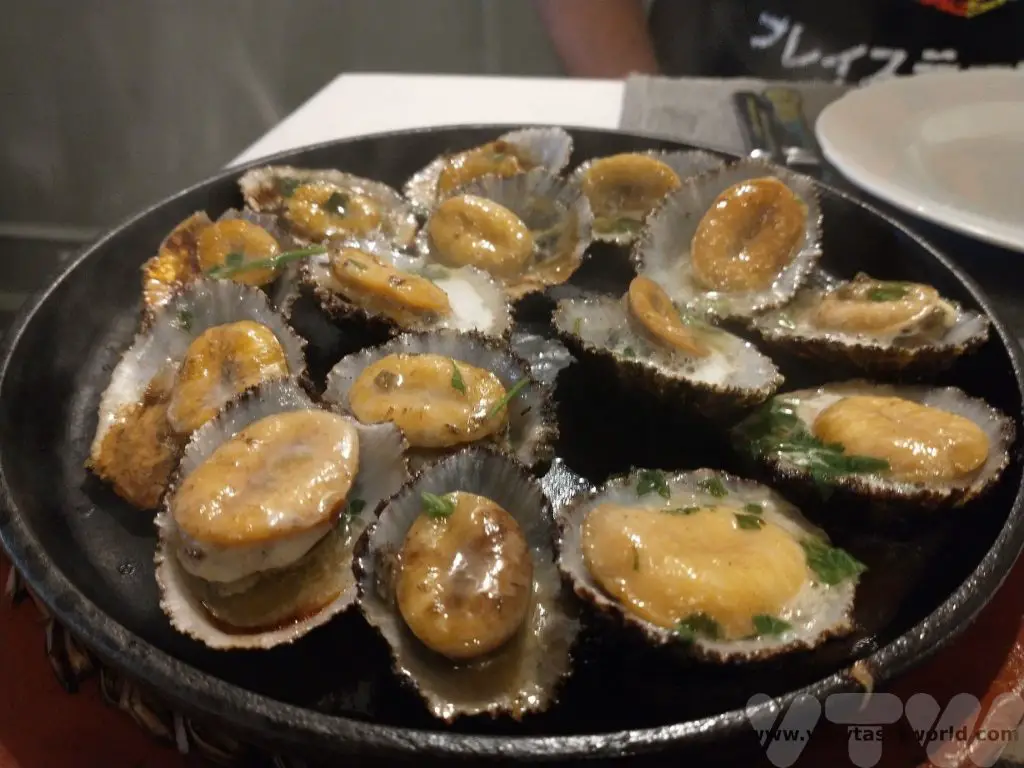
Pork and mashed yam (the elephant ears) and vegetables was utterly delicious.

As was the oven roast lamb.
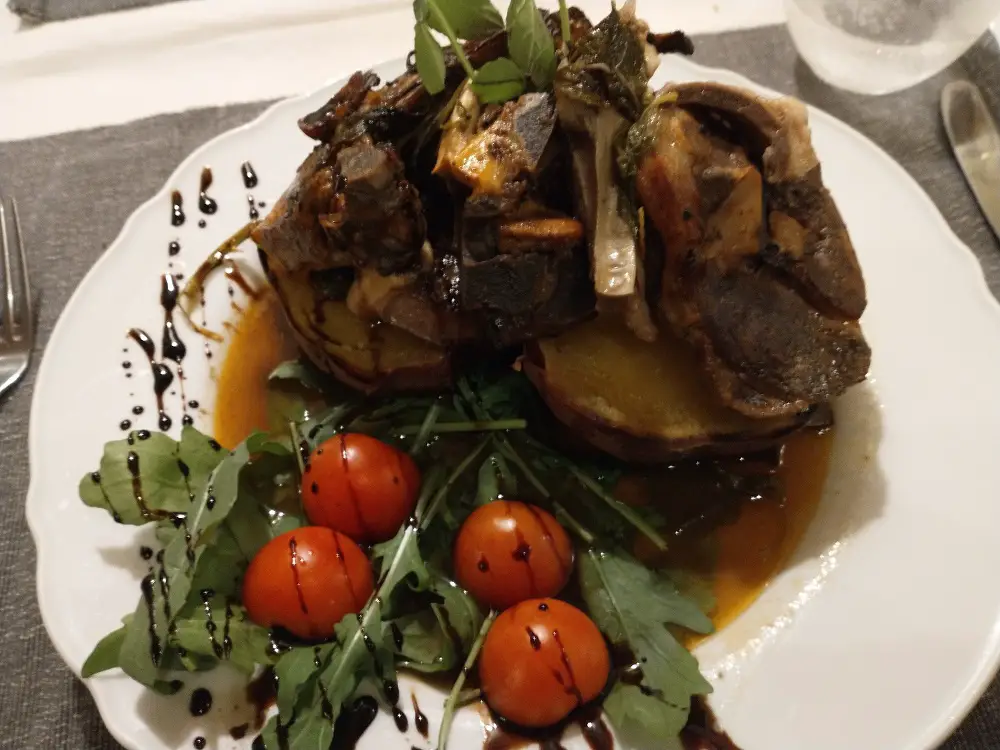

A Tasty Puebla Food Tour
Puebla is just a couple of hours away from Mexico City and is a complete contrast to that glorious, sprawling metropolis. It is a delightful city to visit and the historic centre is a UNESCO world heritage site. It is also a city of great deliciousness – the Puebla food scene is astonishingly diverse and exciting. After all, this is the city that claims to have invented mole poblano!
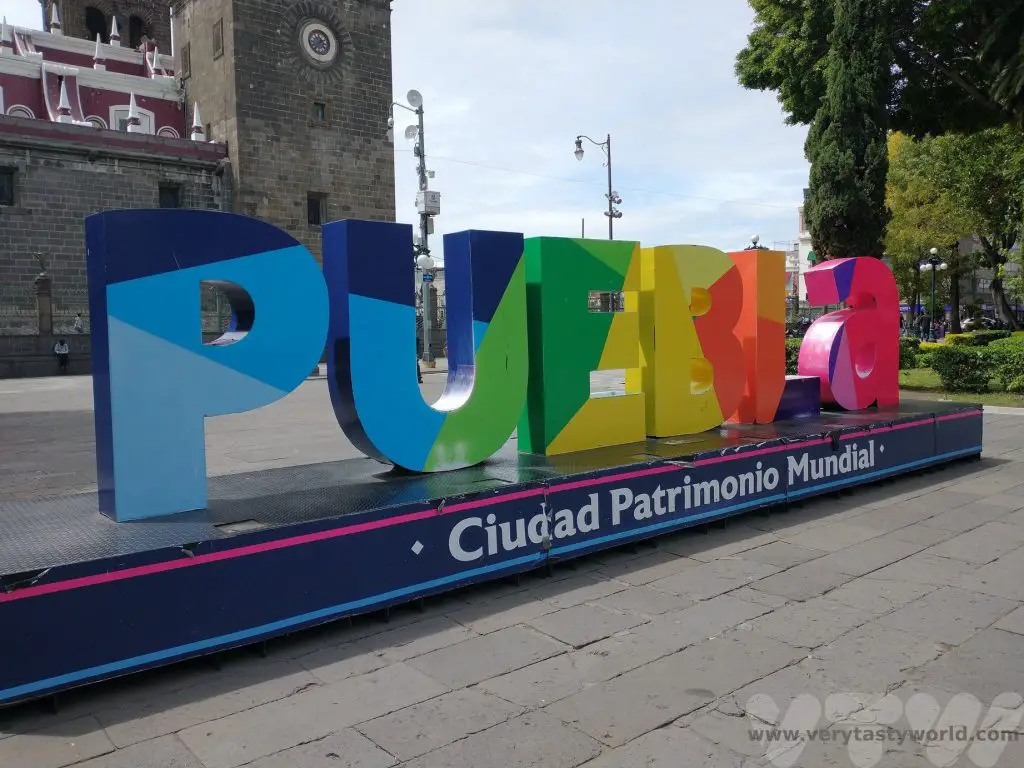
Getting to Puebla
We were travelling through Mexico on buses, which was a lovely way to see the countryside. The buses are largely comfortable and on time but journey times can be long. The bus stations are usually located on the edge of town, so we tended to use taxis to get to and from our hotels. Most of the taxi drivers were excellent and, even though the journeys were unmetered, the costs were pretty cheap – usually lower than $10. There was only one place where we got shafted by a taxi driver and that was in Merida (which is a lot more touristy) who overcharged us for a very short journey so it’s advisable to agree on a price in advance – and to be able to count in Spanish! When we arrived in Puebla we discovered a taxi rank where we could pre-pay our fare which made everything much easier.
The journey from Mexico City to Puebla took two hours. If travelling from Oaxaca, the travelling time is around five hours.
We were staying at the Colonial Hotel in Puebla, just a block away from the Zocalo main square. It’s a former Jesuit monastery, dating from the 17th century. We had an enormous room with the highest ceiling we had ever seen. Also, they provided a ginormous water dispenser in the room (you can’t drink the tap water in Mexico) and this was very useful.
Places to Visit in Puebla
On arrival we went straight to the zocalo, which is a lovely space filled with trees, sculptures and benches. We always find it useful to head for the tourist information office when we arrive at a new city, and Puebla’s is located on the northeast corner of this square, on the side opposite the cathedral. It was great chatting with the friendly staff who offered us a map of the area and list of attractions to visit, as well as some foodie recommendations.
Puebla was founded by the Spanish who had set up a trade route between Veracruz on the coast and Mexico City. The area was originally forested and hadn’t been populated by indigenous peoples, it was located between the settlements of Tlaxcala and Cholula. The soil is volcanic and as a result, the land is fertile and ideal for growing crops. The Spanish brought crops such as wheat with them and the food is therefore a fusion of local ingredients with European.
Puebla is a city filled with churches. It feels as though there is one on every street. It’s perfectly okay to wander inside although it’s advisable not to look around if a service is ongoing. There are two churches that are absolute must-sees.
Puebla Cathedral
Located on the south side of the zocalo, the Basilica Cathedral of Puebla, also known as the Cathedral of Our Lady of the Immaculate Conception, was one of the first cathedrals to be built in Mexico. It was consecrated in 1649. It is a huge cathedral.
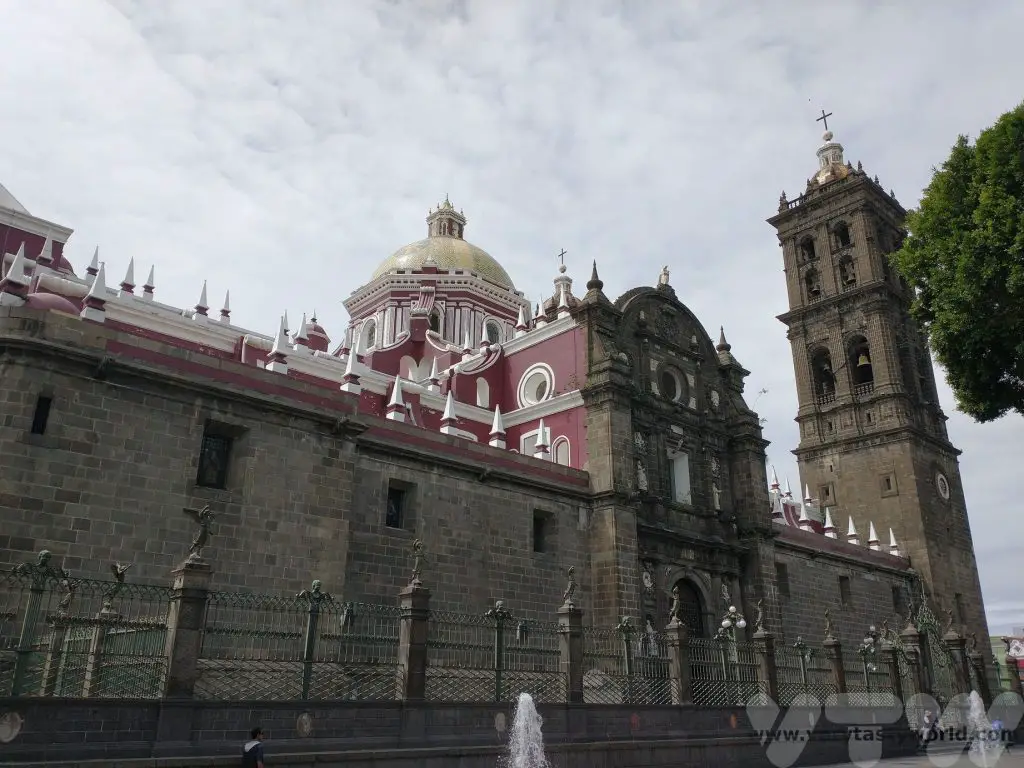
Like many large churches in Mexico, it has multiple domes and altars. The high altar is particularly ornate.


Church of Santo Domingo
The Church of Santo Domingo is remarkable for its chapel dedicated to Our Lady of the Rosary. It is a classic example of new Spanish baroque architecture and in its time was considered to be the 8th wonder of the world. It was conceived in 1650 and completed in 1690.


The chapel is decorated with gilded plasterwork, the highly decorative and intricate designs are coated in 24-carat gold leaf.
Biblioteca Palafoxiana
The Biblioteca Palafoxiana is the first and oldest library in the Americas and is another UNESCO site. Chock full of some 45,000 books dating from the 15th century onwards and categorised according to the subject, you can wander through the library and view the shelves as well as some books on display in glass cabinets. It has a wonderful smell – just breathe in deeply to inhale the scent of centuries-old literature!



Museo Amparo
This free museum and art gallery is a joy to visit and highly recommended. Set in two colonial-era buildings across multiple levels it has several permanent and temporary exhibitions.

The ground floor is dedicated to the pre-Hispanic history of the region and sets it in the context of world history. It has a huge number of fascinating artefacts with pieces dating from as early as 2500 BCE.




The building was the home of the Espinoza from 1871 to the 1980s, and this is reflected in the upstairs exhibits which are set out as rooms showing objects from the colonial period, including drawing rooms and a kitchen.
The Amparo has a terrific modern art gallery. There are also temporary exhibitions – we were able to enjoy an exhibition on 1970s feminism when we visited. It’s possible to spend several hours here so definitely set some time aside to explore this wonderful place.
Don’t do what we did and forget to go to the cafeteria on the second floor. Even if you don’t want a coffee or tea, there’s apparently a fabulous view of the city. We only learned about this after our visit. We’ll have to return.
Museo de la Revolución- Museum of the Mexican Revolution
This house in Calle Santa Clara was the home of the Serdán family and was the location of the first conflict of the Mexican Revolution which took place in 1910. President Porfirio Díaz had been in power for decades and was becoming increasingly unpopular. Aquiles Serdán was a supporter of revolutionary leader Francisco Madero and started planning an insurgence against the president.
However, the rebellion was foiled when members of Díaz’s government learned of their plans, and Aquiles, Máximo, Carmen, and Natalia Serdán, along with others, defended themselves inside the house from hundreds of soldiers who were shooting at them. Aquiles survived the gunfight and hid inside a hole under the floorboards where the revolutionaries had stockpiled their weapons. Unfortunately, he coughed when the authorities raided the house, so was discovered and later killed.
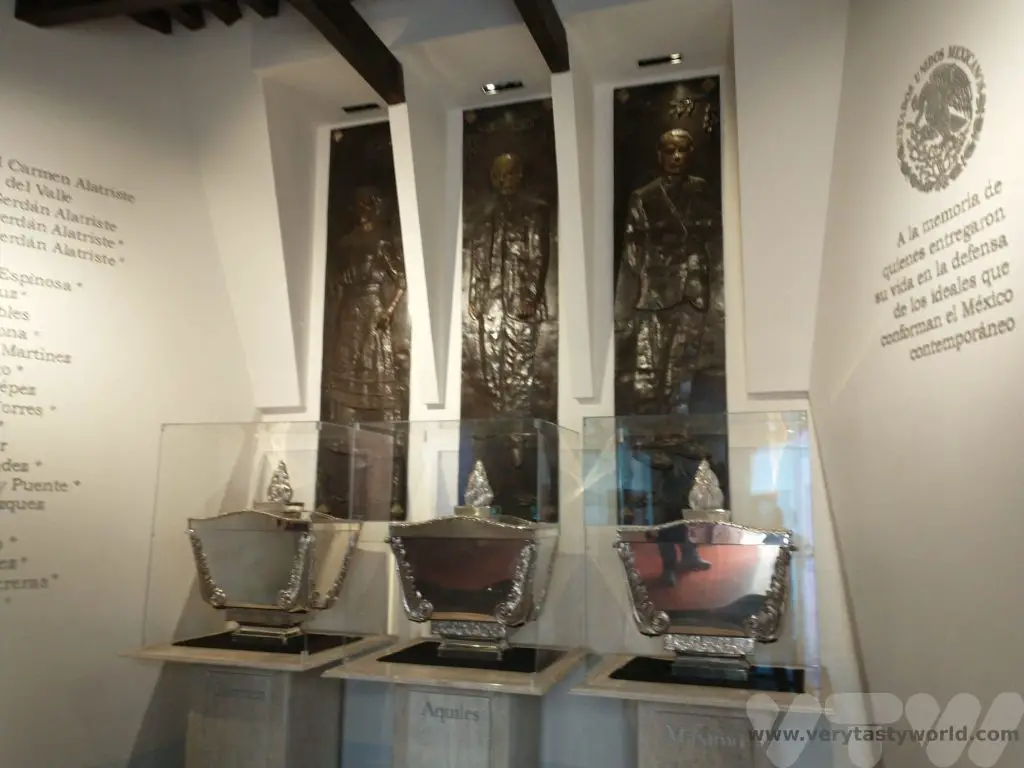
The house has been converted into a museum. It displays the living arrangements of the families.
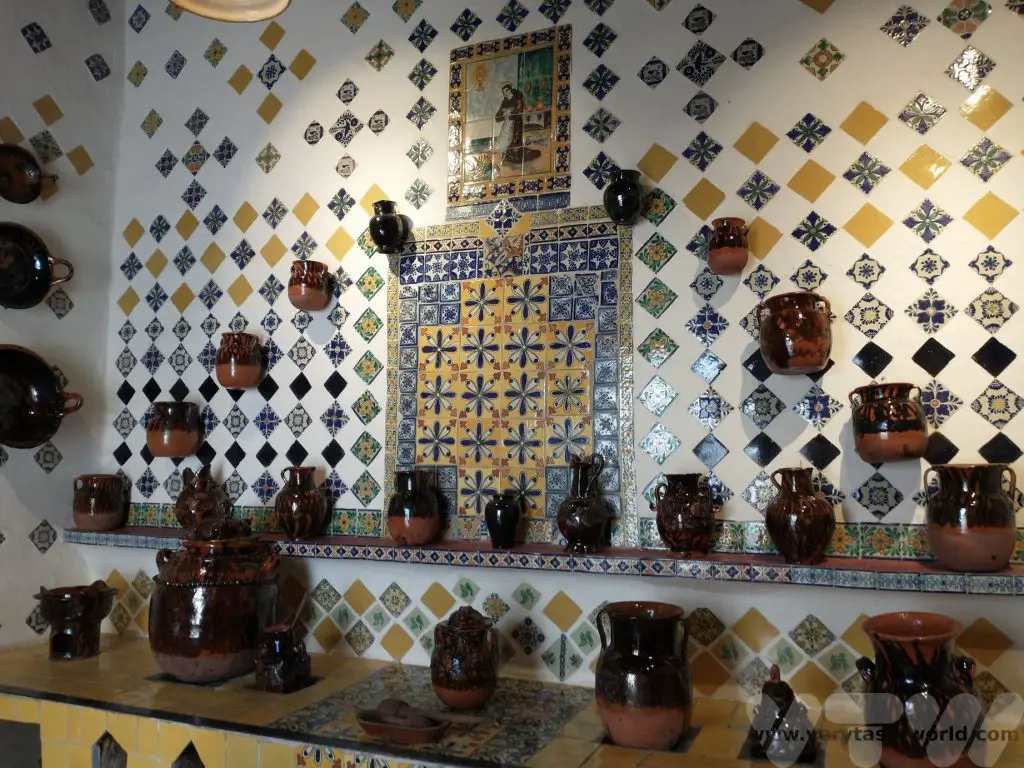
It also gives lots of information about the background of the revolution and its outcome. There is also a room dedicated to the women of the family.

While the bullet holes on the exterior of the house look dramatic, they are actually fake. The building was renovated a few years ago and the workmen unwittingly rendered over the plaster, covering the original holes! After this mistake had been discovered the ‘bullet’ holes were drilled back in. If you look closely it’s quite clear that they could never have been made by bullets fired from guns manufactured in 1910.
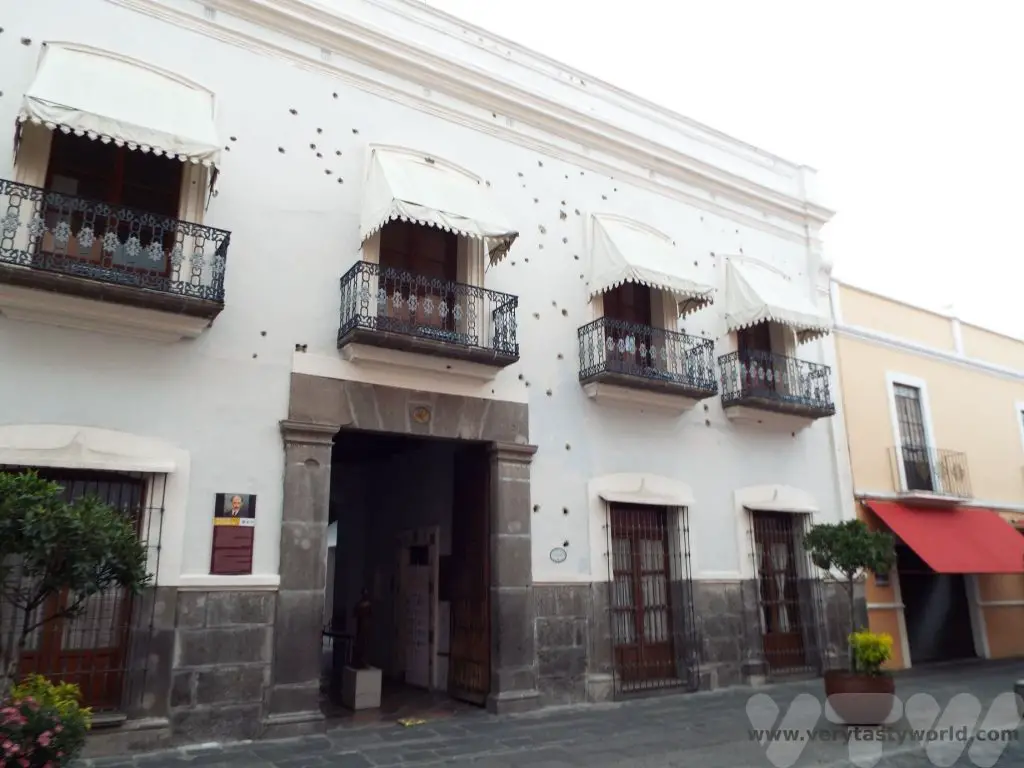
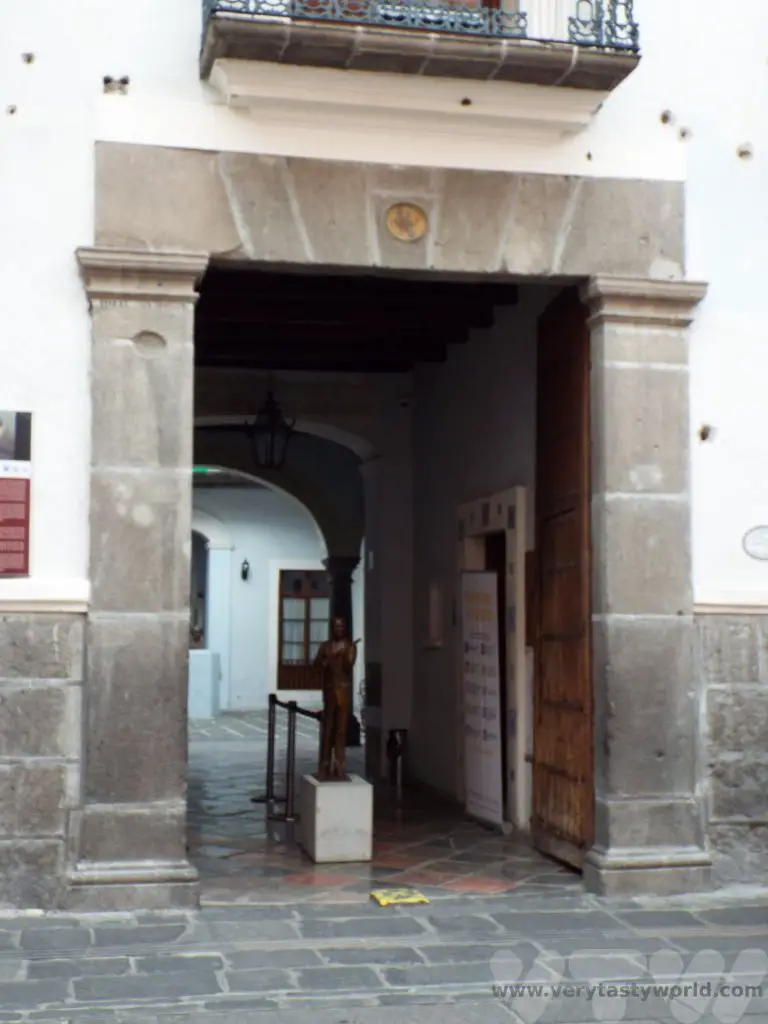
There are some genuine bullet holes in the stone doorframe at the museum’s entrance.
Other Attractions
There are lots of other places to see in Puebla. These are some of the highlights:
Señor de las Maravillas is a 17th century carving located in the Temple of Santa Monica. It is said that the image of Christ was carved from a tree that had been struck by lightning.
Municipal City Hall, located on the north side of the zocalo, houses a museum and art gallery.
International Museum of the Baroque is housed in a very cool building designed by Toyo Ito and exhibits a large collection of baroque art.
Lucha Libre – if you like Mexican wrestling (and who doesn’t?) there is a lucha libre arena which runs fun filled events, where masked wrestlers battle it out in the ring every Monday.
Barrio las Artistas is a great place to hang out and view local artists at work. There are bars and restaurants in the area and there is often live music in the evenings.
A Puebla Food Tour
We had organised a foodie tour which was perfect as an introduction to the sheer unadulterated joy that is Mexican, and specifically Puebla, cuisine. We spent an afternoon wandering through the streets stuffing our faces with the most amazing food.
Street Food
In the little alley Pasaje Zaragoza, just off the northern end of the zocalo, is a street food stall which always has customers queueing for its delights – Tacos El Pasaje. This is a family business and, while this type of outdoor street food is not strictly legal, this stall has been around for such a long time it is looked over. There is even a sign above the stall. All the products are made in the morning and stored in a covered basket. The food remains warm most of the day.
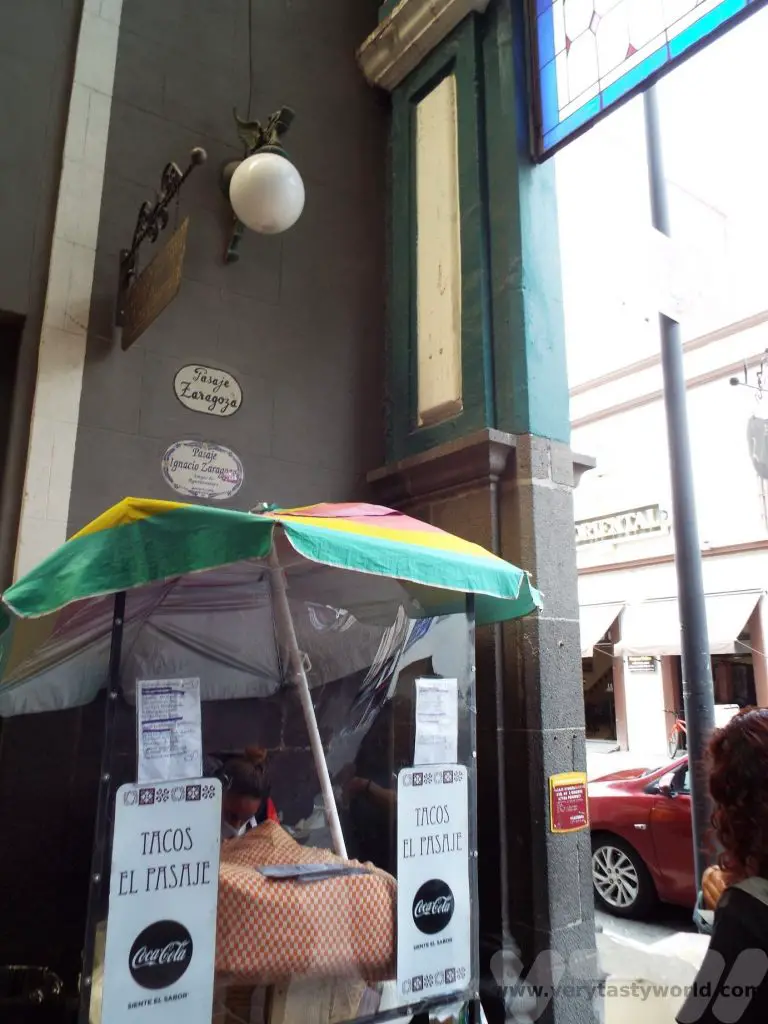
The menu is handwritten – when a particular filling sells out, a line is struck through the menu and you miss out. Until tomorrow, of course. This was where we enjoyed a taco with deep-fried chipotle chilli stuffed with cheese and accompanied with creamy avocado. It was unctuous and not too spicy as the cheese calms the heat of the chilli pepper.
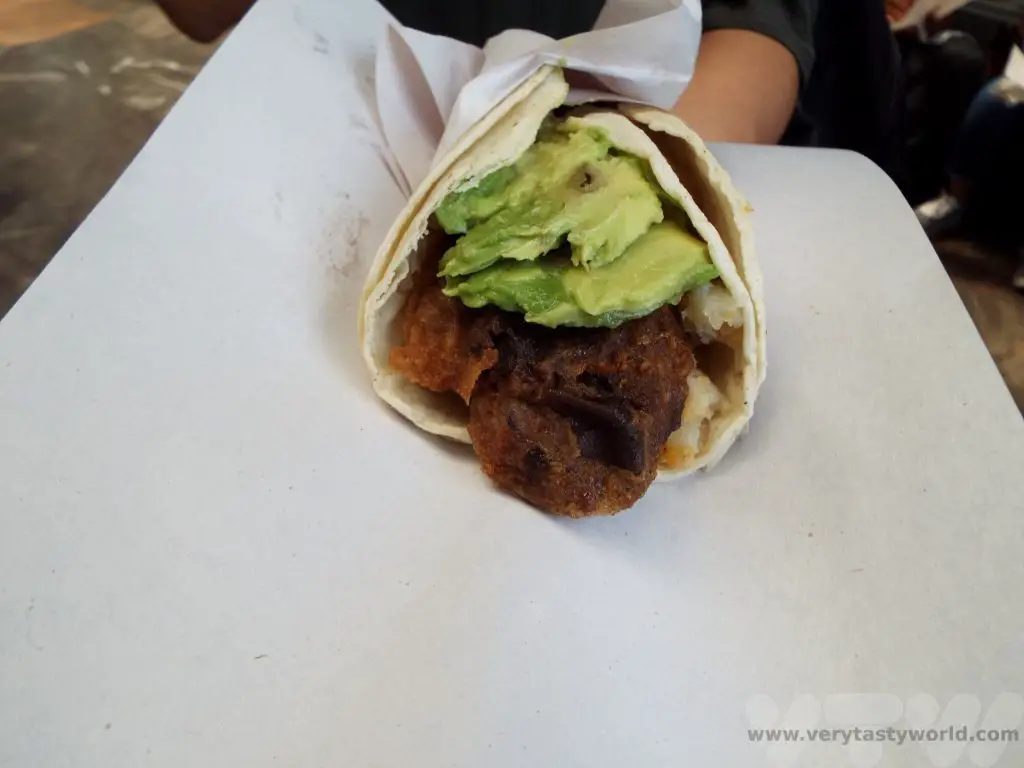
Our next stop was another family business, La Poblanita, a street stall located on Av5 Pte, just around the corner from the Zocalo.
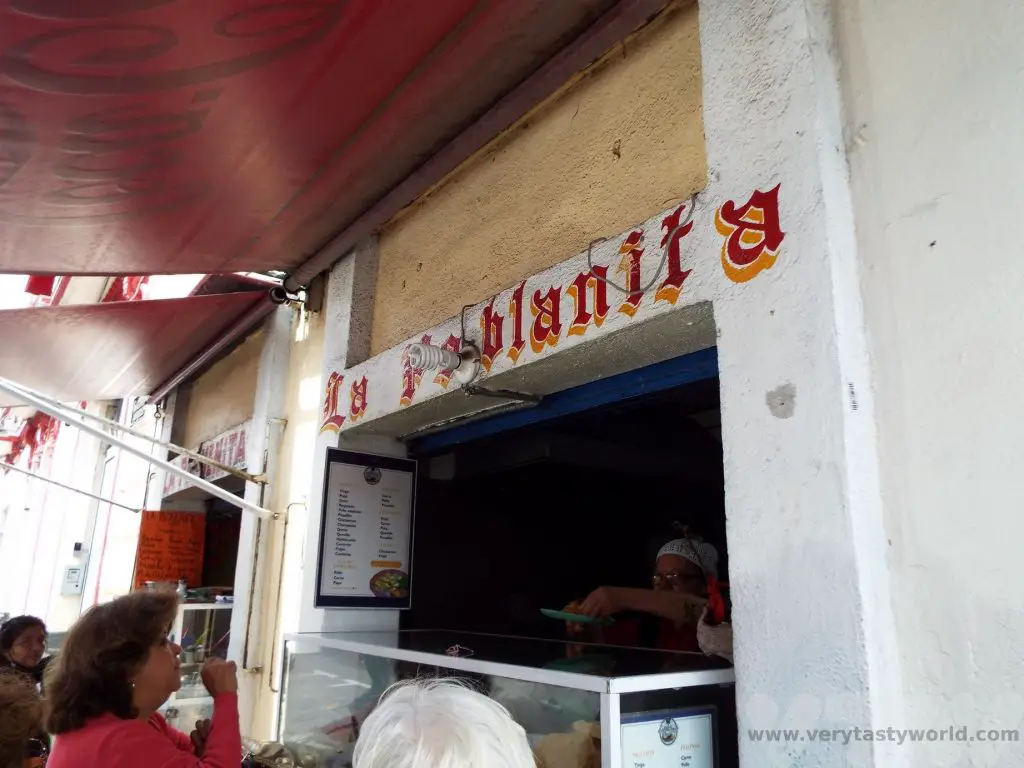
This was where we discovered molotes – a filled tortilla made from corn masa and deep fried. The filling was huitlachoche – corn mushroom – a fungus that grows on the kernel of maize. We had never come across these before and were blown away – the umami flavour was so intense. Our molotes were served with sour cream and salsa.
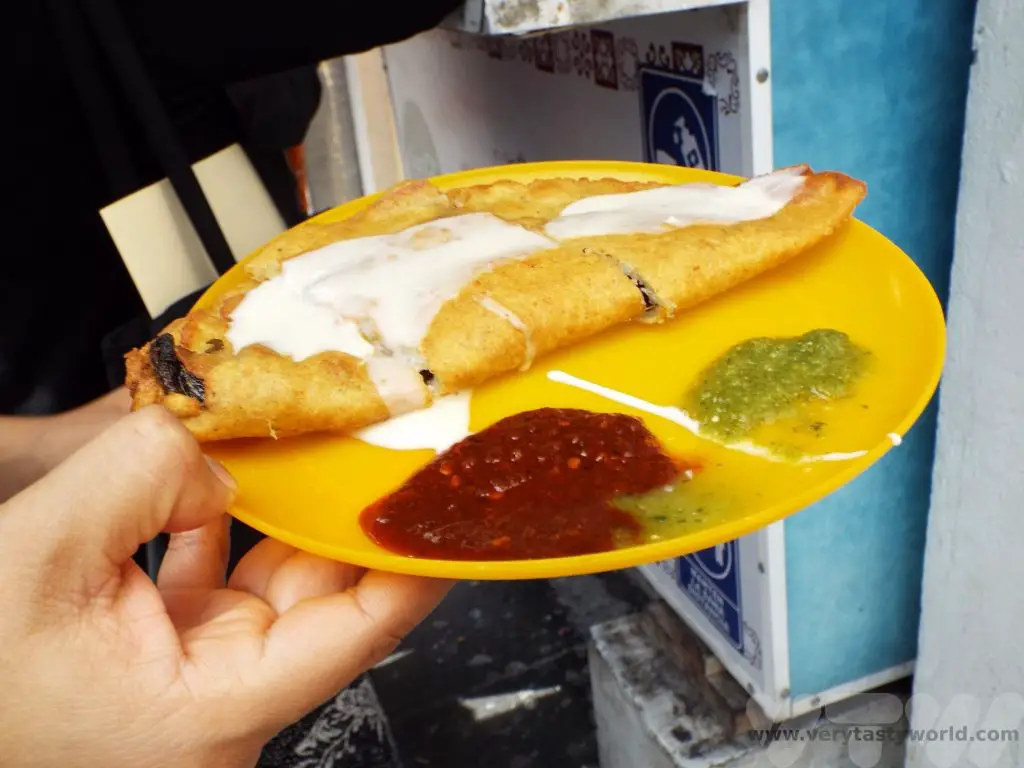
At this stall, we also enjoyed carne (although carne means meat, in this case it was beef) pelonas, wheat bread sandwiches filled with delicious beef and refried beans, and served with with two bright and colourful salsas.
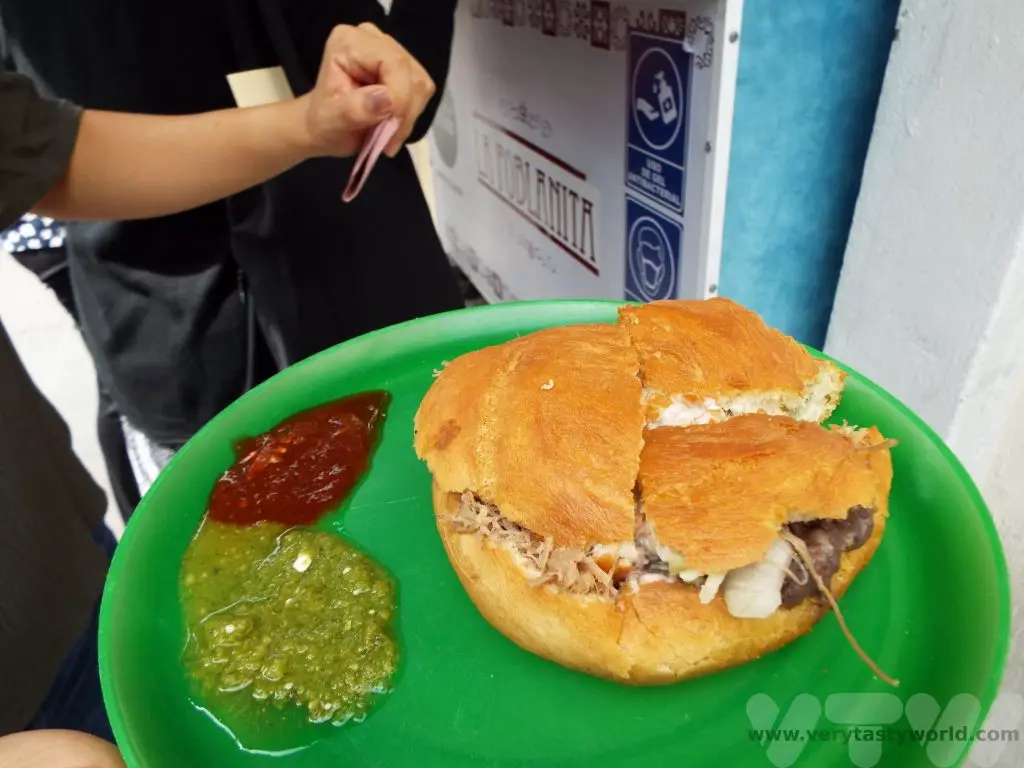
History of Tacos
Tacos could well be considered to be quintessential Mexican food. What we didn’t know was that they are actually a fusion food, imported from the Lebanese community who emigrated to Mexico in the late 19th century. We were quite surprised to see kebab shop-style spits slowly revolving in shop fronts cooking luscious cuts of meat. Tacos became really popular but they evolved in order to adapt to Mexican tastes. Pork, a meat rarely seen in the Middle East, replaced lamb and then the dish incorporated the local inclination to embellish the tacos with all sorts of salsas, condiments, and additional flavours. In Mexico, more is definitely more.
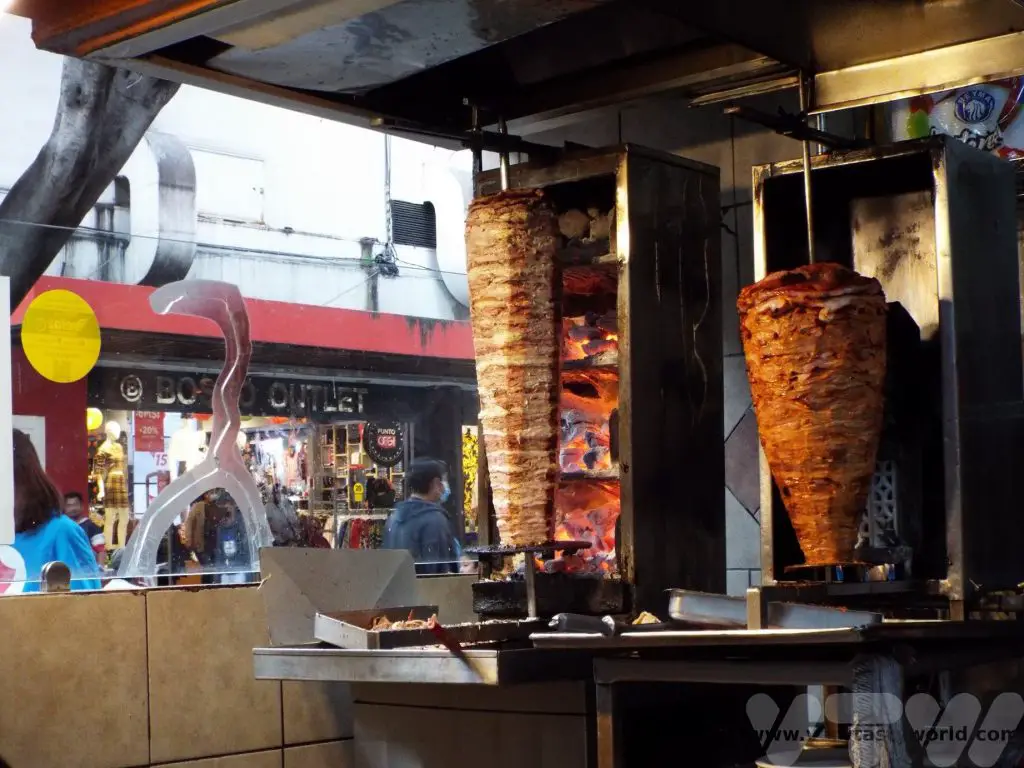
Taco Arabe are chargrilled pork tacos on a wheat bread tortilla. It’s a flatbread, a bit like a pitta but without the pocket – instead it is folded. We ate this with a sweet chipotle sauce and a squeeze of lime.
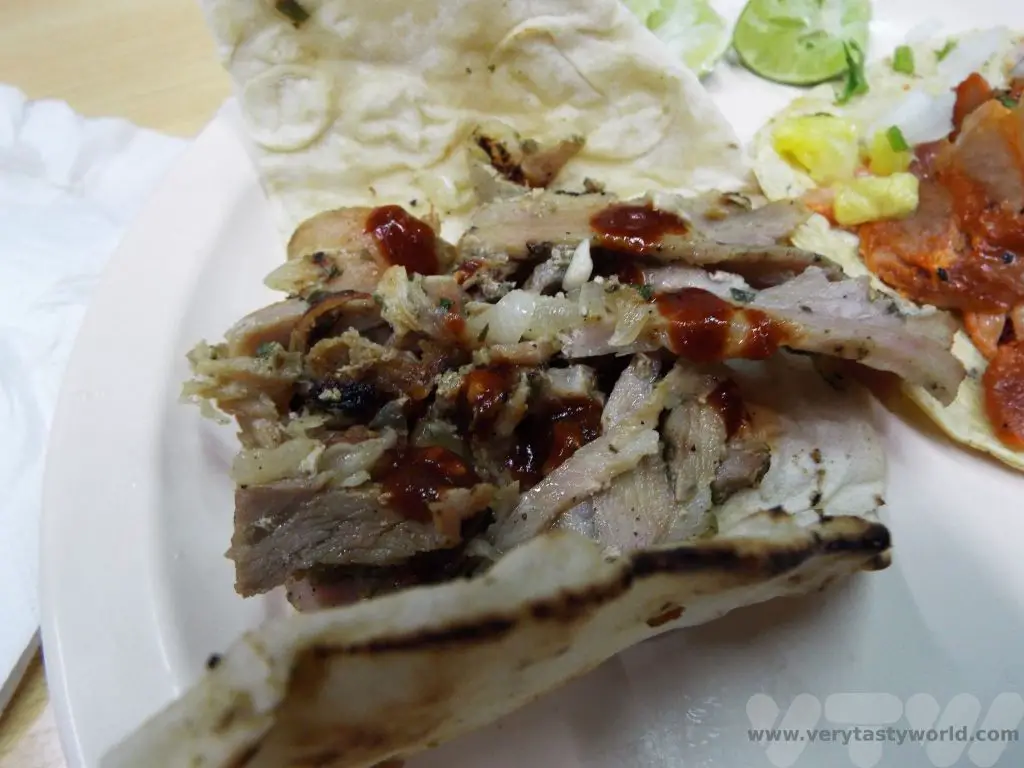
Al Pastor tacos have spiced pork inside a corn tortilla. We ate these with teeny chunks of pineapple, lime juice, coriander, finely diced raw onion, and a creamy avocado sauce.
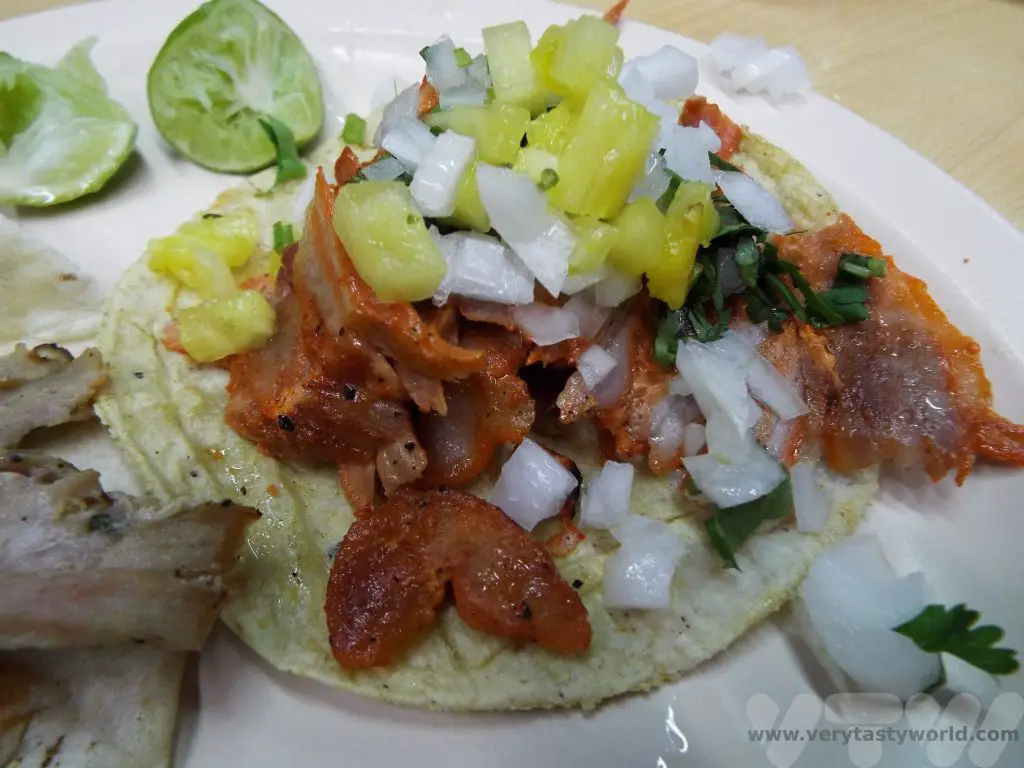
Most of the taco restaurants that we visited offered a number of salsas and multiple wedges of lime for the table. The etiquette for tacos is that they will arrive at your table either folded or open. If they are folded, open them up, add whatever salsa and additional flavours you want, roll or fold them up again, and scoff.
Our next stop offered some sweet surprises. The nuns at the convent on Santa Clara make cakes and sweets and these are sold in the lovely shop across the road.
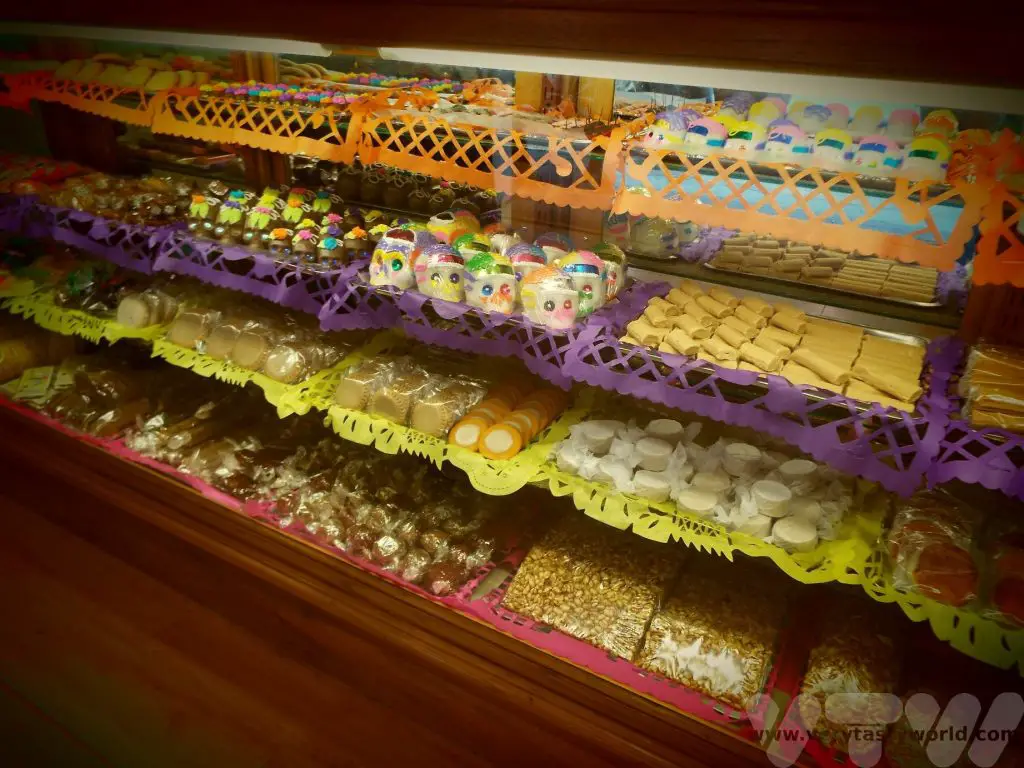

Camotes de Santa Clara are a sweet potato cylindrical-shaped paste flavoured with fruit and honey. There are several fruit flavours available – we chose strawberry.
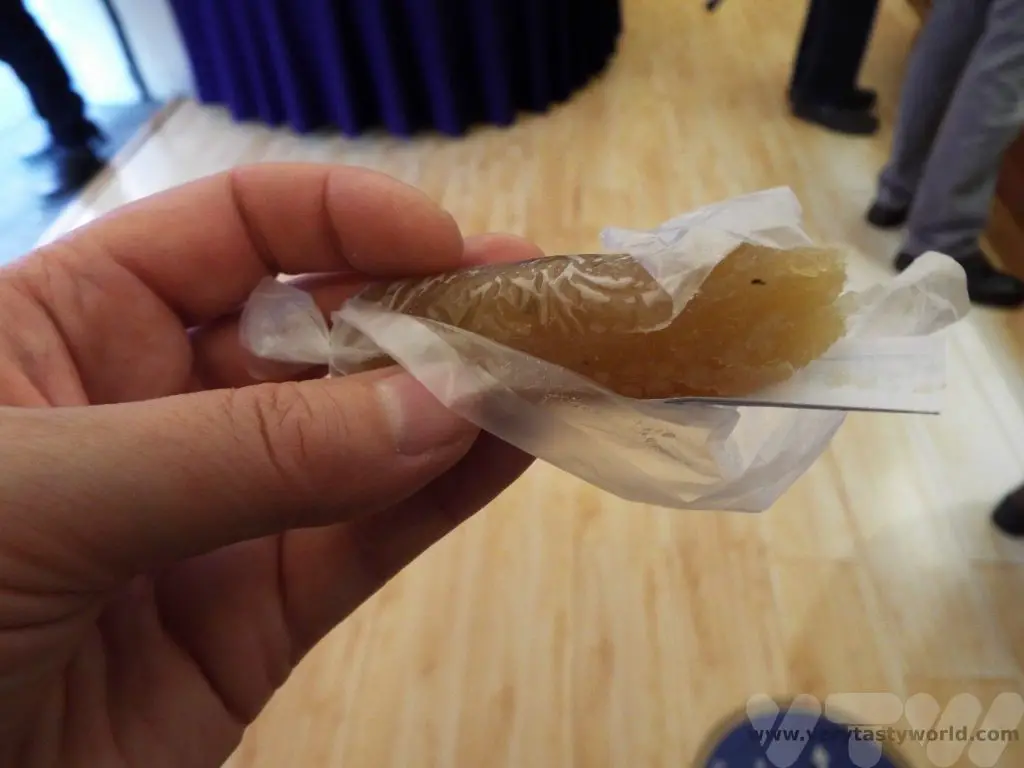
Tortitas de Santa Clara (torte from cake in Spanish) is a delicious fusion of Spanish biscuit base with a filling made from indigenous ground pumpkin seed and honey. A sprinkling of some of the local volcanic salt adds another dimension. This is a nice crumbly biscuit that has a lovely sweetness and smooth peanut butteriness of the pumpkin seeds.
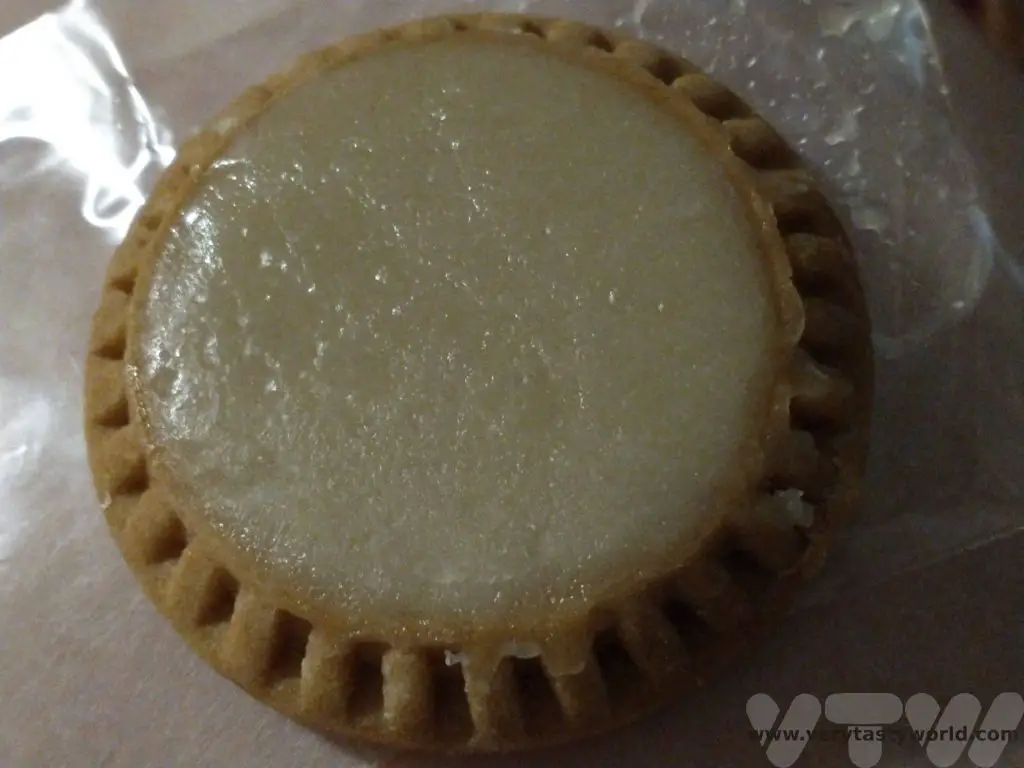
A Magical Market
A short walk out of town, across the road (which used to be the river), took us to Mercado Municipal La Acocota. It was lovely exploring this market, which had so many stalls selling fabulous-looking wares.
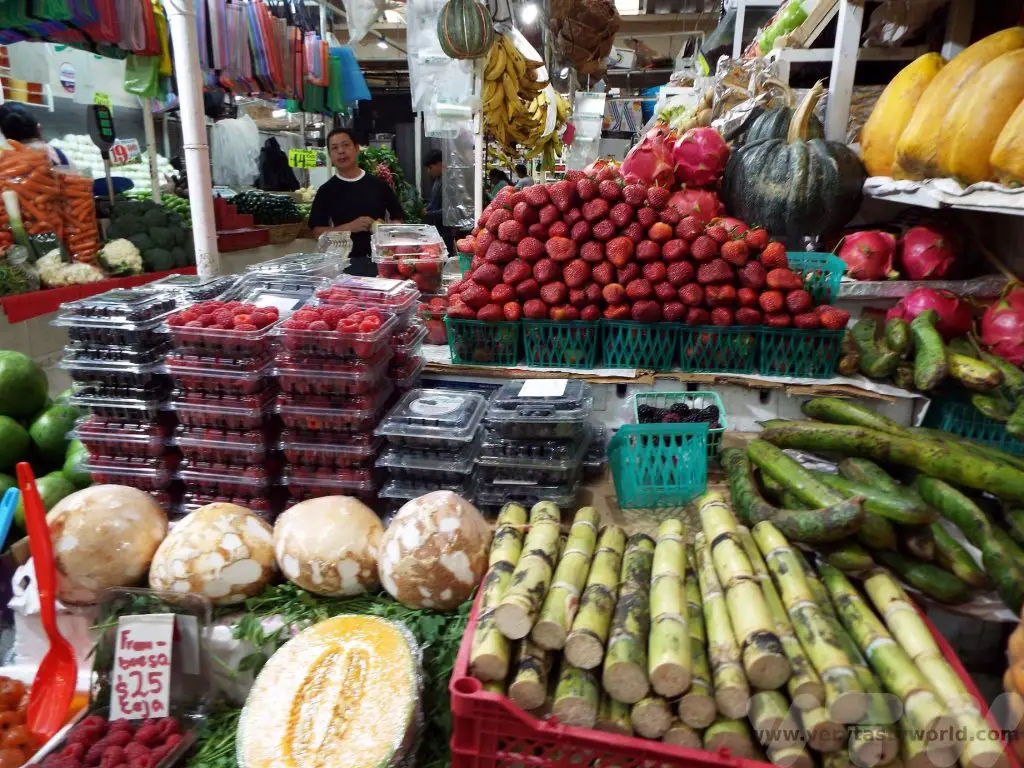
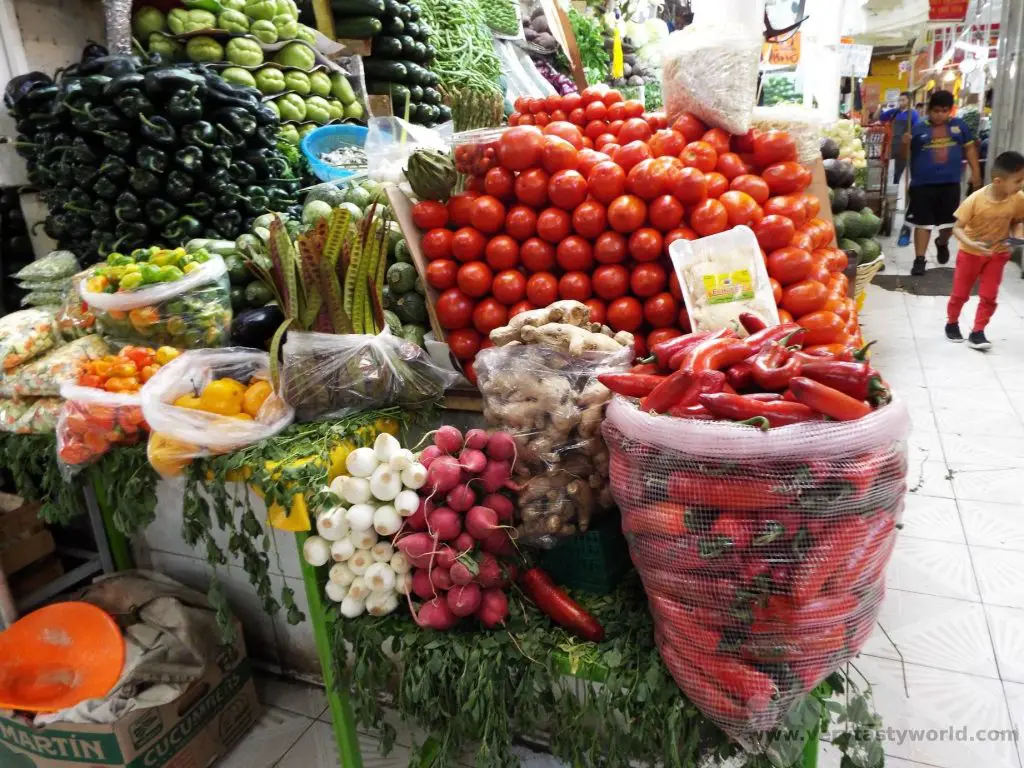
We also discovered the corn mushroom for sale.
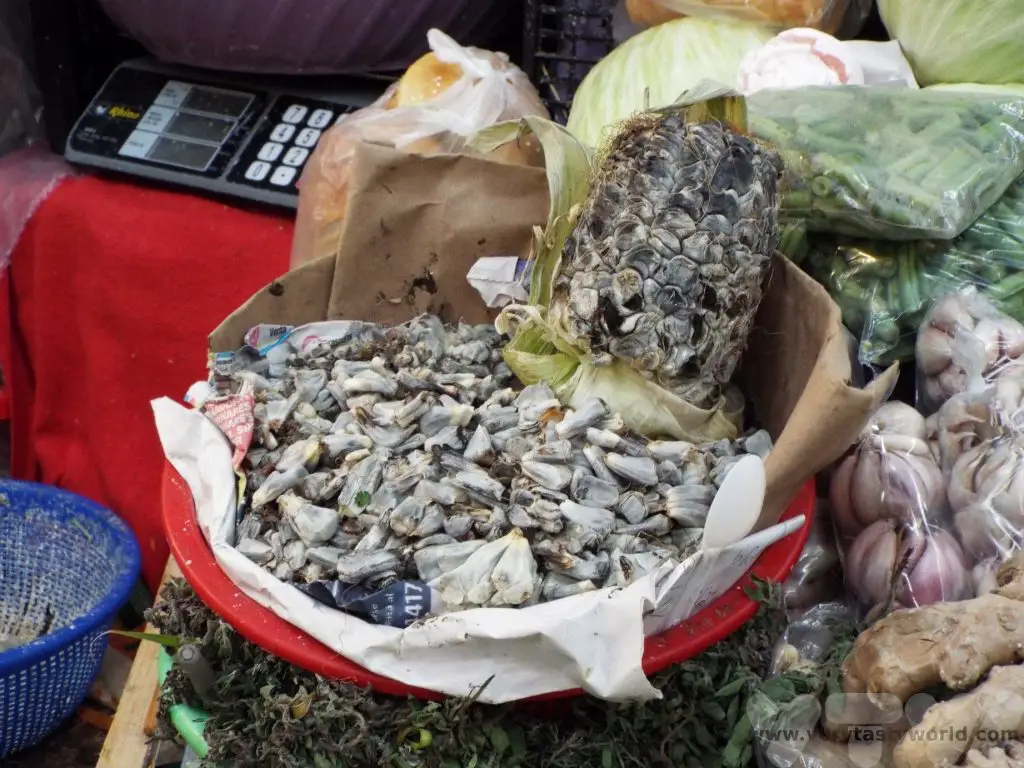
We’ve never seen so many different varieties of chilli pepper!
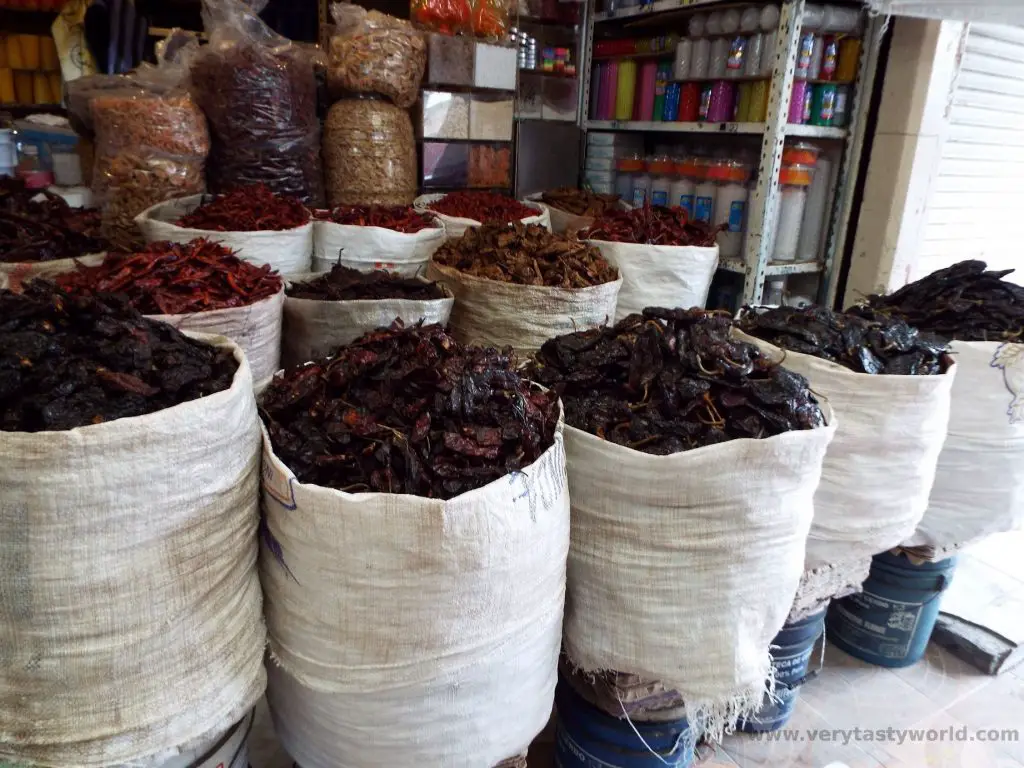
But we weren’t there to shop. We also had plans to eat. You can’t say you’ve been to Puebla unless you have tried a cemita – a massive sandwich of very great deliciousness.
Samita is another family-run business with three generations all working together at the market. They have a fantastic reputation. You sit on stools around the stall and can chat with other customers. Everyone was delightful. The bread is very important in the cemita – it is a wheat-based roll – substantial and fluffy. We enjoyed a Milanese escalope with stringy cheese, jalapeno and avocado.
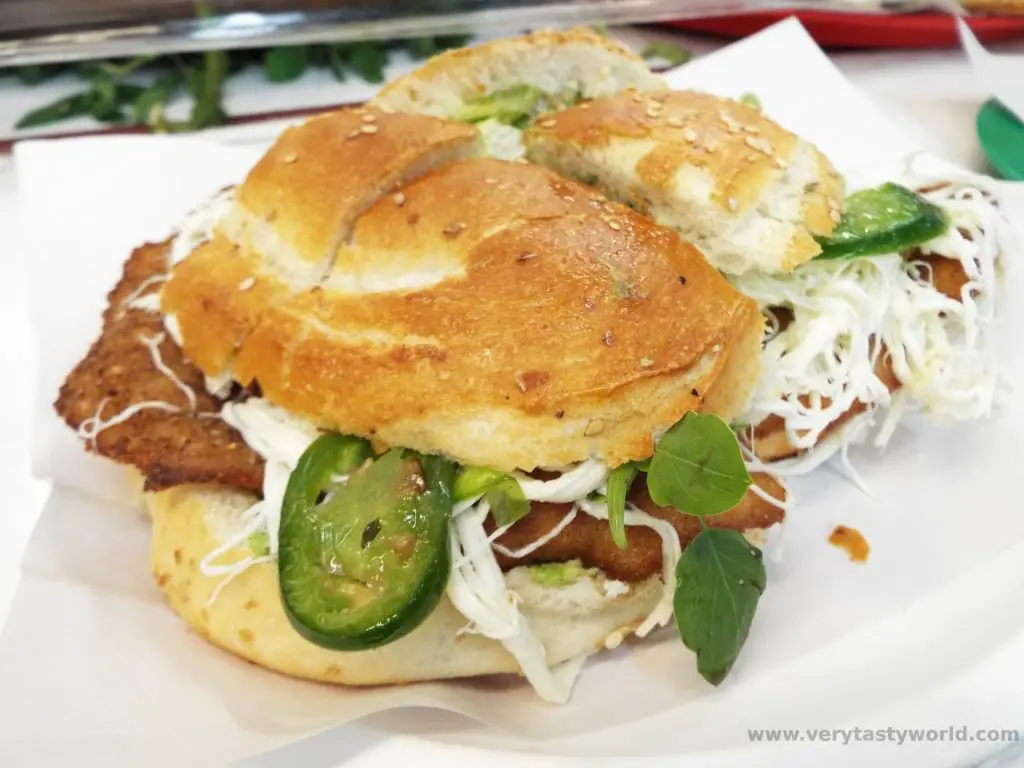
The mega cemita has four fillings including escalope, boiled pork skin, ham, or sliced cheese.
Puebla’s most famous dish is mole (pronounced molay) poblano. It’s another essential dish to try when visiting the area. Over twenty ingredients are used in the most simple mole, including multiple types of chilli, a variety of nuts, and chocolate. The mole at this market is considered to be much more authentic than moles that you will eat at hotels, which are generally more sweet and less spicy. This is where the market stall holders come to eat their lunch – there is always a variety of moles on offer.
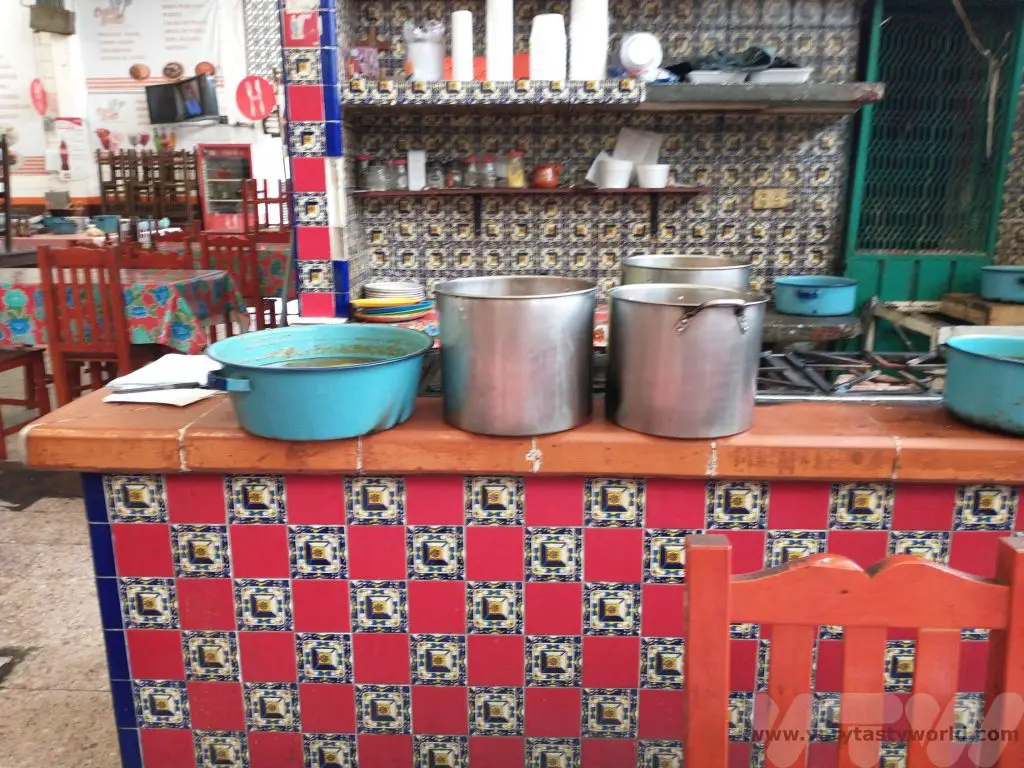
The market’s mole was far more complex and sophisticated. It has a slow burn from the chilli and a mild, but important, bitter element. You get hit by heat in first mouthful but then your mouth gets used to it and can start to savour the other flavours which also include sweetness. This was a rolled tortilla, with no filling, topped with mole sauce, sesame, raw onion and strips of boiled chicken. Simple. Classic.
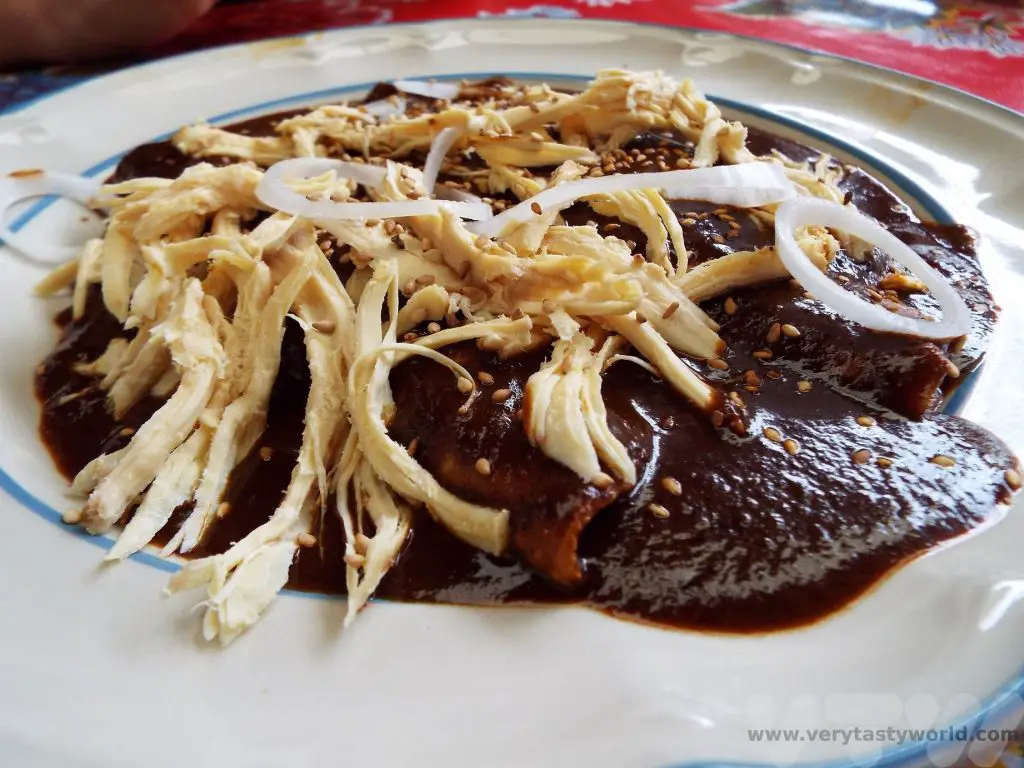
And finally, almost full to bursting point, we stopped off at a local cantina, actually inside an antique shop, where we indulged in a shot of pasita, a liqueur digestif made from raisins.
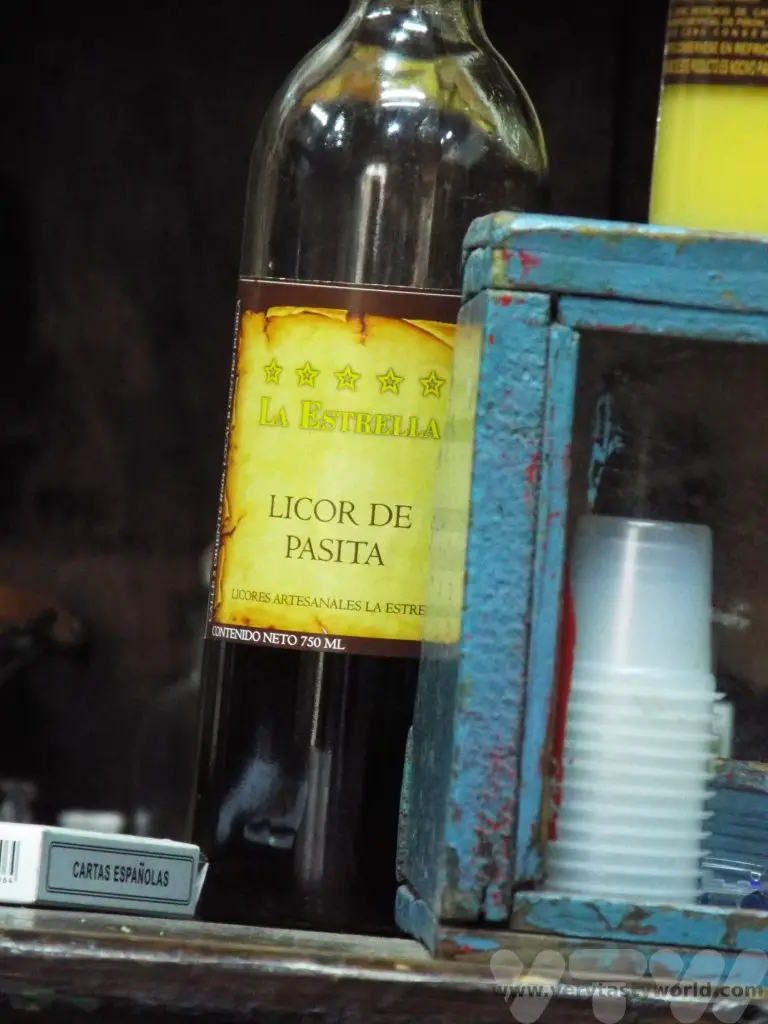
It’s sweet and boozy and rounded off an amazing tour.
Fine Dining
The street food tour of Puebla was a fantastic introduction to this city’s delectable, diverse and delicious cuisine. We also have a restaurant recommendation for local food in a fine dining context (which we visited on a different day to the foodie tour). El Mural de los Poblanos is on Calle 16 de Septiembre and offers typical Puebla food. Again, this mole was more authentic than some of the more touristy establishments.
It’s very popular so it’s definitely worth making a booking. Also, we made the mistake of ordering cemitas as our starters (before we knew what they were) which turned out to be so enormous that we knew we wouldn’t be able to eat our mains if we ate them all, so the staff were very kind and boxed up the extra food for later snacking.
There is also a craft beer emporium, the Bilderberg taproom on Av 5 Ote, which we felt was important to investigate. They offered pints of local draft beer as well as tasting flights. They had a stout which was extremely good indeed, although it was only after we’d quaffed a couple of pints and tried to stand up that we realised that it was 12%! Those leftover cemitas came in handy soaking up the booze later that night to try to mitigate the hangover.
We thoroughly enjoyed our time in Puebla – there was so much to see and do and taste. We’d consider it an essential stop on any Mexico tour. We can’t wait to return!
Related Posts You May Enjoy

- Best Time To Visit Machu Picchu 2024 Update
- A 2 Week Patagonia Itinerary
- Day of the Dead in Campeche
- A Galapagos Land Based Itinerary
- RECIPE: How to Make Costa Rica’s Gallo Pinto
- A Tasty Puebla Food Tour
- Costa Rica Wildlife Sanctuary – Caño Negro
- Visit Torres del Paine National Park in Patagonia
- Atacama Desert Itinerary
Osaka Restaurants Japan – Kuidaore on Dotonbori
We visited Osaka (pronounced O-saka rather than o-SAR-ka) on our very first trip to Japan many years ago. We had already spent time exploring Tokyo, Hakone and Kamakura and it was following an afternoon and evening in Osaka, exploring the neon arcades and playing video games, taking silly photos in the print club booths, riding the Hep 5 big wheel and singing our socks off in a karaoke bar (where you get a private booth rather than have to sing in front of complete strangers), that we realised that we had fallen in love with Japan. The following day we visited the Dotonbori area in the Namba district and discovered Osaka’s restaurants. We decided that Osaka was our favourite place in the world.

We’ve returned to Osaka many times over the years and we always make a beeline for Dotonbori. We’ve often stayed in business hotels close by. It’s a short walk away from the JR Namba Station Exit 14 (Yamatoji line), which is especially useful if you are using your JR Pass. Be aware that Namba is a big station. If you are arriving on the shinkansen (bullet train) you can get there from Shin-Osaka using the subway Midosuji line to Shinsaibashi Exit 4-B. (N.B. you can’t use your JR Pass on the subway.)

Osaka is known for being one of Japan’s centres of commerce, indeed there’s a phrase that many salarymen use as a greeting: ‘mokari makka’ which means ‘are you making money?’ The residents of Osaka speak Kansai Ben, the dialect of the region. It’s quite different to the Japanese we’ve learned in classes. For example, Osaka residents will say, ‘okini’ as thanks instead of ‘arigato’; although arigato will absolutely be understood you may well receive a big smile if you use ‘okini.’
Dotonbori History
Dotonbori means ‘Doton Canal’ and the history of the area goes back several hundred years to 1612 when Yasui Doton, a local merchant, started constructing a canal system in the area to link the Kizugawa river to the Umezu river. However, he was killed in 1615 during the Siege of Osaka and his cousins completed the canal project, naming it after Doton. Following completion, the area thrived, trade increased due to the better transportation along the canal and Dotonburi became an entertainment district, with theatres, teahouses and restaurants. It’s a fantastic place to visit, especially for foodies!

The district is defined by street between the Dotonboribashi Bridge to Nipponbashi Bridge. Probably the most iconic image of the area is that of the Glico running man – and it’s essential to see him at night, brightly lit in neon. Glico is a sweet manufacturer established in 1922 and famous across Japan. They are probably best know for those delicious Pocky coated biscuit sticks.

Dotonbori is one street, but actually the surrounding streets are also full of excellent bars and restaurants. We’ve had some of our best nights out in Osaka by wandering into random bars in the area. Locals and tourists alike are very friendly and we’ve often just started chatting with people. There was one particularly memorable night when a pair of airline pilots decided to buy Jagermeister bombs (a Jagermeister shot inside a glass of Red Bull) for the denizens of the entire bar which resulted in a highly caffeinated boozy evening and us sleeping in so late that we missed much of a planned excursion to Kobe the following day!
Kuidaore
The word ‘kuidaore’ means to go bankrupt by extravagant spending on food and Dotonbori would be a place where you could have a really good attempt at achieving this as it is chock full of excellent restaurants.
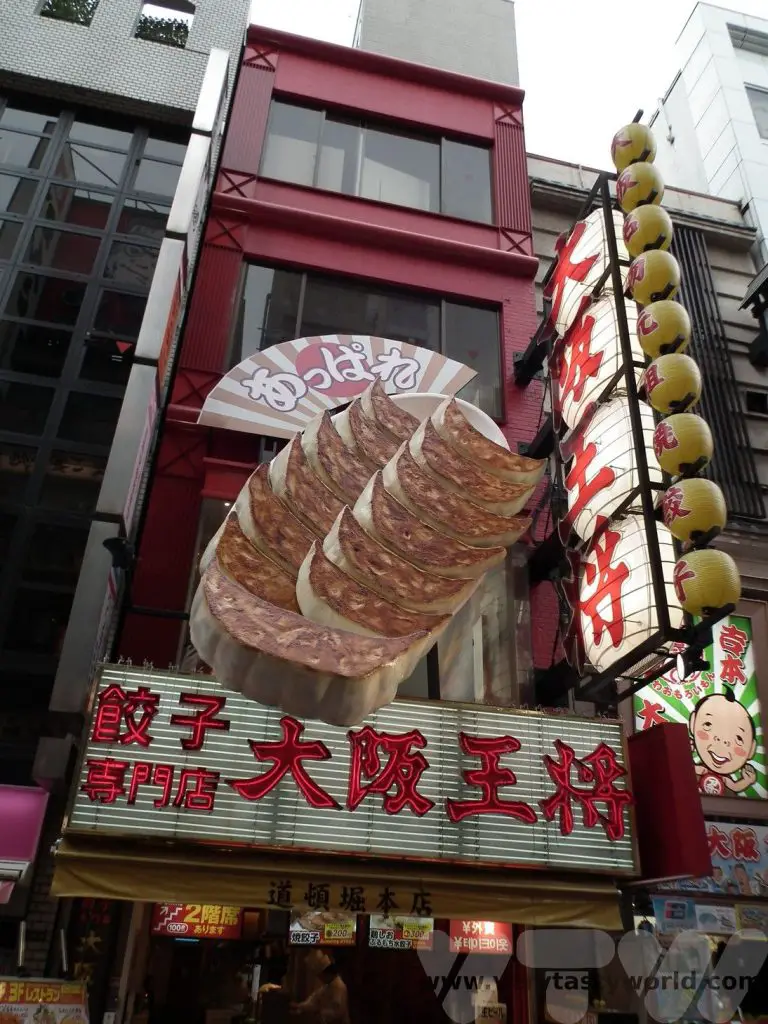
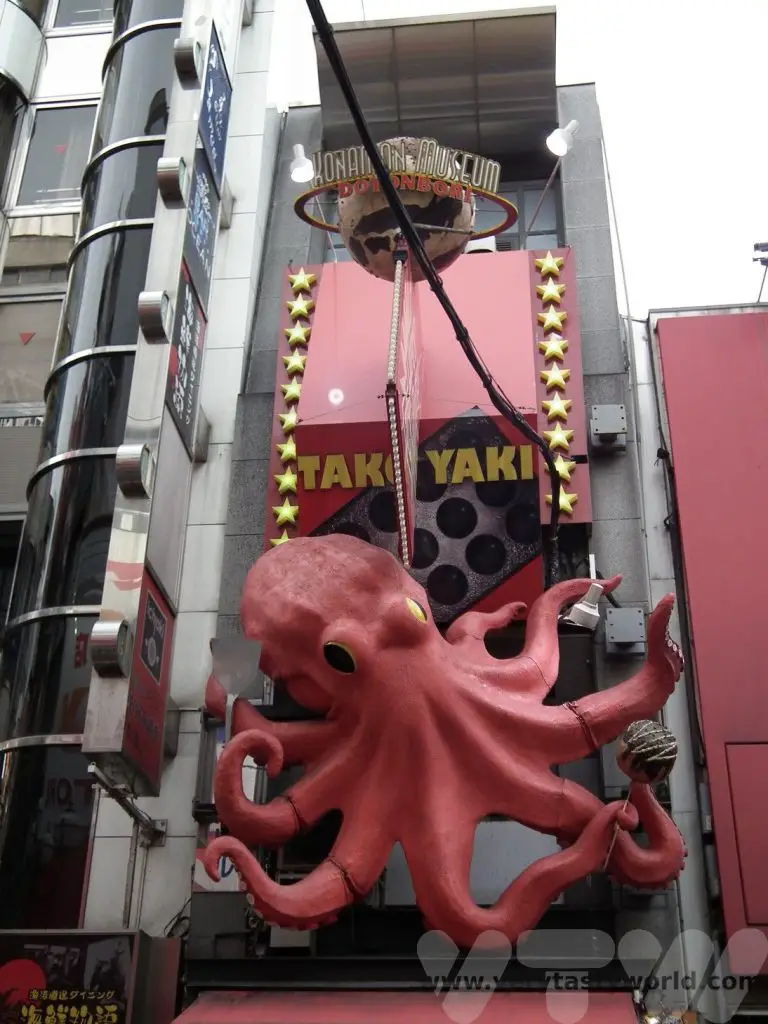
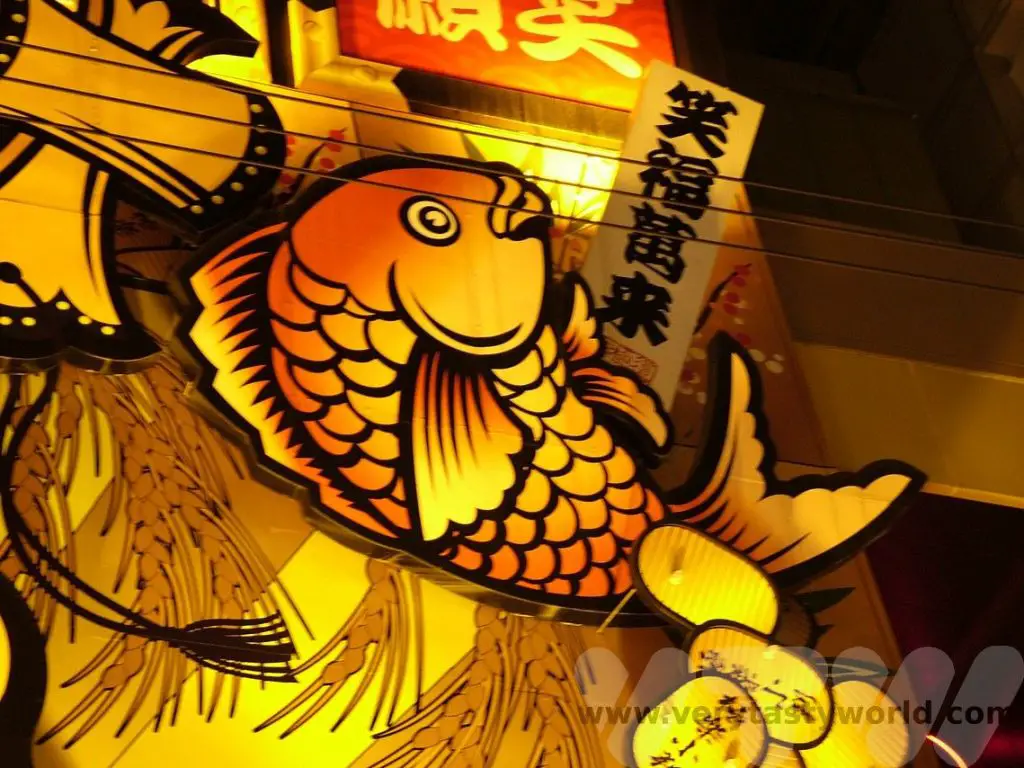


One thing to remember when visiting cities in Japan is to look up! In the UK most shops and restaurants are located at ground level but Japan is a country with high rise buildings. Very often shops and restaurants will be located on multiple levels within the same building. You will often see boards outside the building advertising various emporia: F1, F2 etc to go up, B1, B2 etc to go down. (N.B. floor levels in Japan match the American model where the ground floor is called the first floor, unlike in the UK where the ‘ground floor’ is at street level and the next floor up is the ‘first floor’.)
Essential Osaka Restaurants
Takoyaki – The Best Street Food
Takoyaki is quintessential Osaka street food. It comprises spherical octopus pieces in a batter which are cooked en masse in a griddle.
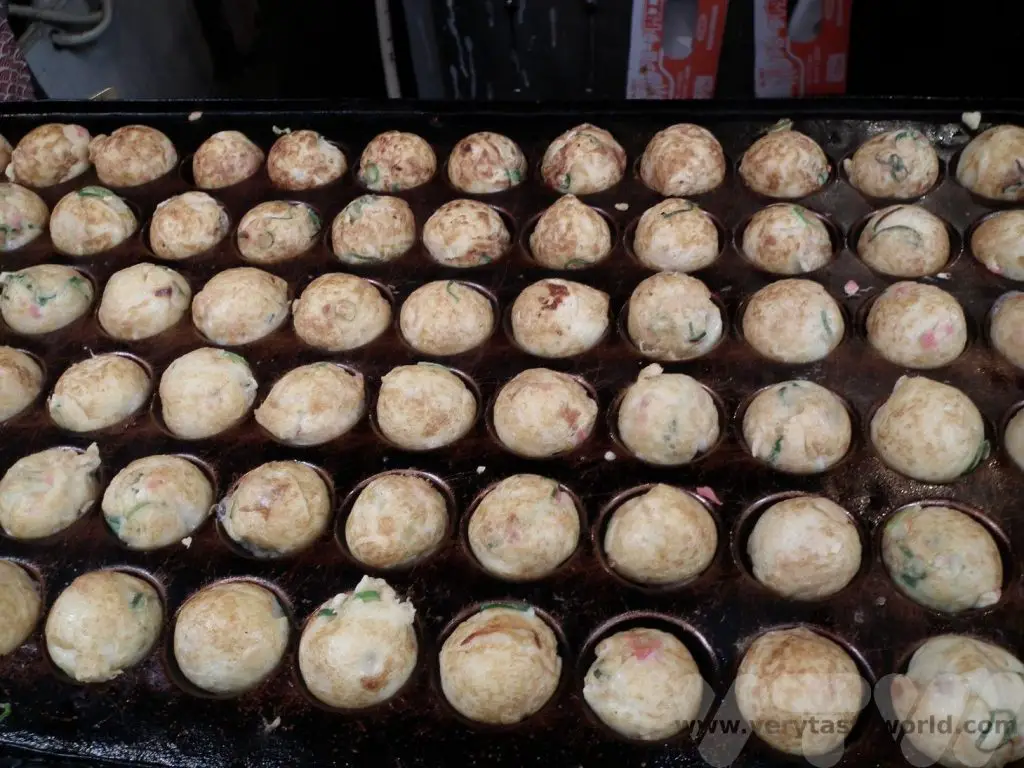
The takoyaki maker expertly and deftly turns each octopus ball by hand so that they are cooked evenly.
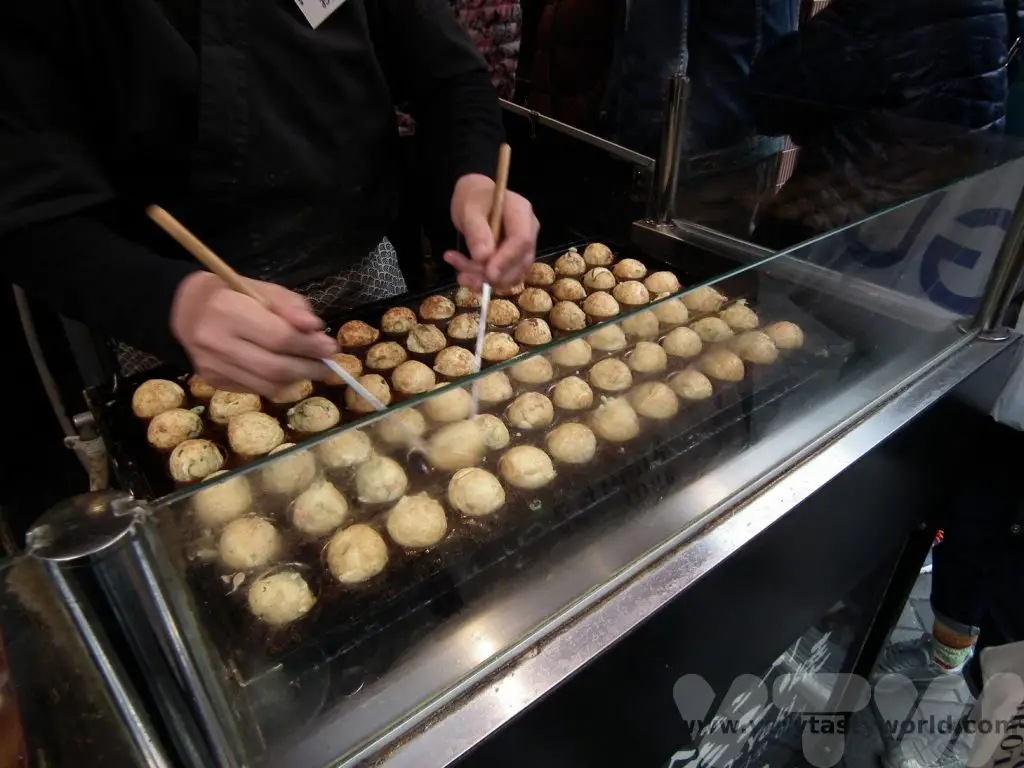
Served with mayonnaise, takoyaki sauce (which is similar to brown sauce) and bonito flakes (skipjack tuna flakes shaved to wafer thin slices – which are rich in umami and are often used to make Japanese dashi stock), which undulate gently in the heat of the takoyaki. You just have to wait a little while before scoffing because they will be extremely hot as soon as they come out of the griddle.
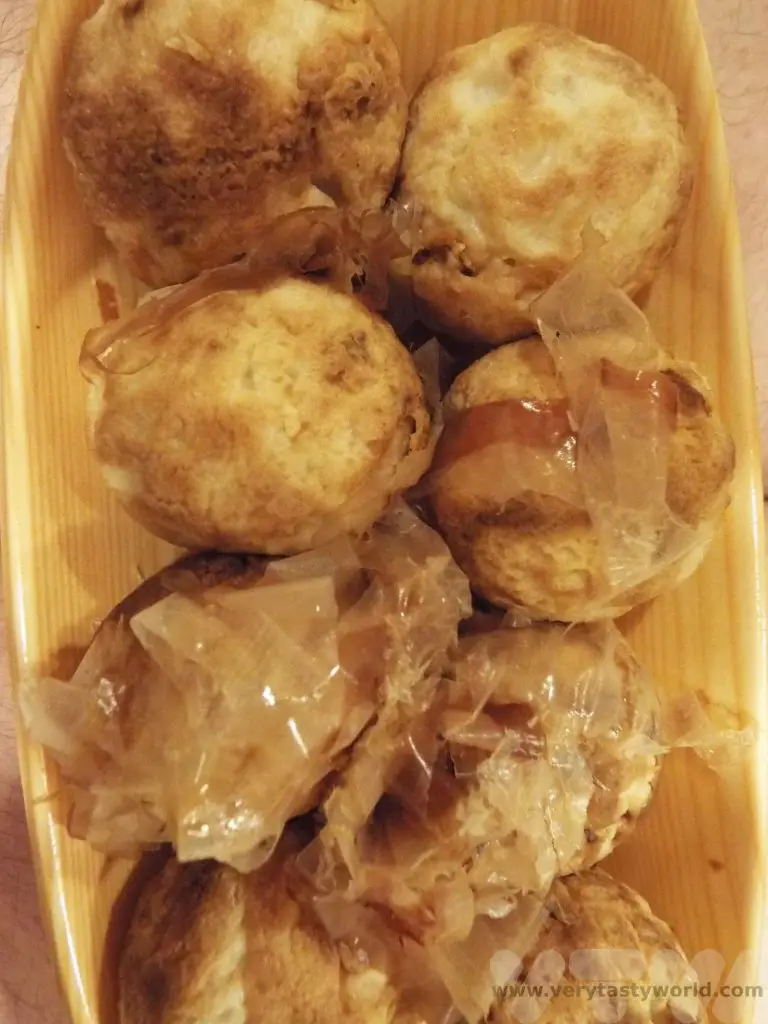
Okonomiyaki – As You Like It
Okonomiyaki, which translates as ‘as you like it’, is often described as a cross between a pancake and a pizza. It’s a cabbage based batter (but don’t let that put you off – it’s really delicious) with multiple fillings and toppings. Some establishments have a chef prepare the okonomiyaki, others will let you sit at the griddle and you can cook it yourself.
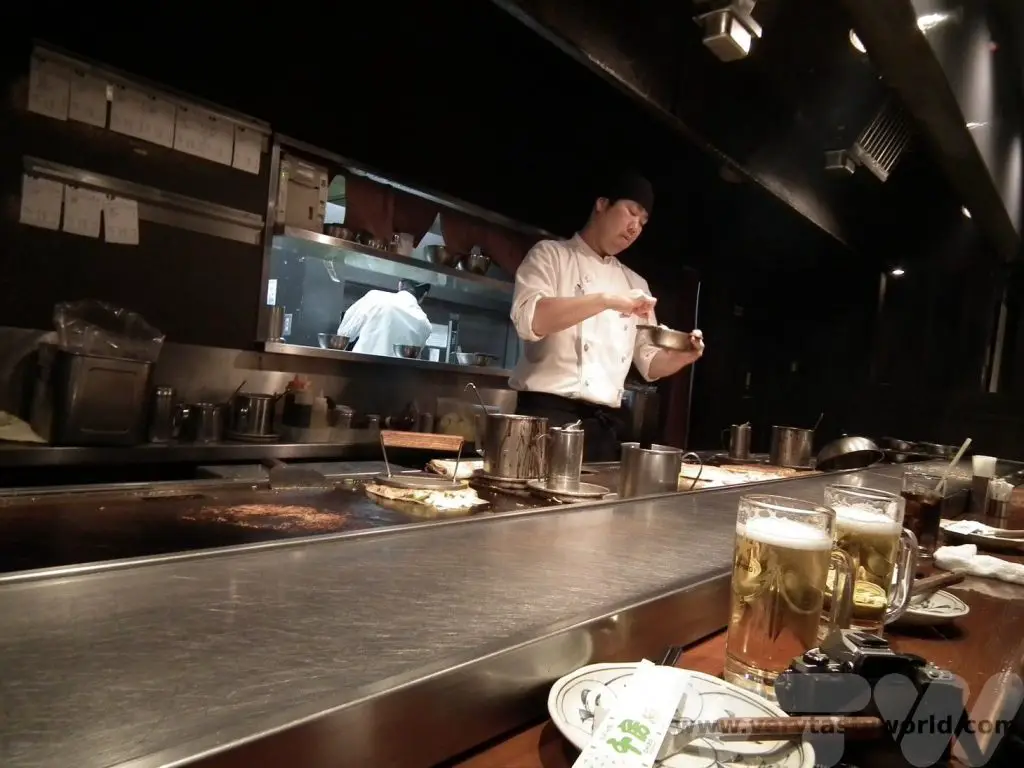
The basic batter mixture is prepared and cooked on the griddle.
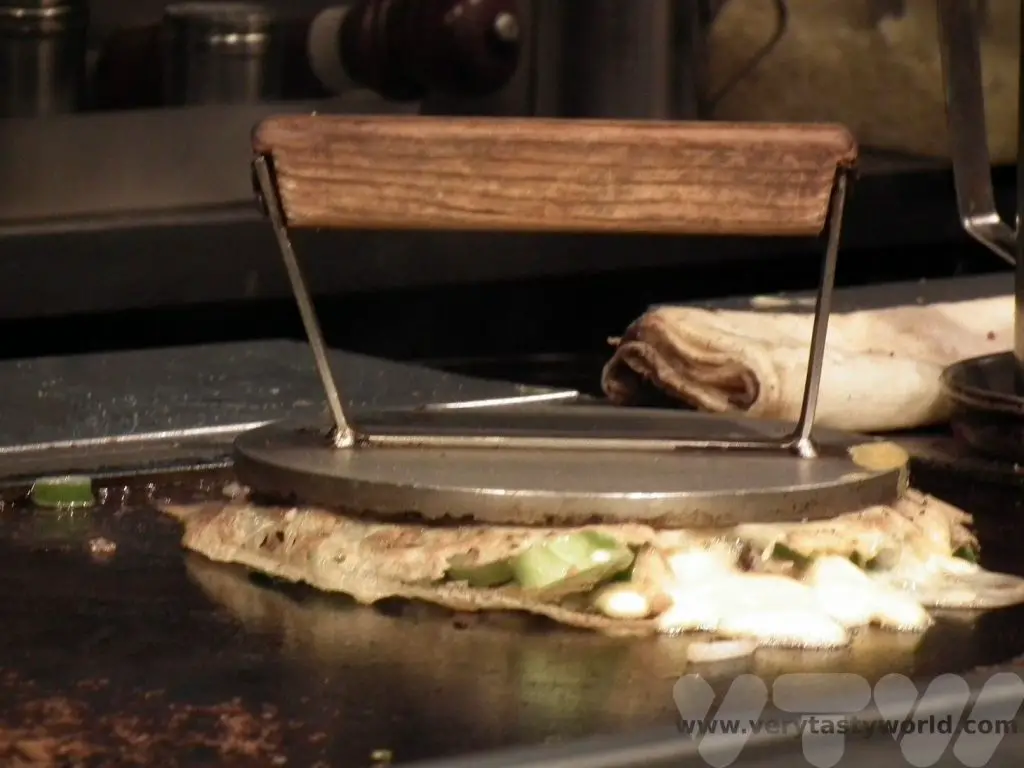
Then you have a choice of toppings – meat and prawns are popular choices and veggie options, such as kimchi are also available.
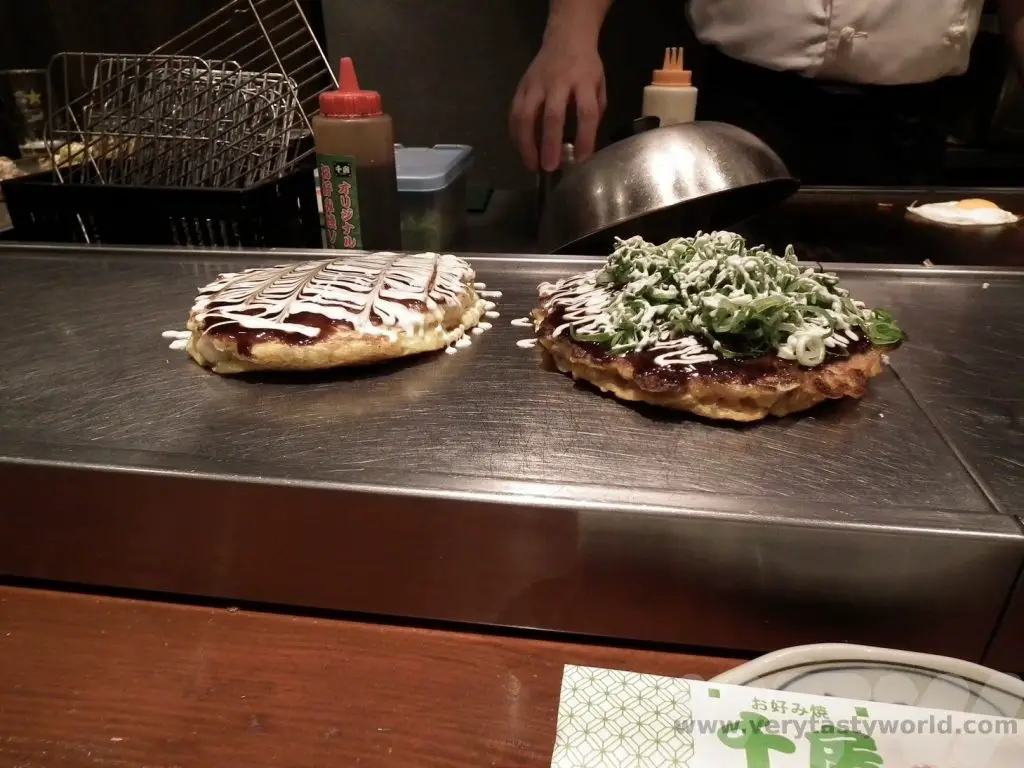
The okonomiyaki will be garnished with a variety of yummy things, including mayo, okonomiyaki sauce (similar to takoyaki sauce/brown sauce), flakes of nori seaweed and those delightful undulating bonito flakes. Chilli sauce may also be available. The chef will embellish your okonomiyaki in the most delightful way. And of course, when the chef asks you what garnish you would like, the correct answer is EVERYTHING!
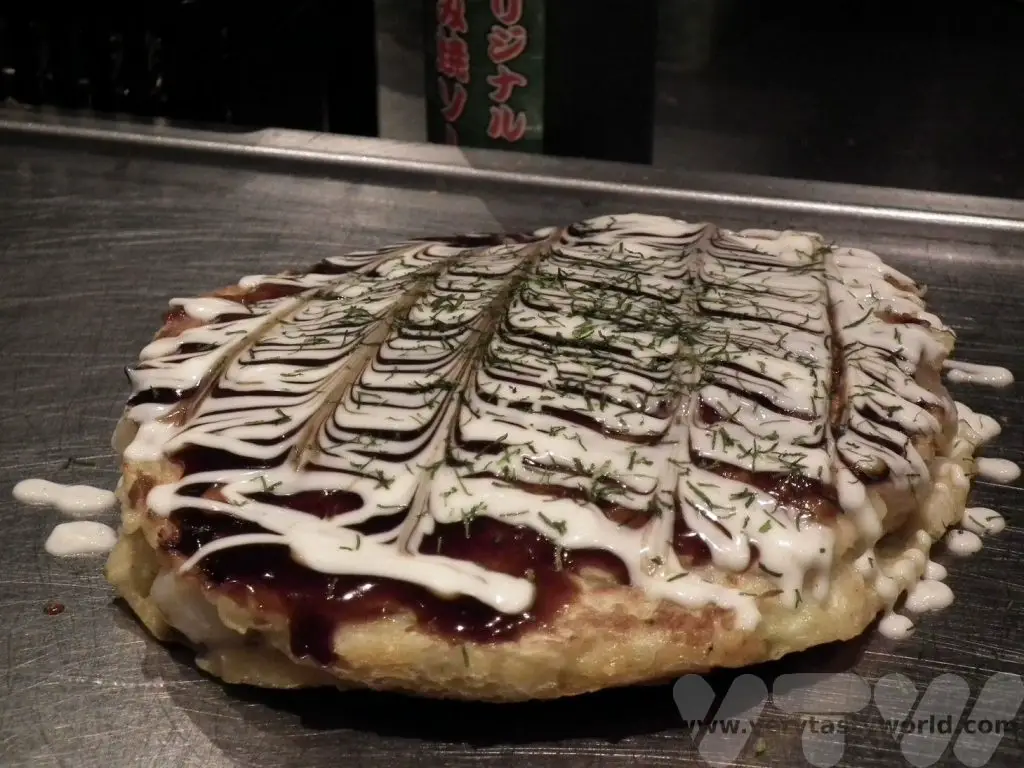
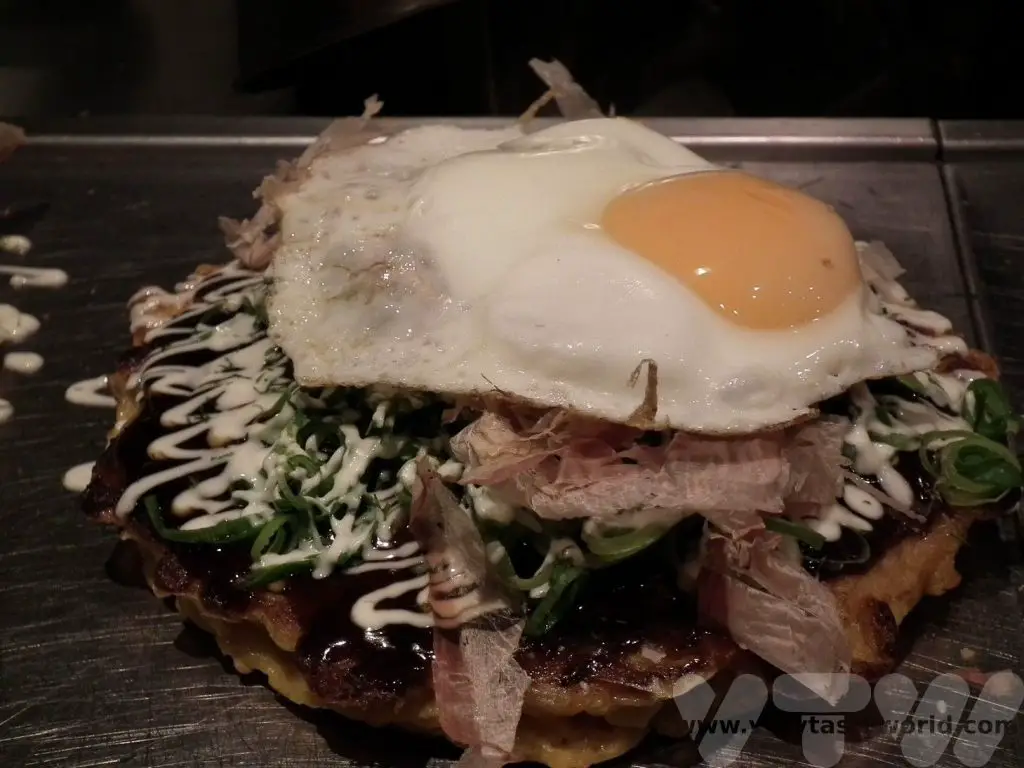
Fugu – Dare You Try Puffer Fish?
Fugu is the fish that has a formidable reputation – it’s the puffer fish, parts of which are deadly poison particularly the liver, the ovaries, eyes, and skin. The toxin basically paralyses you and you asphyxiate while still conscious. Not very nice at all.
But fugu is also a prized delicacy. The non-poisonous bits are fine to eat but absolutely can only be prepared by a licenced chef who has trained for several years. You can eat fugu all over Japan but it was at Zubora-ya, with its highly distinctive sign comprising a giant pufferfish lantern outside the restaurant, that we first tasted this fearsome fish.
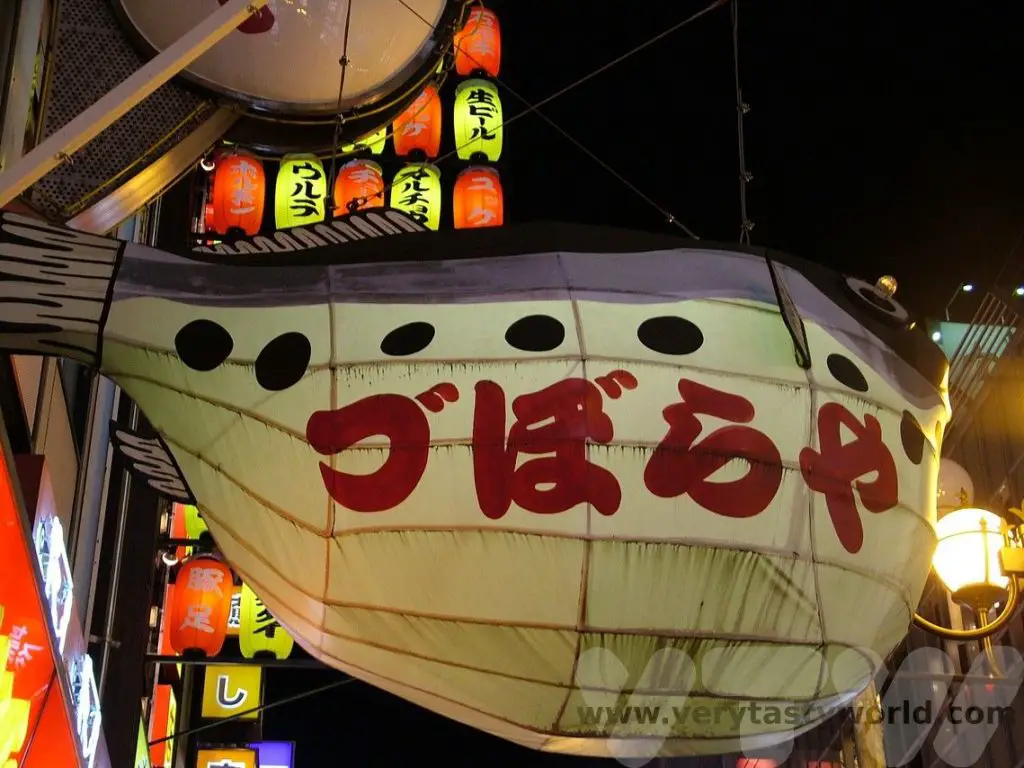
We thoroughly enjoyed a set menu at Zubora-ya – sushi and sashimi is the conventional way to enjoy fugu. It has a mild flavour and a firm texture that is something like a cross between squid and monkfish. It was delicious. And we survived!
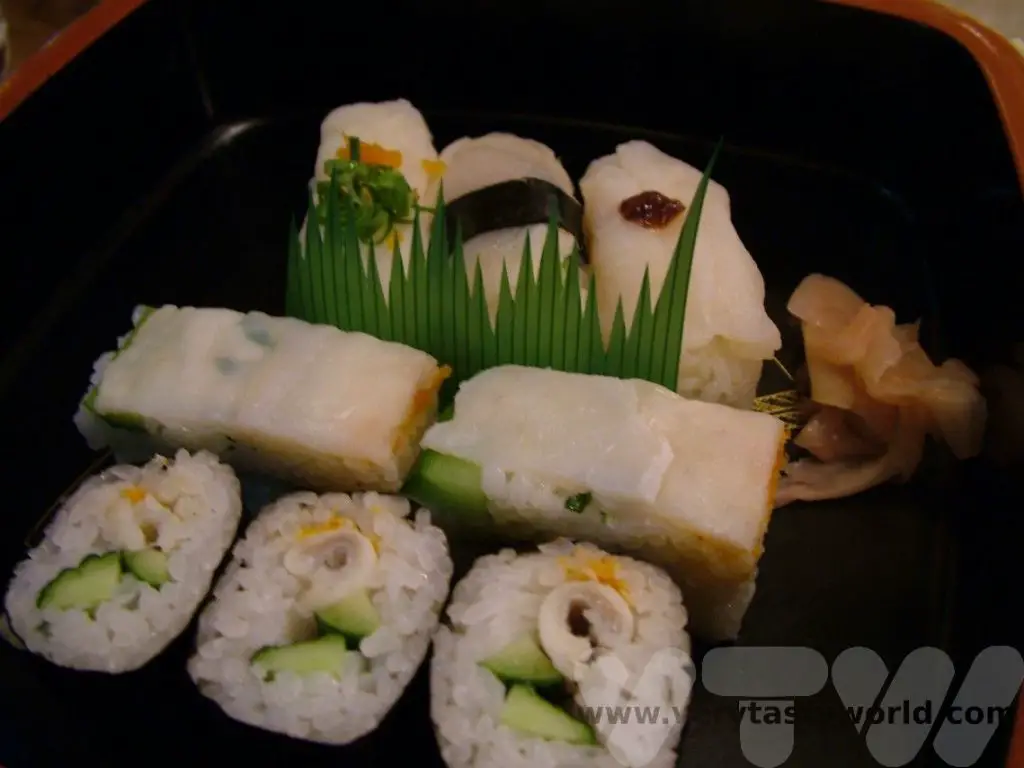
Sadly, Zubora-ya had to close during the pandemic and has not reopened.
Kani – Crab Heaven
Kani Doraku is another distinctive restaurant which has a model of a giant crab waving its pincers on the outside wall, beckoning you inside (well, that’s our interpretation!).

We have eaten here several times and always had a hugely enjoyable meal. Again, it’s a multi-storey building and, depending on how busy it is you may eat within the restaurant or be taken to a private room with tatami mat flooring and a telephone. The telephone was a bit daunting first time around but we picked up the phone and said, ‘kite kudasai,’ (please come here) and someone came along to take our order – which largely involved pointing at a picture menu. Even though it’s a large restaurant it’s very popular these days so it’s worth booking. There are actually multiple restaurants of this chain along Dotonbori, so check out the others if the first one you try is full. (The most popular is closest to the Glico Man.) The set menus aren’t cheap but they are good value and the food is utterly delicious.
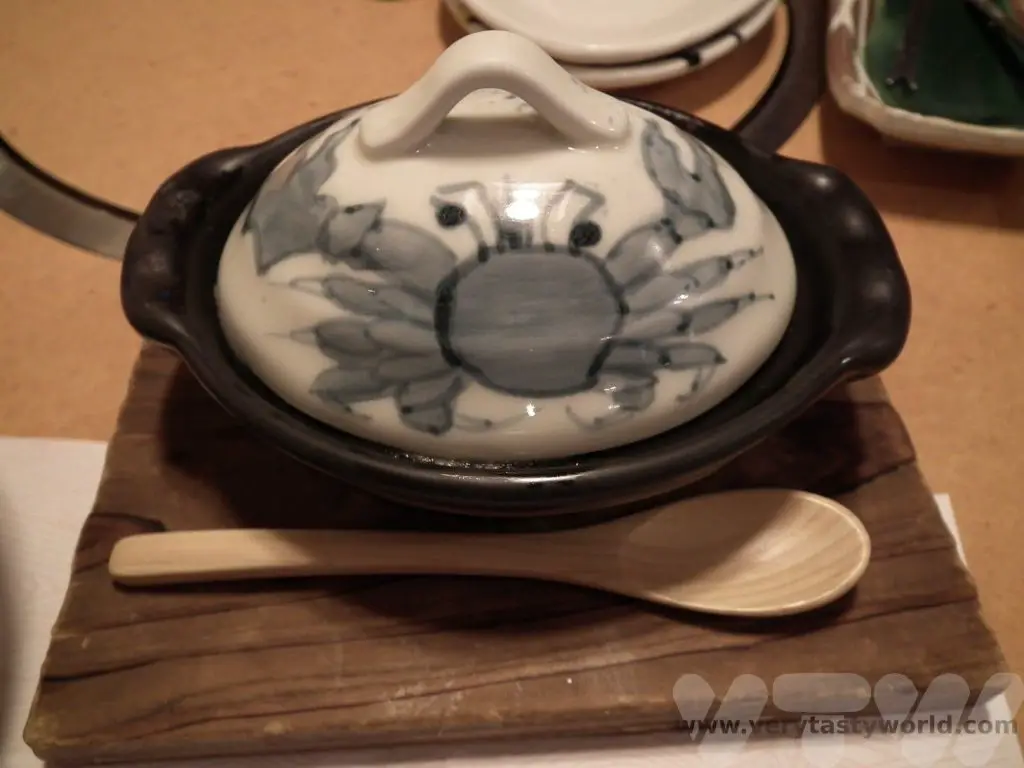
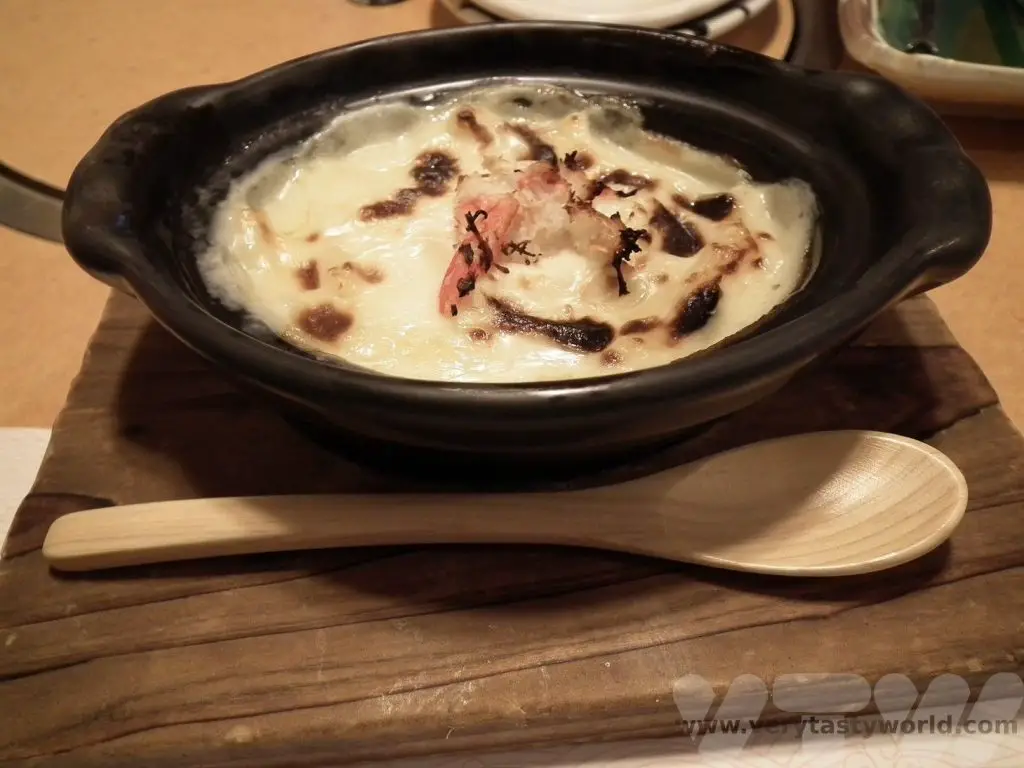
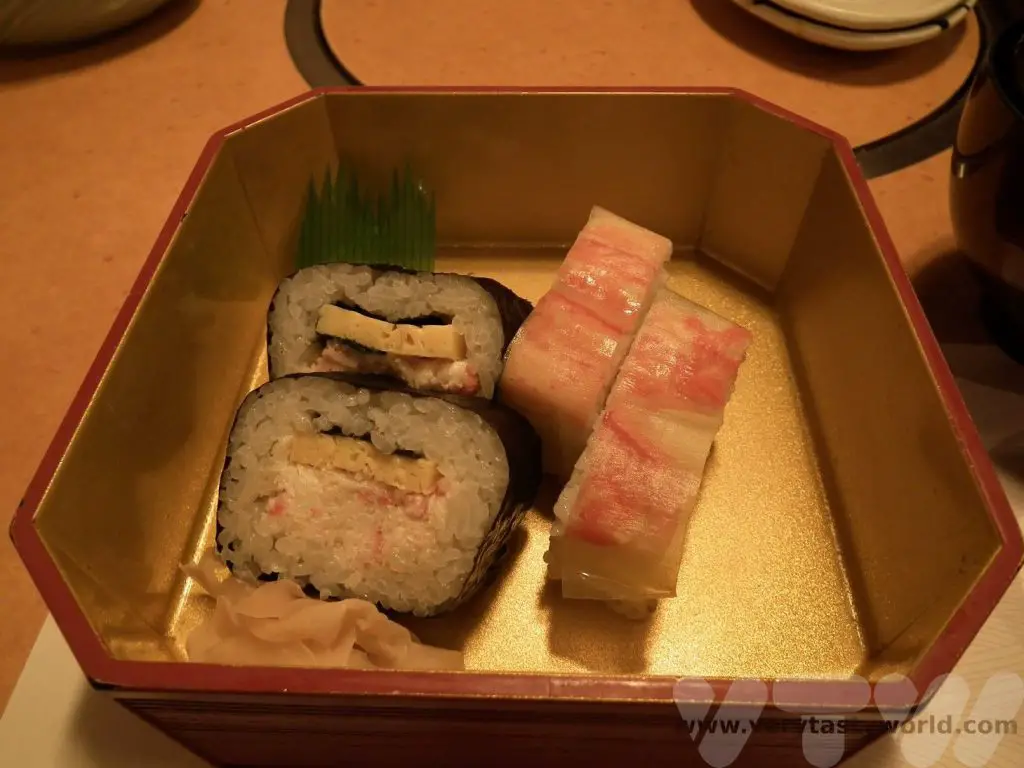
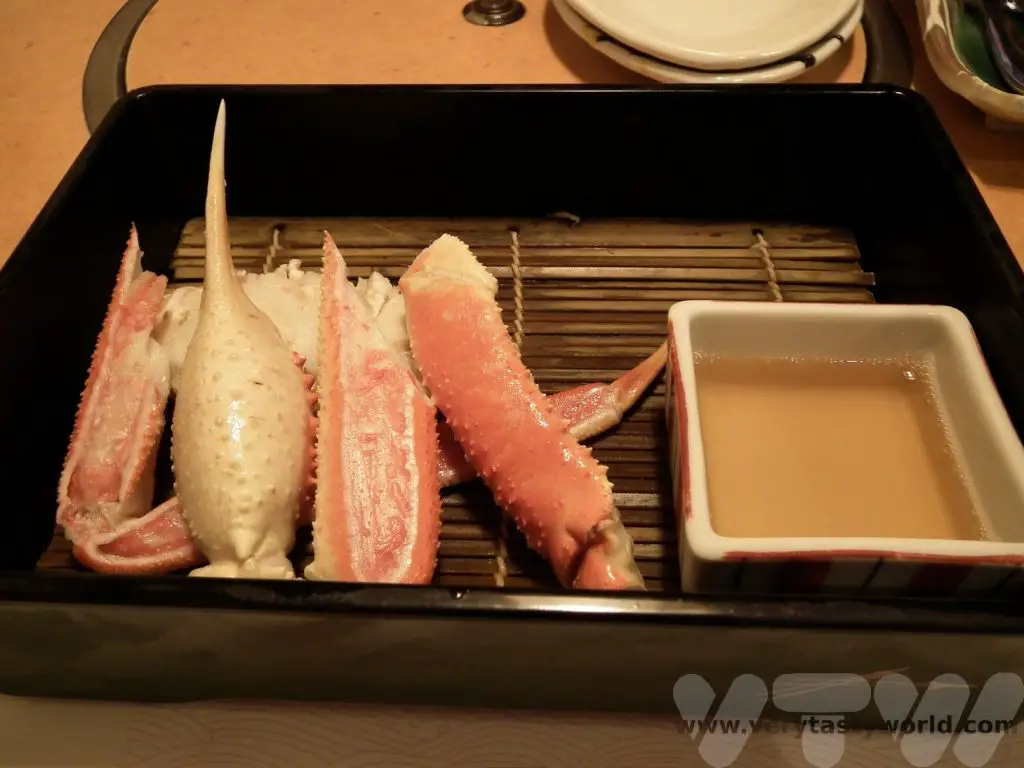
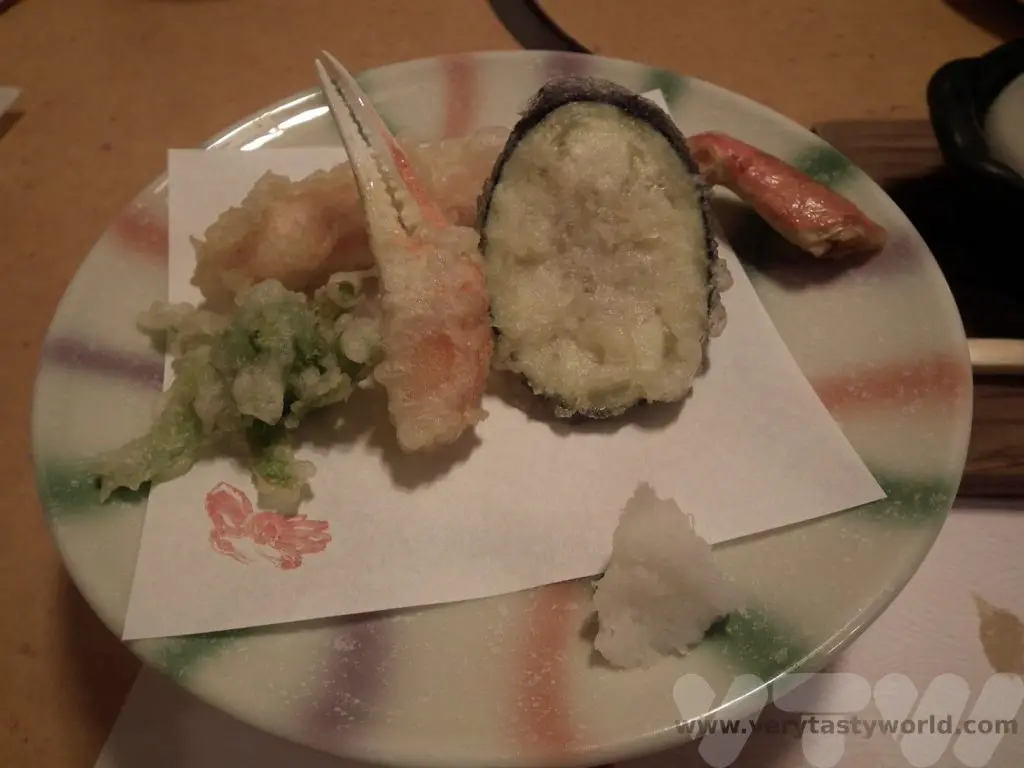
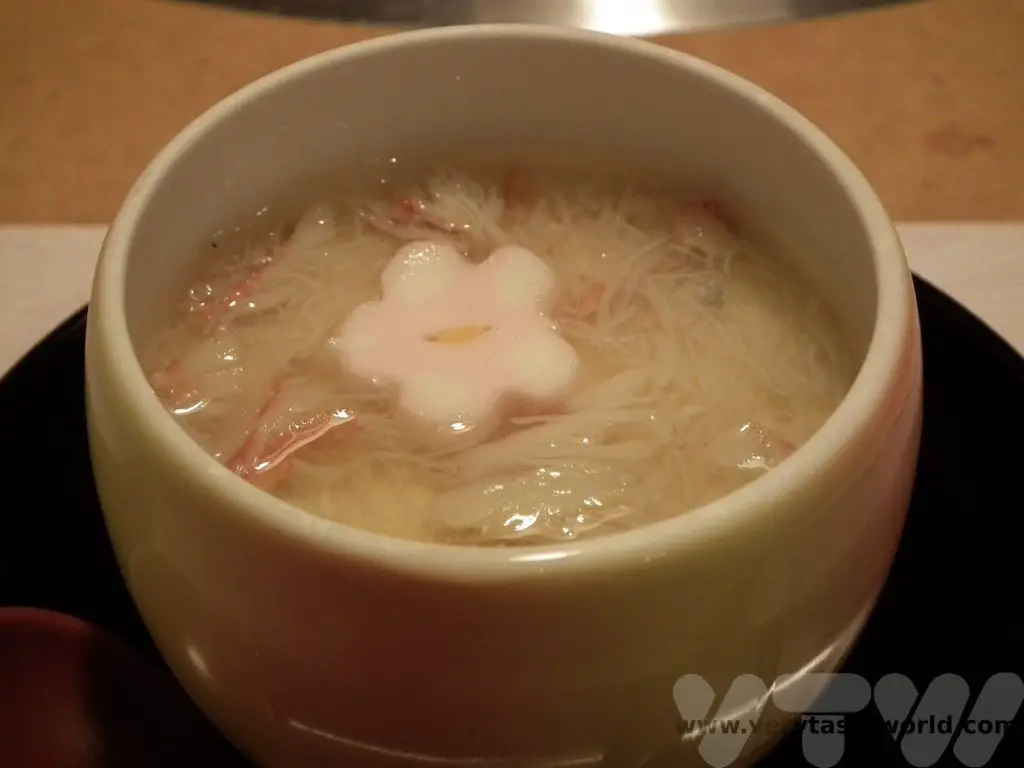
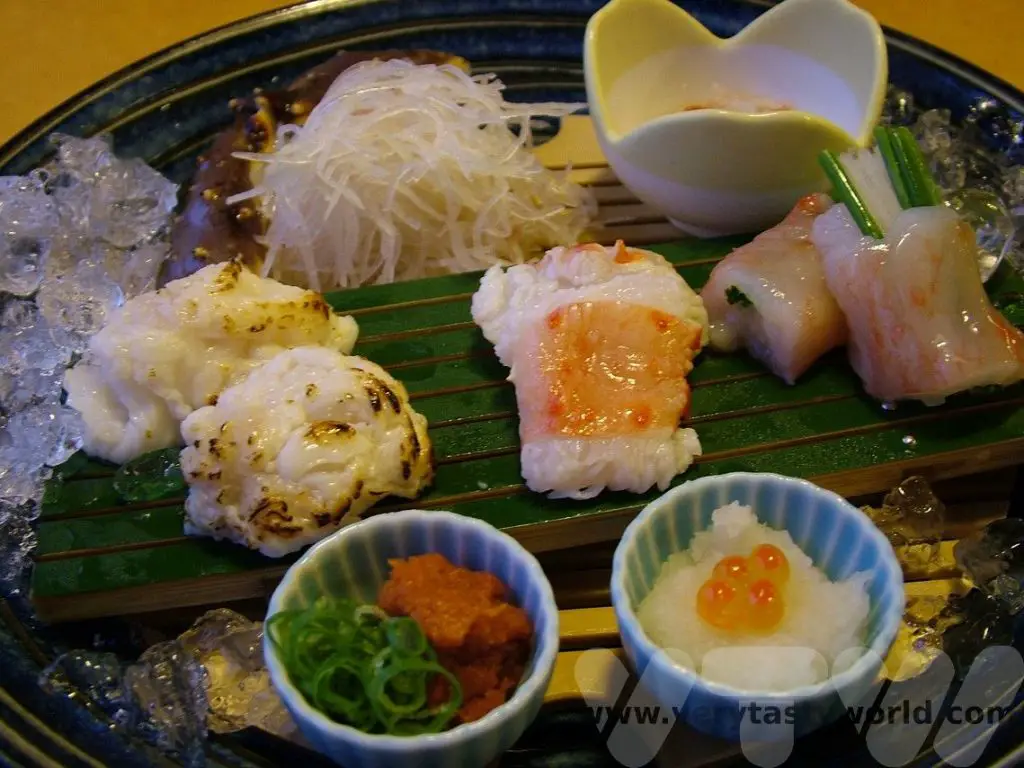
We’ve enjoyed crab sushi and sashimi, crab chawan mushi (steamed egg custard), crab tempura and crab gratin with a clear soup and matcha ice cream for dessert. Utterly delicious.
Other Dotonbori Establishments
There are loads of other restaurants along Dotonbori and the surrounding area. Kuidaore was an enormous eight storey restaurant founded in 1949. It was recognisable by its iconic Kuidaore Taro Clown, a vaguely creepy mechanical drumming puppet at the entrance. Sadly it closed some years ago but the building was populated by different shops and restaurants in what’s now known as the Nakaza Cui-daore Building.
If you like ramen noodles (and who doesn’t?) there are three Kinryu restaurants along the street. Kinryu translates as ‘golden dragon’ and the restaurants can easily be found by their distinctive dragons on the hoardings above the shopfront.

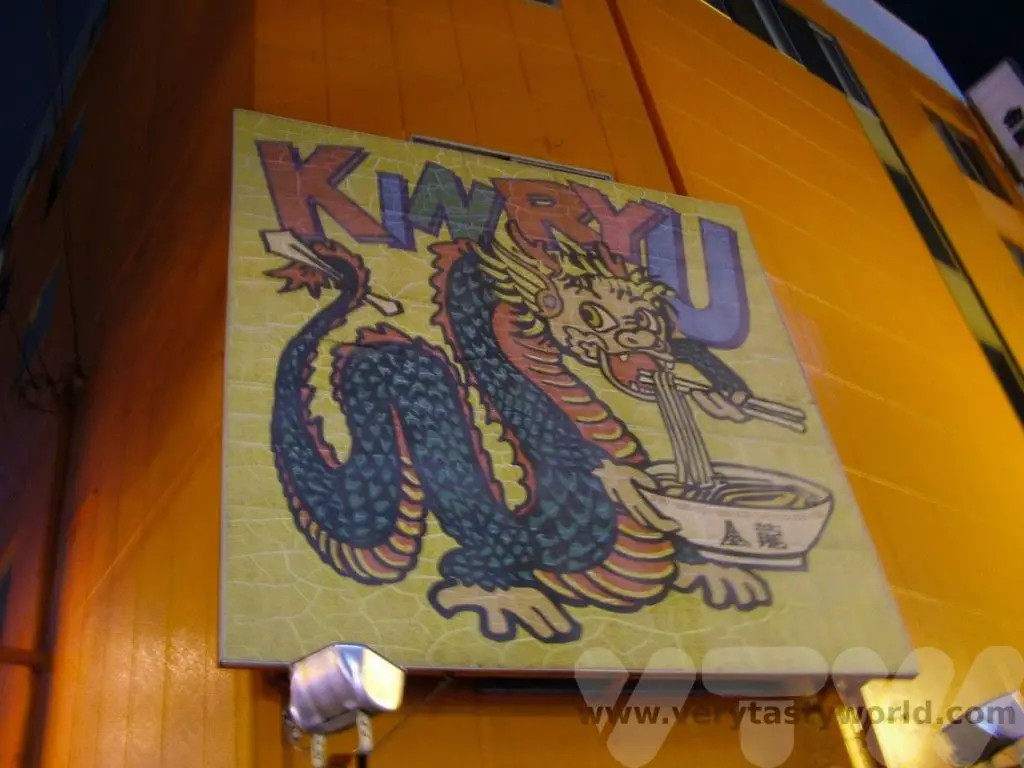
And even the standard restaurants on Dotonbori, those without the amazing neon signs, are worth checking out. One of the great things about dining in Osaka – and indeed throughout Japan – is that you don’t need to speak or read Japanese. Many restaurants will have an English, Chinese or Korean menu and those that don’t will often have a picture menu or, better, realistic models of the food in the window, usually with prices. You can take a photo of your desired dish or even take your food server outside and point to the dish you want.
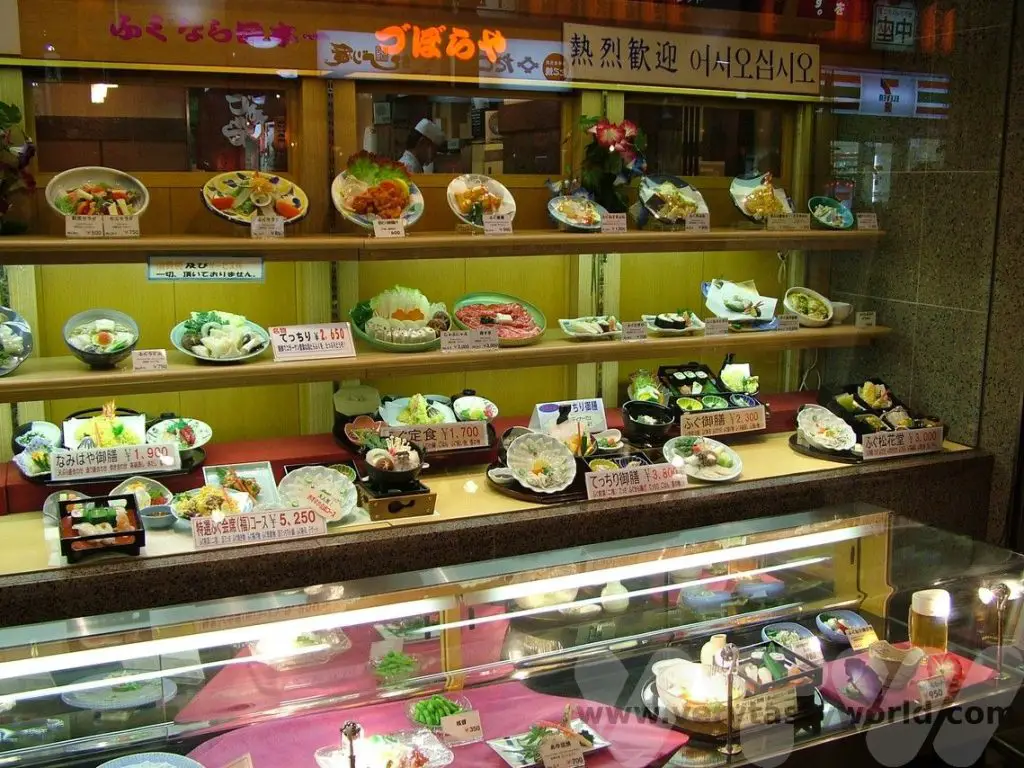
The models of the food are surprisingly realistic and many are made in Osaka. We managed to find a shop that sold them but they are hideously expensive, so we treated ourselves to a couple of sushi fridge magnets as a souvenir.
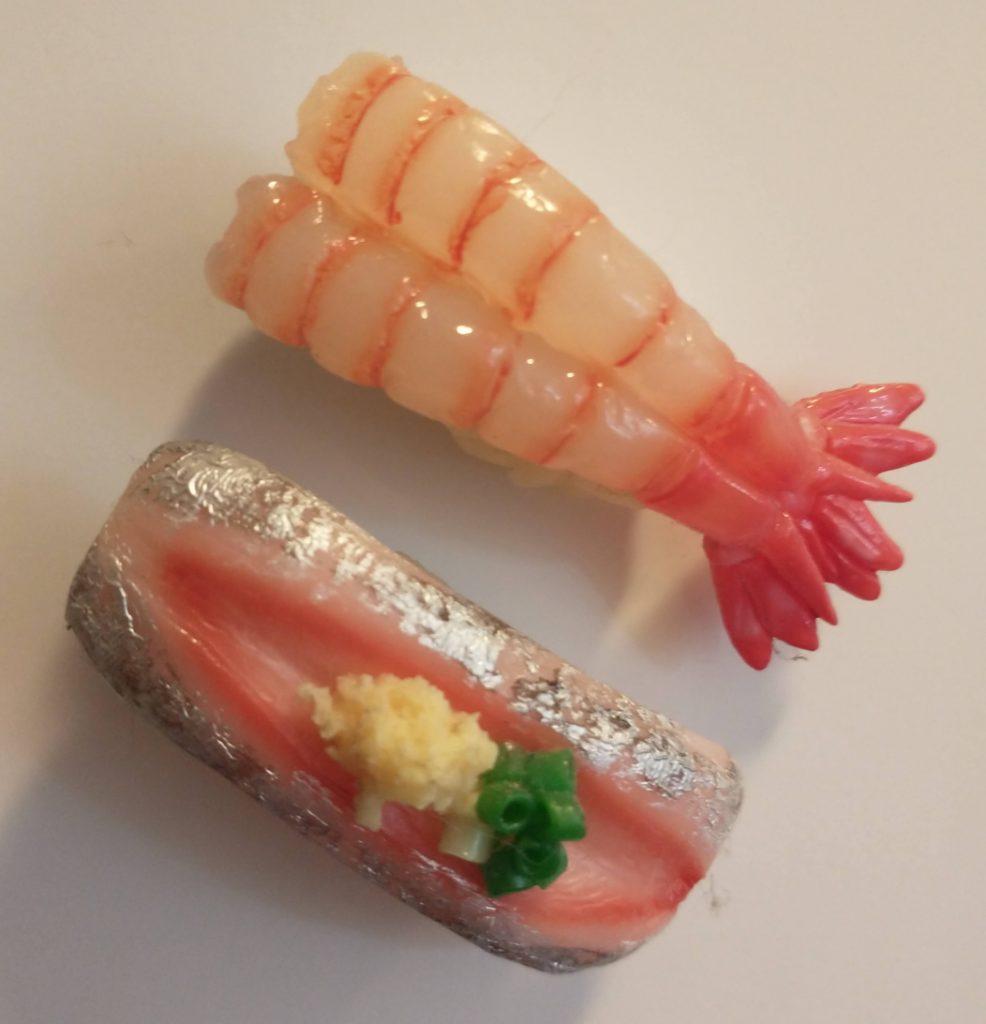
Related Posts You May Enjoy

- Recipe: Simmered Shiitake Mushrooms
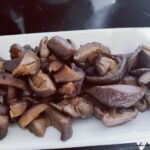
- How to Use Public Transport in Japan

- RECIPE Oyakodon Donburi

- Planning a Trip to Japan

- The Makanai: Cooking for the Maiko House

- Setsubun Food – Bean Throwing Day

- The Gassho Farmhouses of Rural Japan
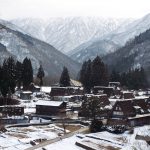
- Recipe: Japanese Simmered Pork Belly – Buta no Kakuni

- RECIPE: How to Make Umeboshi

World’s Best Breakfasts -Breakfast of Champions!
….And Why It’s Often Okay to Go Off-Menu When Travelling
Many years ago we were excitedly choosing all sorts of delicacies at the breakfast buffet at our hotel in Yerevan, Armenia, when another guest glanced at our plates, shrivelled their noses in a very patronising manner and exclaimed, “Ugh! Salad? For breakfast?” It’s widely considered to be most important meal of the day but so many people seem to be set in their ways when it comes to eating a hearty breakfast. So much that hotels all over the world seem to offer pretty much the same fare. Western visitors are often offered fried food such as bacon, sausage and eggs with bread-based accompaniments and Eastern visitors are usually offered rice or noodle dishes. All these dishes are generally familiar to the tourist and often don’t reflect the traditional breakfasts of the country they are visiting. Here are some of the world’s best breakfasts.
Maybe it’s because people don’t feel so adventurous first thing in the morning, and that’s fair enough, but they may be missing out. Thing is, we’re British and can have bacon and eggs any time we like. (Although, to be honest, we haven’t cooked a fry-up for years as it’s quite a lot of effort.) We’d much rather eat a typical breakfast using local ingredients from the country that we are visiting.
It’s quite common for hotels to ask their guests to pre-order breakfast. It makes sense, they know what they need to order in beforehand and this can help minimise food waste. There is usually a form with tick boxes and you can choose from a variety of typical breakfast offerings. But if you do want to eat like a local, we’ve learned that many hotel restaurants are happy to cook you a regional breakfast. We’ve discovered that very often it’s absolutely okay to go off menu.
It all started in Uganda when we breakfasted at a lodge with a local guide. We were eating standard fare but our curiosity was piqued when something entirely different was brought out for him. On asking, we learned that it was a rolex – a chapati with a layer of omelette on top, then rolled into a spiral cylinder, perfect for munching on. So the next day we asked the lodge staff if it would be possible for us to have a rolex for brekkie and they were happy to oblige. It’s great – tasty and filling – a good start to the day.
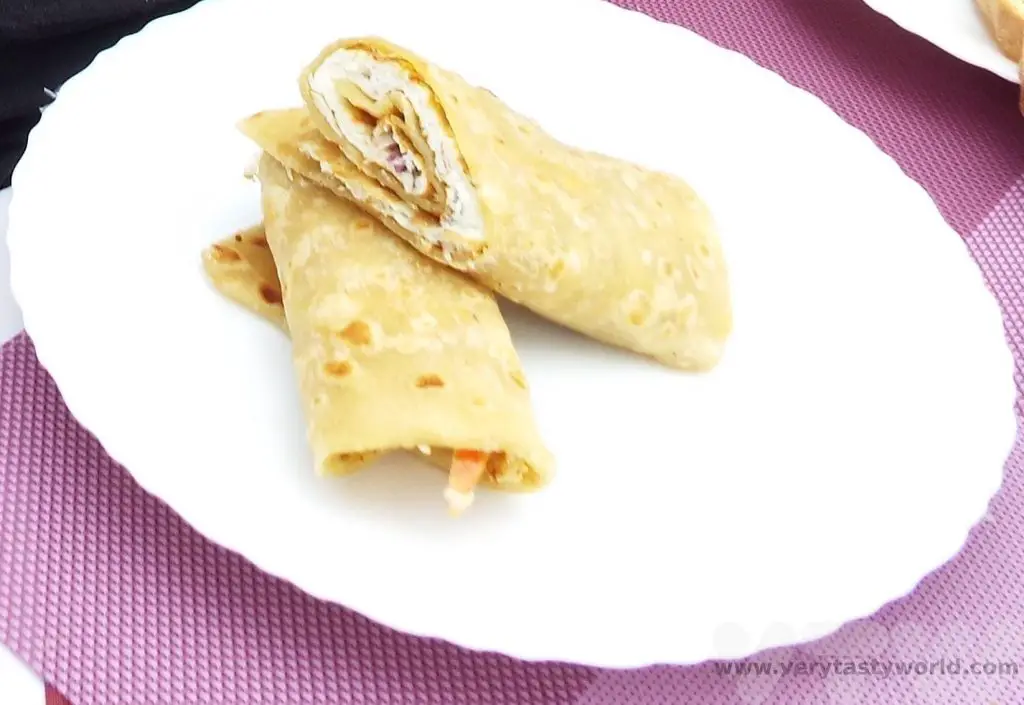
In Nepal we were given a standard pre-order form to complete (eggs, bacon, sausage, toast…) to pre-order breakfast for the following morning. We politely asked whether it was possible to have a local breakfast instead. We didn’t specify any dish – just asked for local food. They were delighted. The following morning we were served a marsala omelette accompanied by a joyous curry and roti with home-made yoghurt. It was delicious.
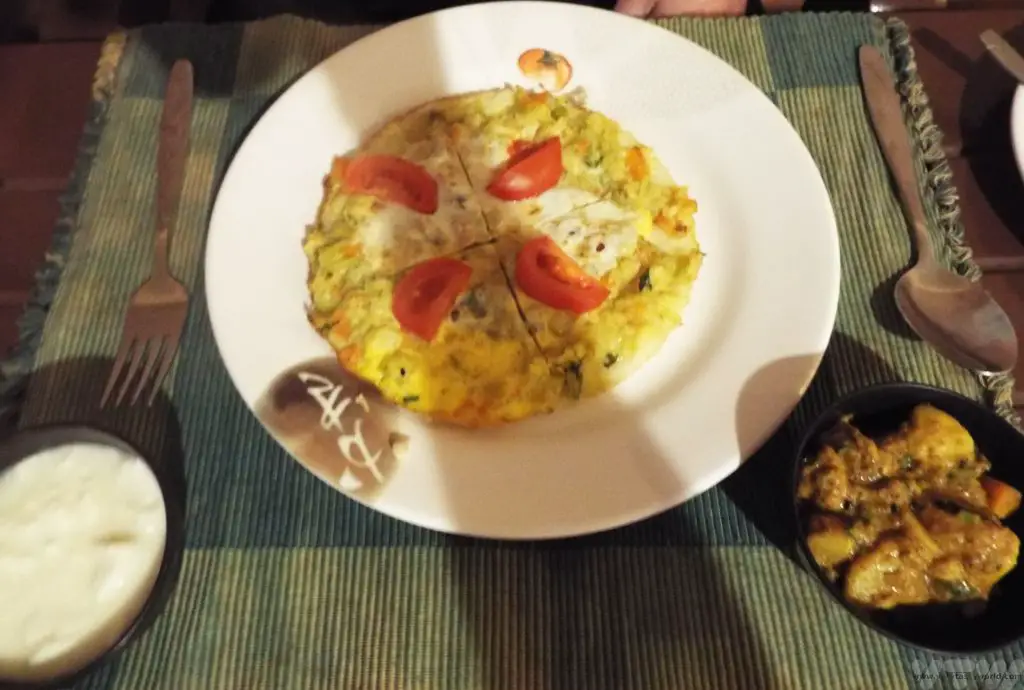
One of the world’s best breakfasts is gallo pinto from Costa Rica. It’s so popular it is often eaten for lunch and dinner as well. Which is just as well because it tastes great and is also really healthy. It comprises rice and beans and is usually accompanied by a fried egg at breakfast. Other accompaniments to start the morning include sausage, fried potatoes and some salad.
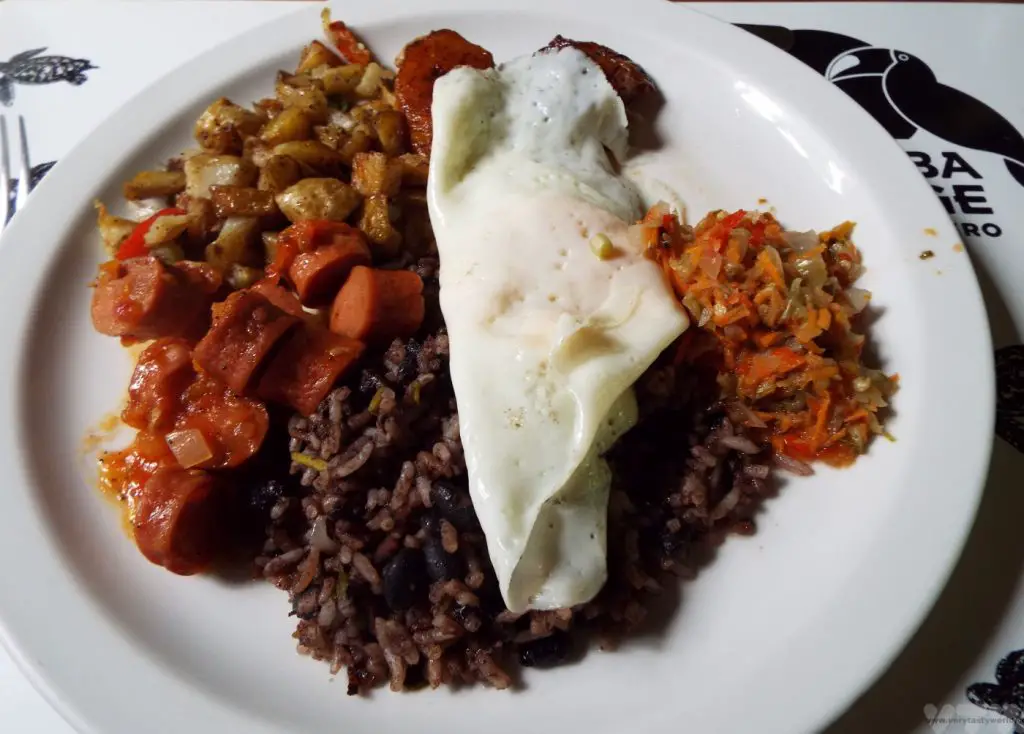
A dosa for breakfast in South India is an absolute joy. This is a pancake traditionally made from rice and dal (lentils) which are ground to form a batter and then fermented. The batter is cooked on a hot plate to form a large pancake and served with chutney – coriander, coconut and tomato are particularly popular.
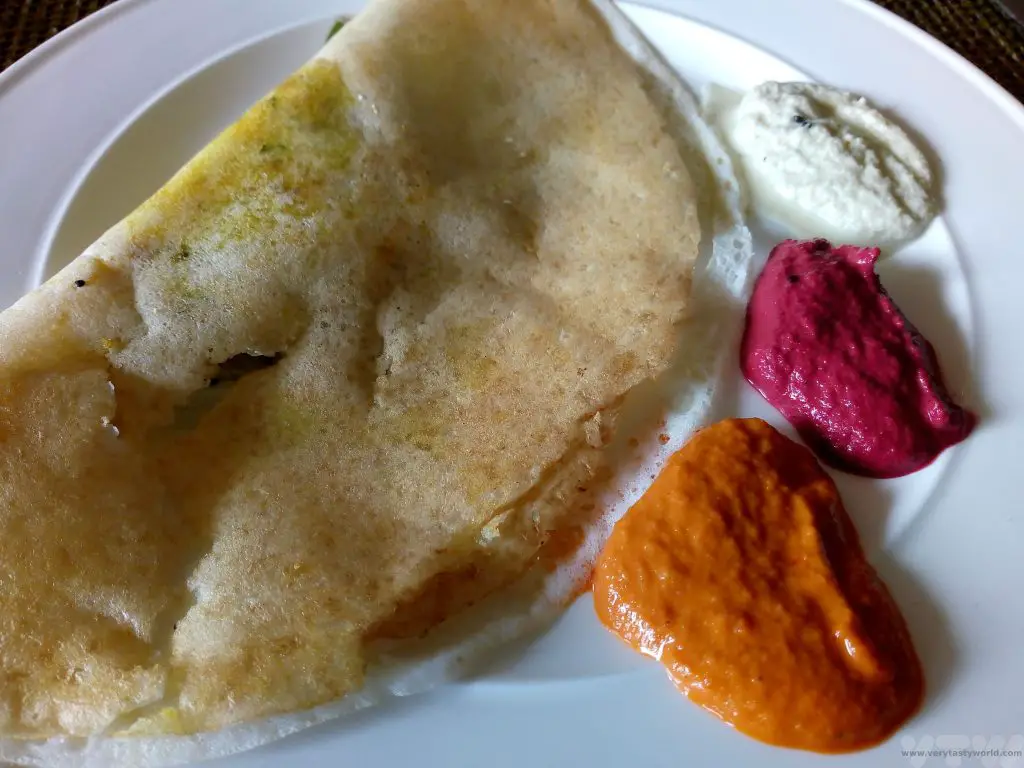
In Vietnam breakfast usually took a buffet form but often there were chefs on-hand to cook some food to order. We were always offered Pho – a tangle of noodles, freshly cooked and served in a yummy broth, topped with meat and vegetables. You pick up a side plate and add herbs, chilli, limes and other delicious items so that you can create your own personalised taste sensation. The liquid of the broth also ensured that we were thoroughly hydrated for the day ahead.
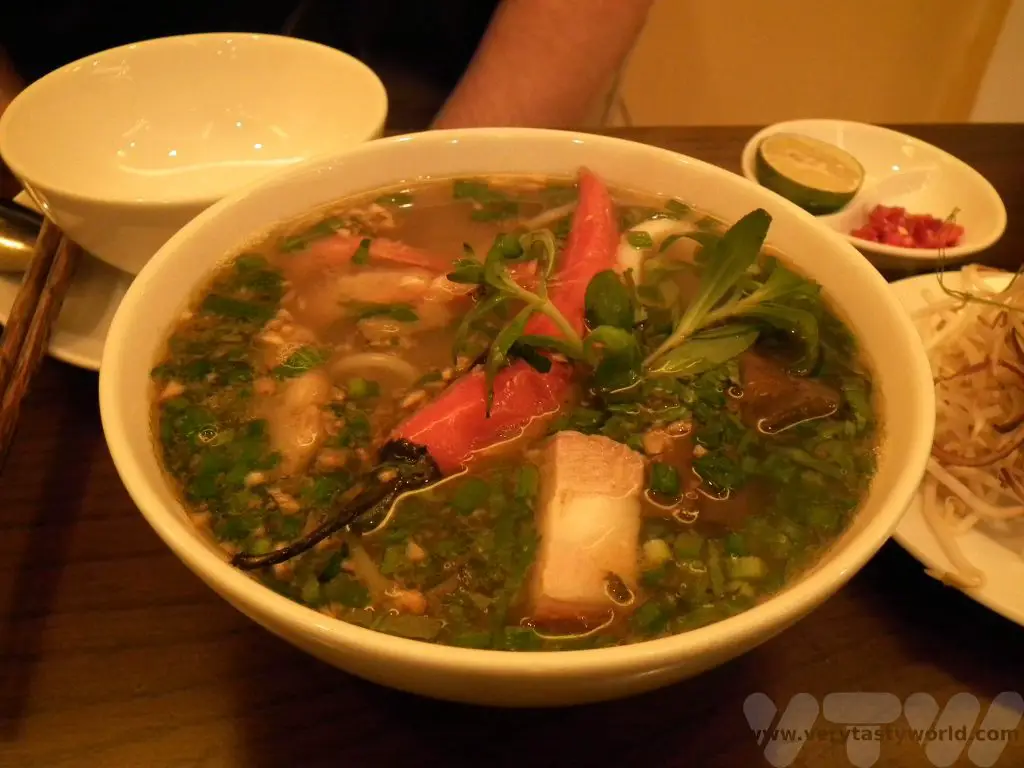
Japan also offers some of the world’s best breakfasts. A Japanese brekkie often comprises grilled fish, vegetables and pickles, maybe with tofu, dumpling and an omelette.
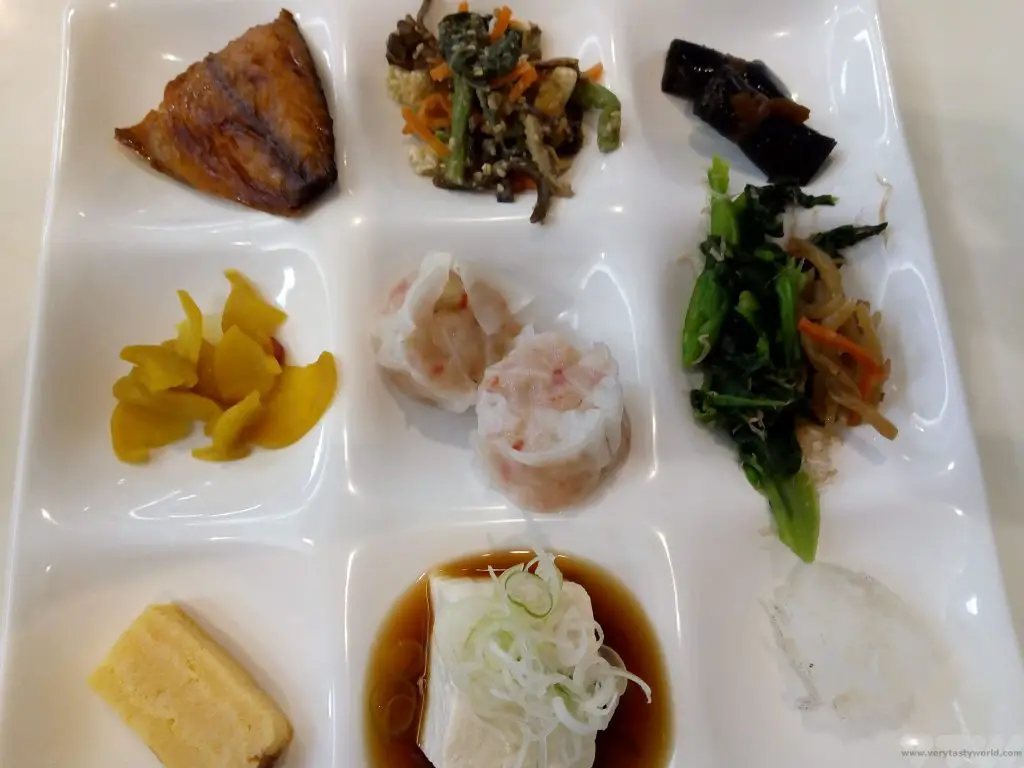
These are accompanied with a bowl of rice, into which you could crack a raw egg mixed with shoyu (soy sauce) – the egg sort of cooks in the heat of the rice – or that famous smelly fermented soybean concoction, natto, maybe with some sliced negi (similar to spring onion). Just grab a slice of nori (dried seaweed), place it over the rice, then using a pincer movement with your chopsticks grab a portion of rice with the nori. Scrumptious. (It’s worth noting that if you are at a breakfast buffet in Japan the eggs on offer may well be raw – be careful when cracking them.)
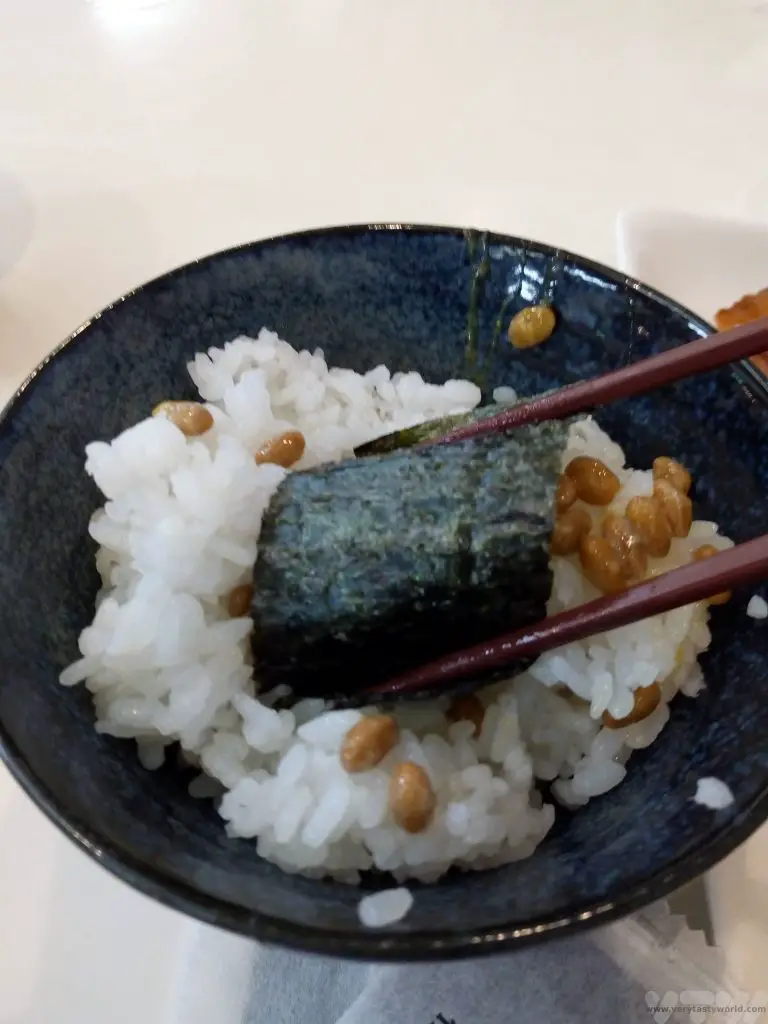
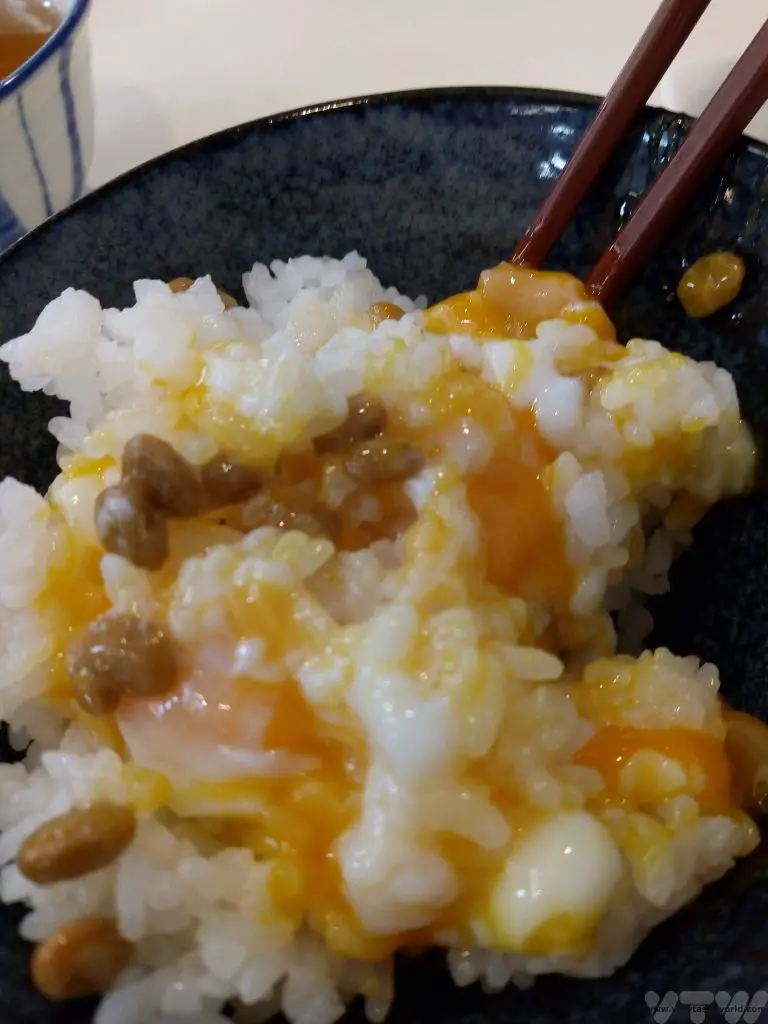
World’s Best Breakfasts – Back At Home
And, of course, whenever we are staying away from home in the UK, we’ll always have an honest-to-goodness fry-up. Sausage, bacon, egg (usually fried, poached or scrambled), black pudding, mushroom, tomato, beans and sometime a hash brown are the usual components.
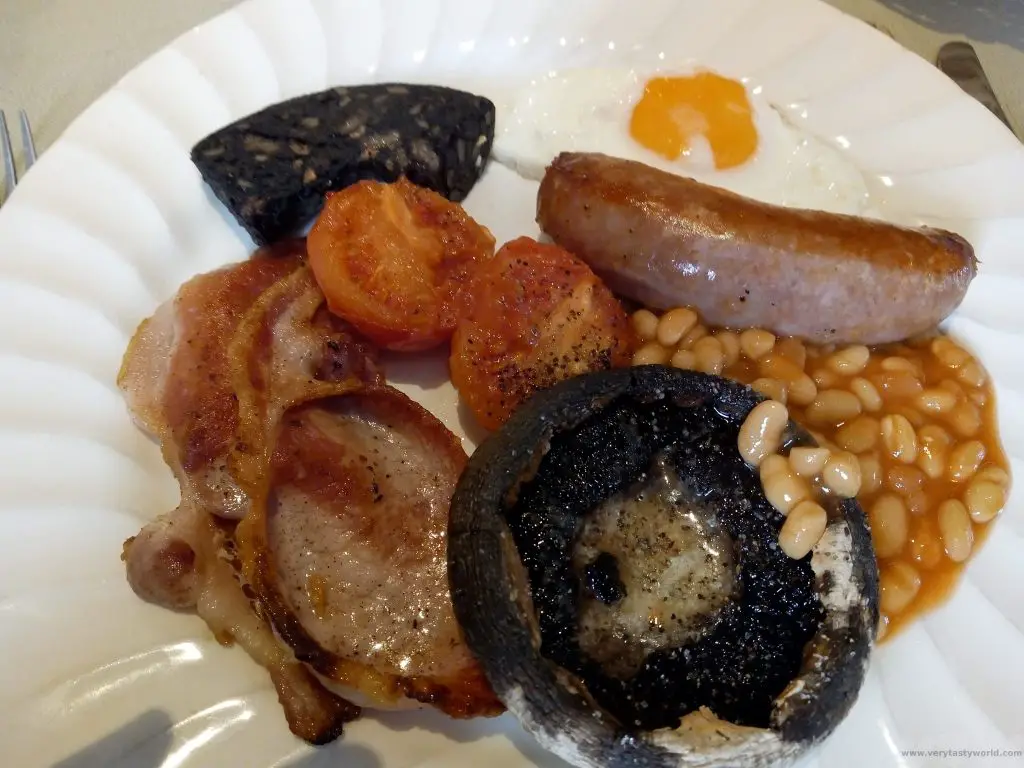
We recently discovered that the best possible place for a full English breakfast that we’ve ever eaten is actually in our home town. While many top breakfast establishments boast locally sourced food (which is, of course, delicious), The Gourmet Food Kitchen in Fargo Village, Coventry go one step further and actually cure their own bacon and make their own sausages and black pudding. And that’s just the start: The hash brown (never the most fabulous component of breakfasts) is a home-made bubble and squeak, a glorious blend of fried potato and cabbage. The beans have never seen a tin – they are home-made baked beans in a rich tomato sauce. Chef Tony even makes his own rich, tangy and utterly delicious brown sauce to accompany the feast.
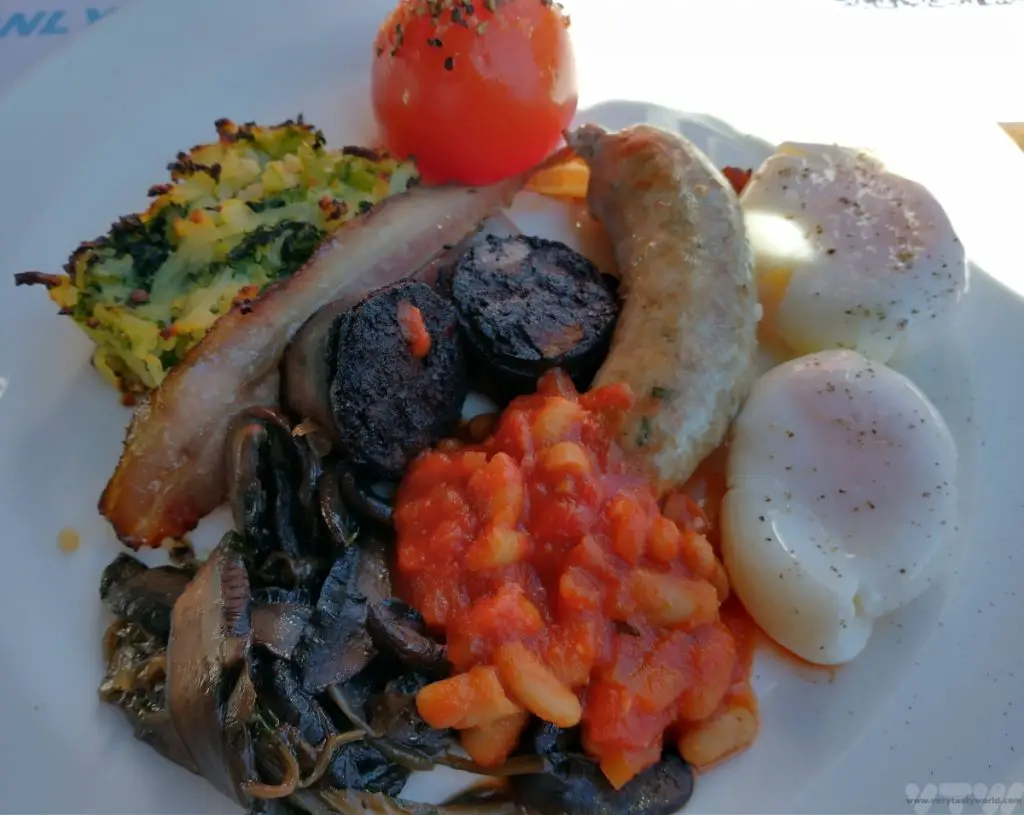
Related Posts You May Enjoy

Toasting Tradition in Georgia
Cheese and Toasting
There is a legend that when God was handing out land to the nations of the world, the Georgians were so busy feasting that they lost their place in the queue and there was no land left for them. But when they invited God to join the party, he enjoyed himself so much that he gave them the best bits of land that he had been saving for himself. Enjoying good food and wine is an important element of life in this part of the world and the local people have a wonderful toasting tradition in Georgia.

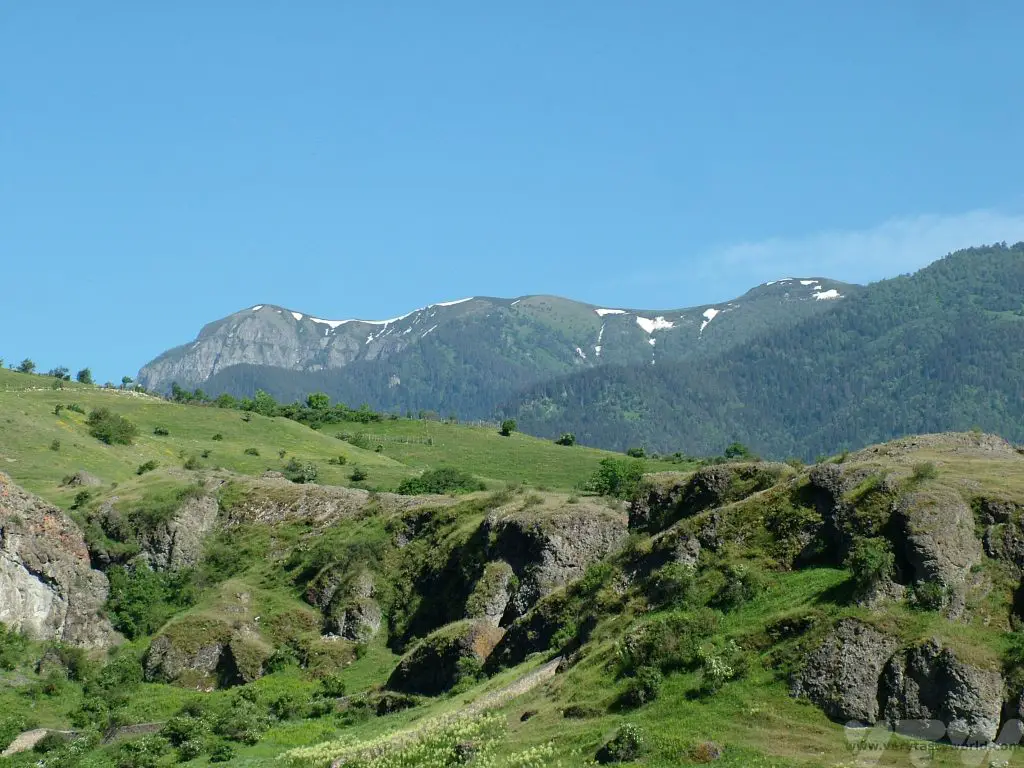
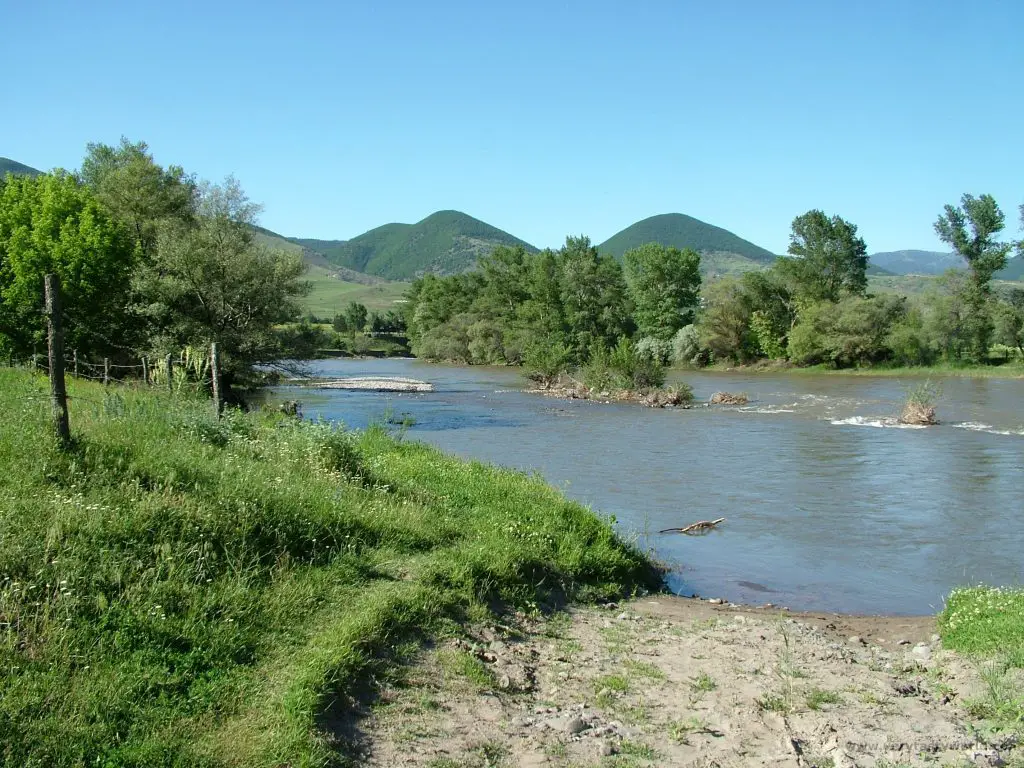
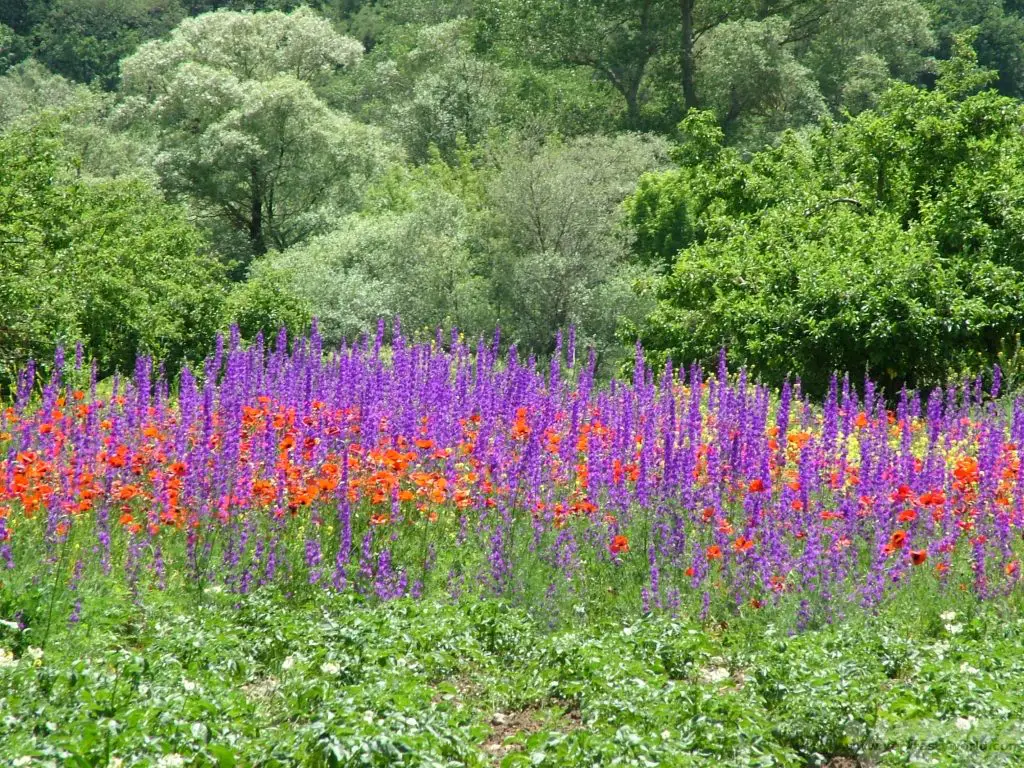
We visited a number of families, ostensibly to see how they produced wine or made cheese, but everywhere we stopped we were greeted by the most amazing hospitality and generosity. Meals would last several hours and involve large quantities of superb fresh food along with overflowing glasses of wine and chacha (grape vodka). Most houses we visited grew their own grapes and made their own wine. Many had a still.
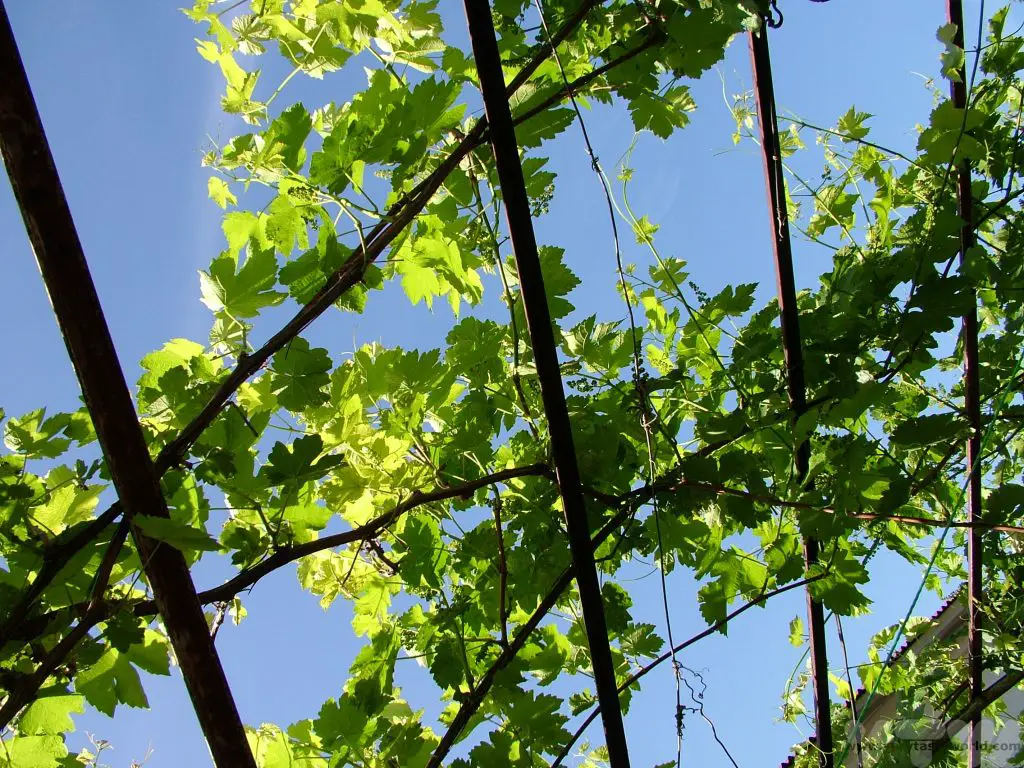
Toasting is a tradition in Georgia. You don’t tend to drink at your own pace, but at the behest of a toastmaster (tamada). A merikipe is on hand to make sure that glasses are always full and the wine never seems to stop flowing. Georgians toast their enemies with beer (we had a hilarious enemy-toasting session with our guide one night) – it is wine and chacha that are appropriate for feasting.
We didn’t go to a formal grand feast (supra), but had many, many meals at guesthouses and family homes and we followed the toasting tradition each time. Meals are designed to last the evening – they comprise several scrummy dishes laid out on the table. Everyone just helps themselves and offers food to their dining companions. And, of course, every meal included a ubiquitous, delicious and calorie-loaded cheese pie (khachapuri).
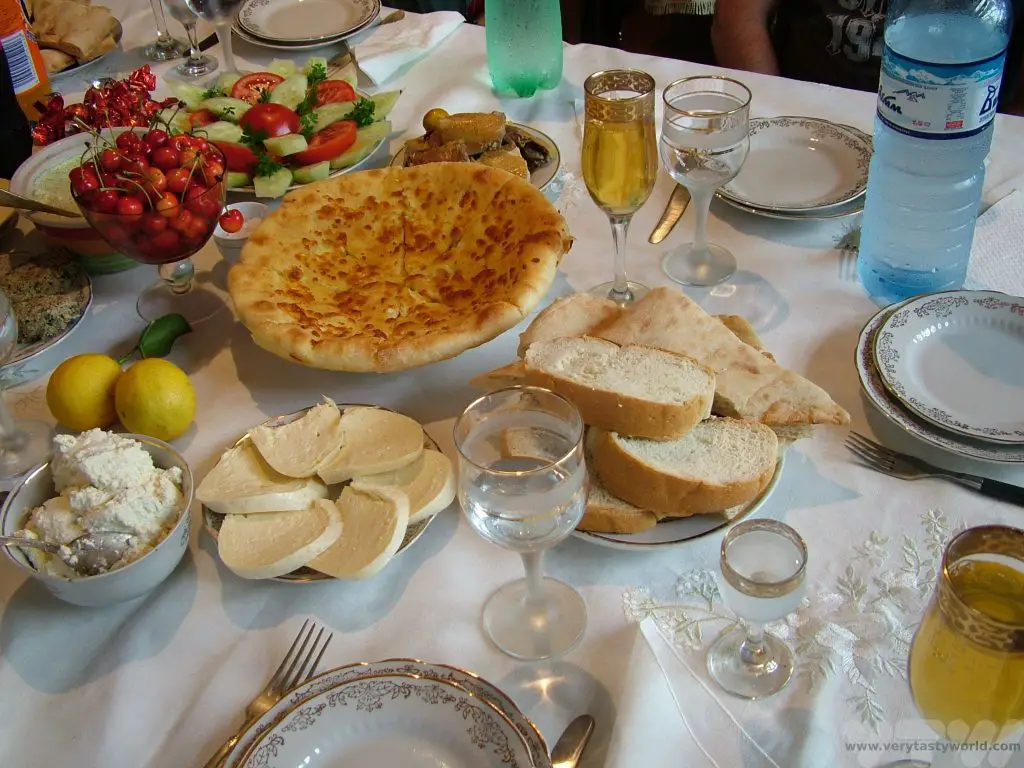
Toasting Tradition in Georgia – Etiquette
At regular intervals throughout the evening the tamada proposes a toast. Everyone adds their wishes and much wine/chacha is consumed. If you are toasted, it’s appropriate to thank everyone for their good wishes and later ask the tamada if it is okay to reciprocate with a toast of your own. One guesthouse supplied us with a very large jug of strong homemade red wine, made from the local Sapaveri grape, which was utterly splendid and eminently drinkable, to accompany the enormous evening meal they had provided.
We ate with the family. Our driver was both tamada and merikipe and led the toasting throughout the evening. (At the end of the day, naturally, when no further driving was required.) On finishing the jug our excellent merikipe asked if we wanted more wine. We said we’d join him in a tipple but only if he was partaking, not realising that he would return with another enormous jug. Gulp.
You can toast anything and everything. We were toasted several times as ‘easy guests’ (people who were thoroughly enjoying the trip, didn’t make a fuss, and were always on time) as well as ‘guests that didn’t go to bed at 9pm but were happy to stay up late feasting and enjoying the hospitality of our hosts.’ We reciprocated by toasting our hosts, Georgia, Georgian hospitality, wine, food, cheese pies, family, friends, finding Mr Right (for our guide), young people, old people, men, women, happiness, health, friendship between our countries, anything. We easily knocked back the second jug. Amazingly we weren’t hungover the following morning. Just as well as we were due to visit three different vineyards for wine tasting – hair of the dog and all that. We did rather stagger round the Kakheti region that day.
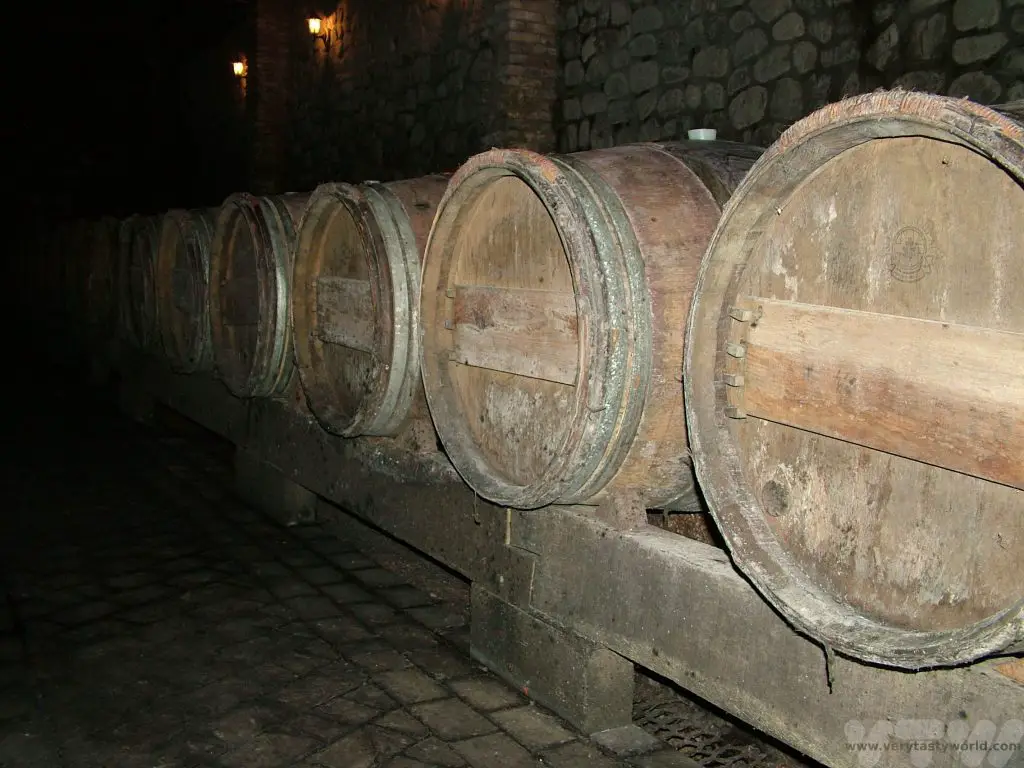
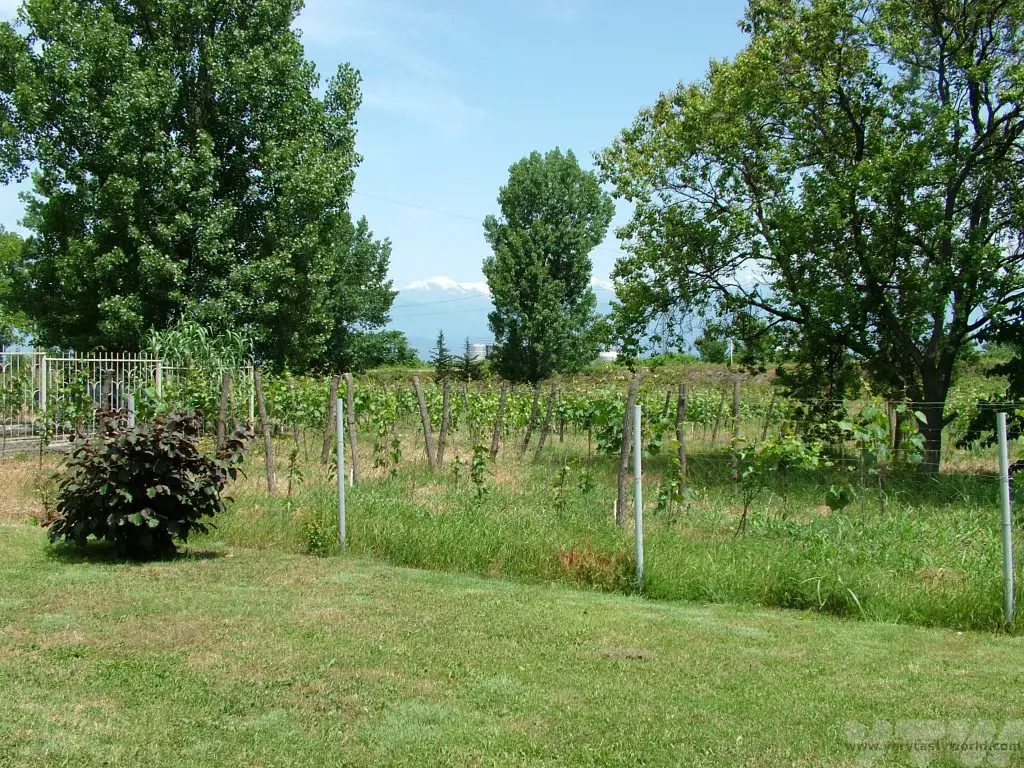
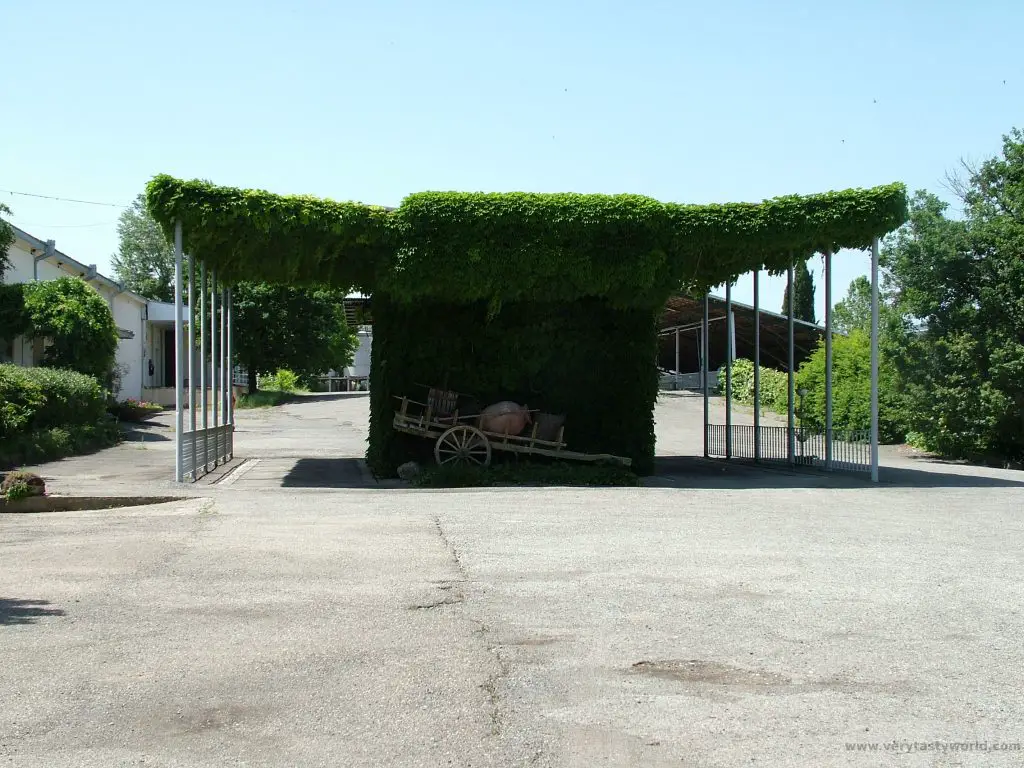
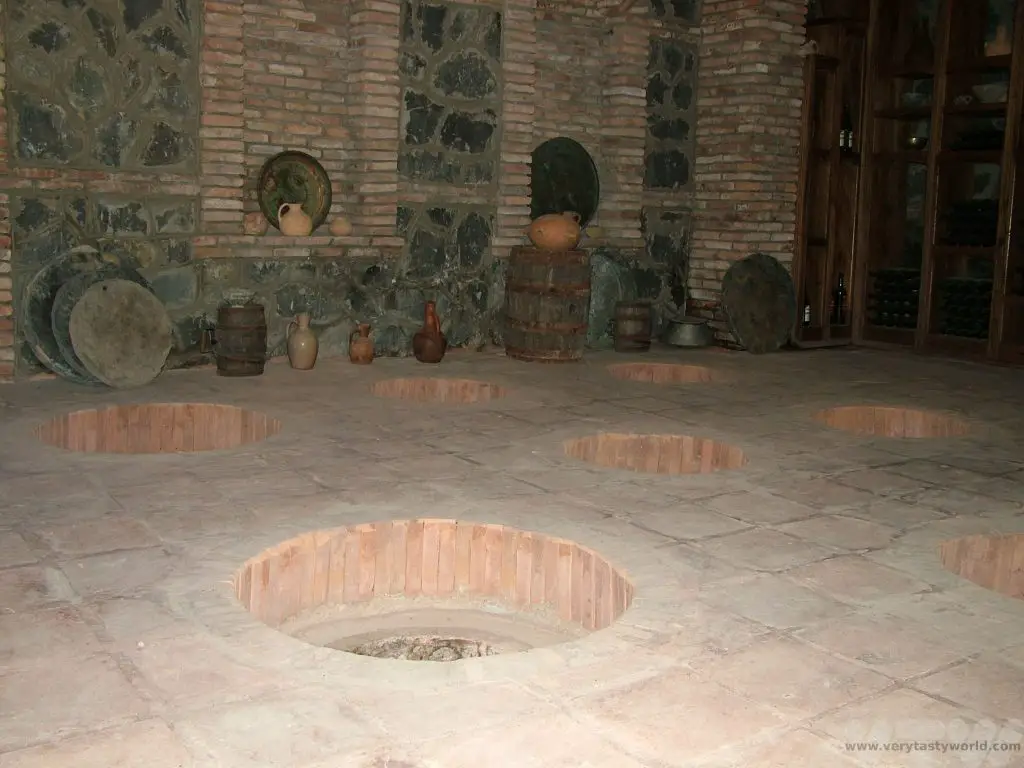
What we didn’t realise until the last day was that we had been doing the toasting all wrong. We’d been having a sip/swig from the glass per toast which seemed to us to be the best way to regulate the drinking (we’d copied our hosts, who had the same idea). Apparently the correct toasting tradition in Georgia meant that were supposed to drain the wine/chacha glass each time. Oops!
Related Posts You May Enjoy















